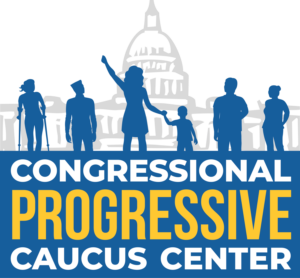Tax the Rich: Implementing a State Tax on Investment Gains
Tax the Rich: Implementing a State Tax on Investment Gains

Introduction
The concentration of wealth in the hands of the elite few impacts every facet of our lives. It is directly connected to expanding wealth disparities and the rising cost of living, the existential climate crisis and the rampant expansion of authoritarianism, and it threatens the very existence of the multiracial democracy that we strive for.
This concentration of wealth did not happen by accident; it is not the result of inevitable forces. It is a product of deliberate policy choices over decades and centuries. Billionaires and centi-millionaires (those with at least $100 million in wealth) in America are amassing wealth, with a record 700% increase in inflation-adjusted unrealized capital gains over the last three decades.
Racism, sexism, and classism are entrenched in our current economic system, by design. As a result, Black, immigrant, and Indigenous people, working class and rural communities, women, and queer people are disproportionately exploited and denied prosperity by our economic policies. Some of these problems could be mitigated if the extremely wealthy paid their fair share toward meeting vital social needs, particularly in terms of spurring opportunities for communities experiencing structural poverty. For example, considerable research has shown that high-quality preschool can play an enormous role in helping every child reach their potential. Given the scale of wealth involved, getting the extremely wealthy to pay their fair share in taxes could raise substantial revenues toward vital initiatives like this.
Unfortunately, the absurd regressivity that is evident at the very top of our tax system at the federal level is even more evident at the state level. This is partly because income taxes, as currently designed at the federal and state level, do not reach unrealized gains. For example, billionaire Jeff Bezos was paid about $1.7 million in total compensation by Amazon in 2022, but his net worth in 2023 increased by a massive $70 billion, which amounts to almost $8 million per hour. Furthermore, states have not levied taxes on broad forms of wealth for almost a century, while other countries, including Switzerland since 1848 and Norway since 1892, have retained their wealth taxes. The extremely wealthy in America have employed armies of lobbyists to ensure that their effective tax rates are kept low and that neither federal nor state taxing authorities can effectively tax intergenerational wealth transfers.
Historically, state legislators, in collaboration with the communities most impacted by these policy choices, have led the fight in challenging corporate and billionaire power by organizing communities and building economies that empower people. Modernizing the tax code is an essential piece of this vision. Taxing unrealized gains, in particular, offers an opportunity to reverse the increasingly widening wealth disparities in the United States and to fund our future.
Note on Terminology Unrealized gains are the increased value of assets that have not yet been sold (or “realized”). |

Wealth Tax Overview
Wealth includes ownership of many different types of assets, including real estate, vehicles, and art, but the largest category among the very rich is ownership of businesses, stocks, and mutual funds. Through a series of tax loopholes dubbed “buy, borrow, die,” the ultra-wealthy can hold on to and use financial securities as collateral for loans (often securities-backed lines of credit) instead of selling investments to cover expenses. The loopholes also allow their inheritors to receive these financial assets on a legally allowed “stepped-up” basis (i.e., based on valuing the inherited stock at the current market value) without paying any capital gains taxes (McCaffery, 2019). This means that all inherited capital gains are provided a tax benefit that would not be allowed if someone sold off their financial securities before their death. To make matters worse, the ultra-wealthy would only need to retire and/or move to a state that does not tax income before realizing their capital gains to avoid state taxation (Galle et al., in press).
For example, although Jeff Bezos relied on public investments in physical and human capital infrastructure in Washington State to establish Amazon, he waited until he moved to Florida (a state without a capital gains tax) before selling $2 billion in Amazon stock, depriving Washington of almost $600 million in state revenue. It is imperative that unrealized gains are taxed, or the massive income and wealth inequalities in our country will continue to grow unabated, with the impacts disproportionately felt by communities structurally denied opportunities (Addo & Darity, 2021).
Note on Securities-Backed Line of Credit (SBLOC) SBLOC is the most common way to borrow in the “buy, borrow, die” scheme and is similar to a home equity line of credit, but financial investments are the collateral instead of real estate. SBLOC’s advantages include: (1) no capital gains taxes, (2) flexible repayment schedules, (3) simple and low-cost approval process, and (4) relatively low interest rates. |
While no state currently has a wealth tax on a broad range of assets, the U.S. does levy taxes on some forms of wealth. Property taxes are an example of taxing assets before they are sold, though overall the property tax is regressive. Another example is the federal expatriation tax, which includes a tax on net unrealized capital gains for individuals with a net worth of at least $2 million who have relinquished their U.S. citizenship. As tax codes are common but can be complicated, the policy design and implementation of a new wealth tax model could benefit from the experience of other countries, from academics who have spent time researching these models, and from state legislation at the forefront of this reform in this country.
The following is a policy design discussion focused on taxing one major category of wealth: unrealized capital gains. This discussion pulls primarily from academic sources and focuses on real-world policy decisions. This is not meant to serve as “model” language, but instead to provide policy design considerations and options that policymakers should discuss with local movement groups and impacted communities.
Notes on Income vs. Wealth “Income is the sum of earnings from a job or a self-owned business, interest on savings and investments, payments from social programs and many other sources. It is usually calculated on an annual or monthly basis. Wealth, or net worth, is the value of assets owned by a family or an individual (such as a home or a savings account) minus outstanding debt (such as a mortgage or student loan). It refers to an amount that has been accumulated over a lifetime or more (since it may be passed across generations).” (Source: Pew Research Center) Realized capital gains are considered income, and unrealized capital gains are sometimes understood as a form of future income. But as these gains are part of assets that the wealthy can use as collateral, we refer to them in this report as a form of wealth, and a tax on unrealized capital gains as a type of wealth tax. Please note: The case Moore v. United States was argued in the Supreme Court in part to decide whether unrealized gains can be treated as income from a federal tax perspective, but states are not necessarily limited by this ruling, as it is focused on Congress’ power of taxation under the 16th Amendment. |

Types of Assets Included (or Exempted) and Asset Valuation
The first and perhaps most impactful policy design decision is which types of assets to include as taxable forms of wealth. The broadest definition of wealth includes total net assets, or the market value of all financial and nonfinancial assets after debt. For example, a French wealth tax exempts business assets, shares acquired from capital subscription (e.g., agreement to purchase an IPO), artwork, antiques and collectibles, and intellectual property, and is calculated by taxpayers based on the market value of all their other assets (Garbinti et al., 2023). A U.S. example of a broad wealth tax is 2023 CA AB 259, which, if enacted, would eventually apply a 1% tax on worldwide net worth in excess of $50 million and 1.5% on net worth over $1 billion. Care should be taken when considering what types of assets to exempt, as one study found that European wealth taxes that exempted wealth from owner–manager businesses created a tax loophole for the ultra-rich (Piketty et al., 2023).
Note on Financial Assets “Financial assets include fixed-claim assets (checking and saving accounts, bonds, loans, and other interest-generating assets), corporate equity (shares in corporations), and noncorporate equity (shares in noncorporate businesses, for instance, shares in a partnership). Financial assets can be held either directly or indirectly through mutual funds, pension funds, insurance companies, and trusts.” (Saez & Zucman, 2020) |
Unrealized Capital Gains
While wealth takes many forms, proposals by advocates, academics, and policymakers in the U.S. have primarily focused on taxing one category of wealth: unrealized capital gains. Not only is this form of wealth massive (estimated at $8.5 trillion nationally), but it is likely the most politically feasible to address and the least complicated to tax as well. A tax on unrealized capital gains is a relatively simple idea, but there are several policy design options that interested state policymakers and advocates can consider. Many of these proposals assess the value of unrealized capital gains based on gains or losses relative to a year-end market value, also referred to as mark-to-market. Two of the issues around a tax on unrealized capital gains using mark-to-market valuation are the price volatility of financial markets and the uncertain valuation of illiquid assets (Saez et al., 2021).
S&P 500 Historical Annual Returns

(Source: Macrotrends, LLC)
For example, looking at the history of S&P 500 returns above, how can a state budget office develop accurate revenue forecasts when the financial markets shift so quickly? The following policy options include unrealized capital gains tax designs that would help to address these mark-to-market tax concerns.
Unrealized Capital Gains Tax Terminology “Cost basis” is the original purchase price that the asset was acquired for and is used to calculate net gains or losses. “Deemed realized gains” are unrealized gains (or built-in gains) that are treated as realized for tax purposes and therefore potentially subject to taxation. “Exemption threshold” is the amount of net wealth exempted from taxation (e.g., the first $10 million) and therefore determines who the tax applies to. “Realized capital gains” are the profits from the sale of an asset, calculated as the amount received for the sale minus the cost basis. “Recognized gains” are the amount of realized or deemed realized gains that are subject to taxation (e.g., after subtracting deferred gains). “Tax limit” is the maximum amount of tax on a given asset (also referred to as a “cap”). |
Phased Mark-to-Market Unrealized Capital Gains Tax
A relatively straightforward proposal for taxing unrealized capital gains is to tax a portion of the increase in value of the underlying asset by comparing the current fair market value at a given point in time to the original purchase price (i.e., mark-to-market). One way to do this is to phase in the tax by effectively recognizing only a portion of the deemed realized gains every year. This phased-in approach reduces the risk of volatility inherent in a mark-to-market tax, as only a portion of financial assets would be taxable in a given year. Academic writing on this idea proposes that 50% of deemed realized gains should be recognized as taxable income, which would effectively include 50% of these shares as taxable income in tax year 1, 25% (half of 50%) in tax year 2, 12.5% in tax year 3, and so on (Gamage & Shanske, 2022). The percentage of deemed realized gains to recognize for tax purposes is a policy decision: a larger percentage would raise tax revenue more quickly and reduce the risk of the extremely wealthy using lobbyists to weaken the tax code, while a smaller percentage would minimize tax revenue volatility and the concern of impacting illiquid taxpayers (Gamage & Shanske, 2022).
Legislative Example: Phased Mark-to-Market
Legislative Example: Phased Mark-to-Market
Vermont (2024 VT HB 827)
Under this bill, Vermont taxpayers with net assets in excess of $10 million (the exemption threshold) would be required to include 50% of their unrealized capital gains (i.e., deemed realized gains) in their taxable income for the year, as if all assets had been sold at fair market value on the last day of the year. This taxable amount has an annual tax limit that cannot exceed 10% of the taxpayer’s net assets in excess of $10 million (Gamage, 2024). The bill also provides for an exclusion of $1 million per category of assets (e.g., real estate, nondistributed interest in a trust, and personal property, such as vehicles or art/collectibles) when calculating the net assets for the tax limit. This helps to simplify the valuation process, as a wealthy individual would only need to assess significant asset holdings, which may have already been done for insurance purposes. This bill does not apply a specific tax rate, but instead adds deemed and recognized capital gains to taxable income for individual income tax calculations. The bill also proportionally reduces the tax for residents who have lived in the state for less than 4 years.
Calculation Example: Phased Mark-to-Market Income deemed realized and recognized:
Tax limit/phase-in cap amount:
The lower amount from these two calculations, $2 million, is added to taxable income. All else being equal (assuming no other taxable income or tax credits/deductions) and assuming a Vermont income tax of $17K + 8.75% of taxable income over $279K, this would result in a state income tax of about $168K. |
Calculation Example: Phased Mark-to-Market for Jeff Bezos If Jeff Bezos paid this type of unrealized capital gains tax on Amazon shares he owns:
The lower amount from these two calculations, $19.849 billion, is added to taxable income. As above, all else being equal and assuming a Vermont income tax of $17K + 8.75% of taxable income over $279K, this would result in a state income tax of about $1.737 billion. |
Withholding Tax on Unrealized Capital Gains
Another policy option is to require extremely wealthy individuals to prepay future realized capital gains taxes through a type of withholding tax (i.e., “pay-as-you-go,” where a portion of estimated tax is sent periodically to the taxing authority before the full amount is due) on unrealized capital gains. This estimated prepayment could be based on the value of unrealized capital gains above a specific exemption threshold, which could be set high enough to not target illiquid millionaires and could also include progressive tax rates based on the amount of unrealized capital gains (Saez & Zucman, 2020). An academic proposal of this withholding tax includes both liquid and illiquid assets (except for retirement accounts) and recommends that the withholding tax rate be one-tenth of the top federal capital gains tax rate (Saez et al., 2021). As with the phased tax above, compared to traditional wealth tax models, the withholding tax model would help to smooth out asset valuation volatility, which is especially important to states, as they are required to enact balanced budgets (Saez et al., 2021).
Valuing Private Businesses/Unlisted Shares
One area of asset valuation that warrants careful consideration is shares of private businesses, which is a major asset class for many of the ultra-wealthy (Saez & Zucman, 2020). In France, the tax administration provides guidelines on how taxpayers can value stocks from unlisted companies (Garbinti et al., 2023). There are many ways that states could consider valuing unlisted shares.
Large Private Businesses. For large private businesses, the value could be based on secondary market valuation, such as by venture capitalists, private equity funds, financial analysts, or recent stock trades (Saez et al., 2021). For wealthy individuals who are unable or unwilling to sell their private shares to cover a tax on unrealized capital gains, a government-run credit program could be created to provide taxpayers with government loans, secured by their illiquid assets, with interest accrued at the Treasury rate and repayment triggered when either the asset becomes liquid or control of the asset is transferred to another party (Saez et al., 2021).
Small Private Businesses. Shares in small private companies could be valued using a straightforward formula based on book value, sales, and profits; for example, Switzerland has successfully used this type of formula (Saez & Zucman, 2020). By utilizing a formula with easily available information, small private businesses would not incur significant administrative costs if one of their owners were subject to an unrealized capital gains tax. Data on small business employee size shows that over 80% of small businesses have zero employees and another 16% have only 1–19 employees, and additional data on business owners reveals that private businesses with more than five employees are owned by families with a median net worth of only $1.25 million and median business assets of $400K. It is clear that relatively few small businesses would need to be valued, and the ultra-wealthy likely have accountants who track basic financial data on their small businesses, which might be needed when selling these businesses or using them as collateral for a loan. Valuation of defined benefit pension plans could also be based on a simple formula that looks at age, tenure, and current salary to approximate accrued benefits (Saez & Zucman, 2020).
Calculation Example: Swiss Private Business Valuation Formula The value of private businesses in Switzerland is calculated as a three-year average of current net asset value (i.e., total assets minus total liabilities) and a three-year average based on a double weighted and capitalized earnings value. This sounds more complicated than it is. The formula is: Business Value = [(Average of 3 Years of Adjusted Net Profits) x 2 + Net Asset Value] x 1/3 Capitalization Rate Let’s suppose that this model is used in the U.S. and a private company had a net asset value of $10 million at the end of 2023 and adjusted net profits of $1 million in 2021, $2 million in 2022, and $3 million in 2023. Let’s also assume a capitalization rate (i.e., expected rate of return) of 8%, which would be determined by statute or regulation. This formula results in a total valuation of $20 million: 2023 Business Value = [(($1M +$2M + $3M)/3) x 2) + $10M] x 1/3 = $20M 0.08 Source: Eckert & Aebi (2020) |
Legislative Examples: Business Valuation
Legislative Examples: Business Valuation
Both a California bill and a Vermont bill use a straightforward business valuation formula of book value plus 7.5 times book profits in a given year. In particular cases, certified appraisal values can be used to determine the worth of private business assets.
____________________________________________________________________________________________________
California (2023 CA AB 259)
50308. (c) (3) (D) For purposes of this part, if a valuation is to be calculated by the proxy valuation formula for business entities, that valuation shall be the book value of the business entity according to GAAP plus 7.5 times the book profits of the business entity for the taxable year according to GAAP. However, if the taxpayer can demonstrate with clear and convincing evidence that a valuation calculated via the proxy valuation formula would substantially overstate the value as applied to the facts and circumstances for any taxable year, then the taxpayer can instead submit a certified appraisal of the value of the taxpayer’s ownership interests in the business entity for that year and use that certified appraisal value in place of applying the primary valuation rules of subparagraph (F) or (G).
[...]
(F) For business entities for which the valuation calculated by the proxy valuation formula for business entities is less than fifty million dollars ($50,000,000), the value of the taxpayer’s ownership interests in the business entity will be presumed to be the percentage of the business entity owned by the taxpayer multiplied by the valuation calculated by the proxy valuation formula for business entities.
(G) For business entities for which the valuation calculated by the proxy valuation formula for business entities is fifty million dollars ($50,000,000) or greater, the taxpayer shall submit a certified appraisal of the value of the taxpayer’s ownership interests in the business entity. The value of the taxpayer’s ownership interests in the business entity will then be presumed to be the greater of the following:
(i) The certified appraisal value.
(ii) The percentage of the business entity owned by the taxpayer multiplied by the valuation calculated by the proxy valuation formula for business entities.
____________________________________________________________________________________________________
Vermont (2024 VT HB 827)
5604. (c) (3) (D) Except for assets and entities governed by subdivisions (1) and (2) of this subsection (c), assets excluded under subdivision (A) of this subdivision (3), and assets attached to an ODA, for all other interests in any business entities including all equity and other ownership interests, all debt interests, and all other contractual or noncontractual interests, the fair market value of those interests at the end of any tax year shall be presumed to be the sum of the book value of the business entity according to generally accepted accounting principles for the tax year plus a present-value multiplier of 7.5 times the book profits of the business entity for the tax year according to generally accepted accounting principles, with this entire sum then multiplied by the percentage of the business entity owned by the taxpayer as of the end of the tax year. However, if the taxpayer can demonstrate with clear and convincing evidence that such a presumption would substantially overstate the fair market value, the taxpayer may instead submit a certified appraisal and then use the certified appraisal value as the fair market value.
Indirectly Held Assets. Another consideration is how to deal with assets that are held by trusts or other intermediaries. To reduce tax avoidance, experts recommend that intermediary assets that are controlled by or for the benefit of wealthy individuals be included in a wealth tax, but allocated based on different levels of priority so that the impact is on the wealthiest individuals who control the funds and much less on nontaxable charities that use trust funds for programmatic purposes (Saez & Zucman, 2020). For example, the trust would be responsible for any tax liability related to trust assets unless the beneficiaries receive all of its income distributions, in which case the entire trust would be subject to the withholding tax (Saez et al., 2021).
Legislative Example: Assets in a Trust
Legislative Example: Assets in a Trust
A bill in Washington State specifies how to treat the assets of a trust depending on who benefits from or has control over the trust, as well as what happens when intangible assets are transferred to a minor relative.
____________________________________________________________________________________________________
Washington (2023 WA HB 1473/SB 5486)
Sec. 3. TAX IMPOSED. […] (4) The tax imposed in this section does not apply to a resident based on that person’s status as a trustee of a trust, unless that person is also a beneficiary of the trust or holds a general power of appointment over the assets of the trust.
(5)(a) If an individual is treated as the owner of any portion of a trust that qualifies as a grantor trust for federal income tax purposes, that individual must be treated as the owner of that property for purposes of the tax imposed in this section to the extent such property includes intangible assets.
(b) A grantor of a trust that does not qualify as a grantor trust for federal income tax purposes must nevertheless be treated as the owner of the intangible assets of the trust for purposes of the tax imposed in this section if the grantor’s transfer of assets to the trust is treated as an incomplete gift under Title 26 U.S.C. Sec. 2511 of the internal revenue code and its accompanying regulations.
(6) Intangible assets transferred after the effective date of this section by a resident to an individual who is a member of the family of the resident and has not attained the age of 18 must be treated as property of the resident for any calendar year before the year in which such individual attains the age of 18.
Unliquidated Tax Reserve Account (ULTRA)
Another option for taxing assets that are difficult to value is to allow wealthy taxpayers to grant the government a “notional equity interest” on the assets in lieu of a tax payment (Galle et al., 2022). This interest would not confer any voting rights and would only be used for future valuation, as the taxing authority would only receive funds after the assets are sold/liquidated. If the value of the assets rises or falls, the government’s eventual tax revenue would also rise or fall, as it is effectively pegged to the stock’s value, not a set dollar amount. If a taxpayer holds on to these assets for several years, they could defer the tax payments by granting additional equity interest to the government. To address concerns that the wealthy will take advantage of this delay in taxation by lobbying for tax code changes instead of paying their fair share, this policy option could be designed in a way that would only allow taxpayers with liquidity challenges (e.g., all of their wealth is in a single private stock) to defer paying a wealth tax on difficult-to-value assets until their private stocks/assets are sold (Galle et al., 2022). The extremely wealthy, who do not face these liquidity issues, could instead be required to prepay a portion of their deferred tax every year (Galle et al., 2022).
Calculation Example: ULTRA “Ownership” For example, for a 2% unrealized capital gains tax on private stock, the taxpayer could instead provide the government with 2% “ownership” of these assets. If the taxpayer holds on to these stocks, they begin the second tax year with 98% ownership of the private stock (since, in the first tax year, they chose to grant the government 2% notional equity interest in lieu of a tax payment), and therefore the government would receive an additional 1.96% equity interest (i.e., 2% of 98%), for a total of 3.96%. |
Legislative Example: ULTRA
Legislative Example: ULTRA
A version of an ULTRA was written into a California bill as a liquidity-based optional unliquidated tax claim agreement (LOUTCA).
____________________________________________________________________________________________________
California (2023 CA AB 259)
50310. (a) Liquidity-based Optional Unliquidated Tax Claim Agreements, to be referred to as LOUTCAs, shall be governed by the following rules:
(1) Taxpayers who are specified as liquidity-constrained taxpayers and who have ownership interests in designated highly illiquid assets, such as startup business entities, shall be able to elect to initiate a LOUTCA to be attached to their ownership interests in those designated highly illiquid assets instead of the net value of those ownership interests or the net value of those assets being assessed at the end of a tax year.
(2) Any taxpayer subject to the tax imposed by this part is presumed to not be specified as a liquidity-constrained taxpayer if the taxpayer’s designated highly illiquid assets are less than 80 percent of the taxpayer’s total net worth. The Franchise Tax Board may adopt regulations in regard to substantiating who is a specified liquidity-constrained taxpayer and in regard to what is a designated highly illiquid asset. It is the intent of the Legislature that most taxpayers subject to the tax imposed by this part should not be specified as liquidity-constrained taxpayers and that publicly traded assets and ownership interests conferring control rights in substantially profitable privately held business entities shall not be designated as highly illiquid assets.
(3) To initiate any LOUTCA, a taxpayer shall sign forms to be created by the Franchise Tax Board that shall have the effect of creating a binding contractual agreement between the taxpayer and the state. A LOUTCA shall be legally binding on the taxpayer, and also on the taxpayer’s estate and assigns, until such time as either the taxpayer or the taxpayer’s estate reconciles the LOUTCA so as to fully liquidate the accumulated tax claims and to then pay all tax due on those liquidated tax claims.

Exemptions, Deductions/Credits, and Limits
As with most taxes, a key policy decision is to determine what amount of a taxable asset should be exempted (i.e., the asset threshold) and what specific tax deductions or credits should be allowed.
Exemption Threshold
A national wealth tax in France, for example, included all French residents and potentially all worldwide assets above a €1.3 million threshold (Garbinti et al., 2023). One study found that having a low exemption threshold (e.g., €1 million) created political opportunities for opponents to highlight cases of illiquid millionaires struggling to pay their wealth tax (Piketty et al., 2023). Applying that lesson, a wealth tax proposed by U.S. Sen. Elizabeth Warren had a $50 million threshold and applied a 2% wealth tax rate up to $1 billion in wealth and a 3% tax rate after that (Saez & Zucman, 2020). An academic paper also proposes a $50 million exemption threshold, which would impact the top 0.05% wealthiest families, or about 100,000 households (Saez et al., 2021).
Legislative Examples: Phase-In Cap
Legislative Examples: Phase-In Cap
Another taxation limit introduced in recent state legislation is a “phase-in cap amount” to limit the amount of unrealized net gains subject to taxation. For example, a bill in New York would set a phase-in cap of 25% of net assets above a $1 billion exemption threshold, and a bill in Vermont would set a phase-in cap of 10% of net assets above a $10 million exemption threshold.
____________________________________________________________________________________________________
New York (2023 NY SB 1570)
612-a. (b) Subsequent to two thousand twenty-three, resident individual taxpayers with net assets that are worth one billion dollars or more at the end of the last day of any tax year shall recognize gain or loss as if each asset owned by such taxpayer on such date were sold for its fair market value on such date, but with adjustment made for tax paid on gain in previous years. Any resulting net gains from these deemed sales, up to the phase-in cap amount, shall be included in the taxpayer’s income for such taxable year. […]
(c) For each date on which gains or losses are recognized as a result of this section, the phase-in cap amount shall be equal to a quarter of the worth of a taxpayer’s net assets in excess of one billion dollars on such date.
____________________________________________________________________________________________________
Vermont (2024 VT HB 827)
5601. (4) “Phase-in cap amount” means an amount equal to 10 percent of the worth of a taxpayer’s net assets in excess of $10,000,000.00 at the end of the day on the last day of an applicable tax year.
[...]
5602. TAXATION OF UNREALIZED GAINS (a) Tax is imposed for each taxable year on resident individuals with net assets worth more than $10,000,000.00 at the end of the day on December 31 of the taxable year. A taxpayer shall be deemed to realize 50 percent of the gain or loss as though each asset owned was sold for fair market value at the end of the day on that date. A proper adjustment shall be made for assets previously subject to taxation under this section in prior years, pursuant to subsection (b) of this section. All other adjustments to the basis of a taxpayer’s assets shall be made prior to a partial deemed sale under this section. Any resulting net gains from a partial deemed sale, up to the phase-in cap amount, after accounting for losses carried forward, shall be recognized and included in the taxpayer’s taxable income for that taxable year.
Deductions and Credits
The withholding model referenced earlier differs from a basic wealth tax, such as the property tax, in that it allows the withholding to be used as a tax credit when financial assets are sold and capital gains are realized (Saez & Zucman, 2020). This tax credit could have a “withholding account” that carries forward until any of the taxpayer’s financial assets are sold and capital gains are realized (Saez et al., 2021). This way, there is no risk of double taxation, as these capital gains are only taxed once.
Similar to the withholding model, the ULTRA policy option would provide that any prepayment of a deferred wealth tax would generate a tax credit that could be applied against a future tax liability from the sale of a difficult-to-value asset (Galle et al., 2022). In order to take into account individual contributions to assets by wealthy individuals, the percentage of the government’s “stake” in assets that increase due to financial contributions could also be added to the tax credit (Galle et al., 2022).
Calculation Example: ULTRA Tax Credit Let’s assume that a wealthy individual has difficulty valuing shares of a private company and signs an ULTRA agreement with the government. If, over time, the government builds up a notional equity interest of 10% of those shares and the wealthy individual buys an additional $50 million in that stock, then $5 million (10% of $50 million) could be applied as a tax credit when the stock is sold. If, soon after, the wealthy individual sells their ownership in this private company for $200 million, then the government would be entitled to $15 million (10% of the $200 million minus the $5 million credit). |
Tax Limit
There are many ways that a tax limit can be designed. For example, the French wealth tax provides a tax ceiling of 75%–85% of net taxable income (Garbinti et al., 2023). The phase-in example mentioned earlier includes an annual tax limit of 10% of the taxpayer’s net assets in excess of $10 million. And an academic proposal for a withholding tax on future capital gains proposes limiting the withholding to 90% of the potential federal capital gains tax, which would be accumulated over a nine-year period (Saez et al., 2021). See below for more on this model.
Decision Tree: Withholding Tax on Unrealized Capital Gains

Withholding Tax Example for Jeff Bezos
|
Adjusting the Cost Basis
To ensure that unrealized capital gains are not taxed twice, one policy option is to adjust the cost basis (i.e., the cost used to calculate gains/losses) of these assets based on deemed realized gains or losses. For example, 2024 VT HB 827 would increase the cost basis of assets with deemed realized gains by the amount of gains that are actually recognized, which is the lesser of 50% of total deemed capital gains or the cap amount plus any gains that were offset with the deemed capital losses. This basis increase is proportionally allocated among all assets with deemed capital gains based on their share of total gains. To ensure that deemed capital losses are not taken into account more than once, the bill provides for reducing the basis of these assets by the amount of their recognized deemed capital losses (Gamage, 2024).
Adjusted Cost Basis Example for Jeff Bezos Going back to our example of a phased mark-to-market tax on Jeff Bezos:
The lower amount from these two calculations, $19.849 billion, would again be added to the taxable income and to the cost basis of the Amazon stock shares (for tax year 3). Eventually, all else being equal, the cost basis would become large enough to reduce the deemed and recognized realized gains to below the tax limit. |

Tax Administration
While different state revenue agencies promulgate administrative rules to implement their state’s unique tax code, there may be additional lessons to learn regarding how to design strong reporting requirements and enforcement tools.
Reporting Requirements
In the French tax system, taxpayers were required to report their wealth tax based on January 1st of the reporting year (Garbinti et al., 2023). For example, if a wealthy taxpayer was filing income tax forms in 2023 for income earned in tax year 2022, they would also complete wealth tax forms for assets as of January 1, 2023 (not 2022). The French tax system provided both a regular tax form and a simplified form for individuals without exemptions or deductions, but a recent study found that simplified reporting may lead to more misreporting of wealth (Garbinti et al., 2023).
A mark-to-market unrealized capital gains tax could follow current tax reporting practices, in which financial institutions share information on assets directly with customers/taxpayers and some third-party reports are shared with the IRS (Saez et al., 2021). This would require filing a new tax form and reporting to the state tax administration both the purchase price and the fair market value of financial assets held by the very wealthy, in order to estimate the taxable value of these unrealized capital gains (Saez et al., 2021). IRS Form 8854, which is used to calculate the federal expatriation tax, is an example of a mark-to-market calculation. Bank valuation of financial securities used as collateral for loans made as part of the “buy, borrow, die” loophole could also be reported to the relevant state tax authority.
Legislative Examples: Tax Forms
Legislative Examples: Tax Forms
An Illinois bill would require the state’s department of revenue to create or amend relevant tax forms, and the bill specified asset categories to include in these forms. A California bill with an ULTRA provision included additional reporting requirements that apply even if residents move to another state, as well as requirements placed on a deceased taxpayer’s estate.
____________________________________________________________________________________________________
Illinois (2023 IL HB 3039)
(a) The Department of Revenue shall amend or create tax forms as necessary for the reporting of gains by assets. Assets shall be listed with (i) a description of the asset, (ii) the asset category, (iii) the year the asset was acquired, (iv) the adjusted Illinois basis of the asset as of December 31 of the tax year, (v) the fair market value of the asset as of December 31 of the tax year, and (vi) the amount of gain that would be taxable under this Act, unless the Department determines that one or more categories is not appropriate for a particular type of asset.
(b) Asset categories separately listed shall include, but shall not be limited to, the following:
(1) stock held in any publicly traded corporation;
(2) stock held in any private C corporation;
(3) stock held in any S corporation;
(4) interests in any private equity or hedge fund organized as a partnership;
(5) interests in any other partnerships;
(6) interests in any other noncorporate businesses;
(7) bonds and interest bearing savings accounts, cash and deposits;
(8) interests in mutual funds or index funds;
(9) put and call options;
(10) futures contracts;
(11) financial assets held offshore reported on IRS tax form 8938.
____________________________________________________________________________________________________
California (2023 CA AB 259)
50310. (a) (4) If a taxpayer has initiated a LOUTCA in any prior year, until that LOUTCA has been reconciled and closed, the taxpayer shall annually complete and file any form or forms that shall be created by the Franchise Tax Board for the purposes of reporting any material transactions made with regard to the LOUTCA. These reporting requirements shall continue even if and after the taxpayer is no longer a resident and shall then be enforced as a legally binding contract with the state. Failure to file these annual forms shall be treated as a breach of contract and shall also be subject to the same penalties as failure to file income tax forms for residents who are required to file income tax forms. Upon the death of any taxpayer who has initiated a LOUTCA that has not been fully reconciled and closed, that taxpayer’s estate and assigns shall be required to reconcile the LOUTCA so as to fully liquidate the accumulated tax claims and to then pay all tax owed on those liquidated tax claims, treating these claims as an unpaid tax liability of the taxpayer owed to the state.
Enforcement Mechanisms
At the most basic level, the potential revenue from a wealth tax is simply: Tax base = total wealth × top wealth share × (1 − evasion rate) (Saez & Zucman, 2020). Minimizing evasion rates is critical to realizing the full benefits of a wealth tax.
The French wealth tax provided that if a wealthy individual is audited and found to be noncompliant with the wealth tax requirements, they may be required to amend their tax returns for up to the last 10 years, depending on the type of noncompliance issue found (Garbinti et al., 2023). A study looking at European wealth taxes found that tax evasion through the use of offshore accounts was a major detriment, along with weak enforcement due to heavy reliance on self-reported assets, and this study recommends the use of a common reporting standard for offshore assets (Piketty et al., 2023).
Legislative Examples: Penalties
Legislative Examples: Penalties
Legislation in Washington State would impose a penalty of either 30% or 50% for understating asset valuations, depending on the level of understatement or misstatement. The bill would also require audits of a percentage of wealthy taxpayers, with the required minimum ramping up from 10% in 2025 to 20% in 2027. Legislation in California would add claims, records, and statements made to comply with the proposed wealth tax’s reporting requirements to the state’s false claims act, which could result in civil action and treble damages for costs that the state incurs to recover penalties or damages when a false or fraudulent claim is made.
____________________________________________________________________________________________________
Washington (2023 WA HB 1473/SB 5486)
Sec. 10. SUBSTANTIAL WEALTH TAX VALUATION UNDERSTATEMENT PENALTY IMPOSED. (1) Except as otherwise provided in this section, if any portion of an underpayment of tax due under this chapter is due to a substantial wealth tax valuation understatement, there must be added to the tax an amount equal to:
(a) In the case of any substantial wealth tax valuation understatement that is a gross wealth tax valuation misstatement, 50 percent of the portion of the underpayment due to the valuation understatement; or
(b) In all other cases, 30 percent of the portion of the underpayment due to the valuation understatement.
(2) The penalty imposed under subsection (1) of this section does not apply unless the portion of the underpayment attributable to substantial wealth tax valuation understatements for the calendar year exceeds $5,000.
(3) The penalty imposed in this section is in addition to any other applicable penalties imposed under this chapter or chapter 82.32 RCW on the same tax due, except for the penalty imposed in RCW 82.32.090(7).
(4) For purposes of this section, the following definitions apply:
(a) “Gross wealth tax valuation misstatement” means the fair market value of any financial intangible assets reported on a return required by this chapter is 40 percent or less of the amount determined to be the correct amount of such fair market value.
(b) “Substantial wealth tax valuation understatement” means the fair market value of any financial intangible assets reported on a return required by this chapter is 65 percent or less of the amount determined to be the correct amount of such fair market value.
Sec. 11. ENFORCEMENT. Beginning in calendar year 2025, to the extent that sufficient funds are specifically appropriated for this purpose, the department must initiate audits of at least 10 percent of individuals who are registered with the department to pay the tax imposed in this chapter, increasing to 15 percent in calendar year 2026, and 20 percent in calendar year 2027 and thereafter.
This Washington State bill would also add the following language to the statutory section on tax avoidance:
Sec. 16. RCW 82.32.655 and 2010 1st sp.s. c 23 s 201 are each amended to read as follows:
[...]
(d) Arrangements through which a taxpayer attempts to avoid tax under chapter 84A.--- RCW (the new chapter created in section 21 of this act) through intentional deception, such as by concealing assets or evidence of the location of the taxpayer’s domicile in this state, by transferring assets prior to December 31st when the taxpayer effectively retained control of the assets, or by effectively converting taxable assets into nontaxable assets prior to December 31st when the taxpayer engages in a substantially offsetting transaction. This subsection (3)(d) does not apply to substantial wealth tax valuation understatements subject to the penalty in section 10 of this act.
____________________________________________________________________________________________________
California (2023 CA AB 259)
12651. (f) (1) This section shall apply to claims, records, or statements made under Part 27 (commencing with Section 50300) of Division 2 of the Revenue and Taxation Code only if the damages pleaded in the action exceed two hundred thousand dollars ($200,000).
(2) For purposes of this subdivision only, “person” has the same meaning as that term is defined in Section 17007 of the Revenue and Taxation Code.
(3) The Attorney General or prosecuting authority shall consult with the taxing authorities to whom the claim, record, or statement was submitted prior to filing or intervening in any action under this article that is based on the filing of false claims, records, or statements made under the Revenue and Taxation Code.
(4) Notwithstanding Section 19542 of the Revenue and Taxation Code or any other law, the Attorney General or prosecuting authority, but not the qui tam plaintiff, is hereby authorized to obtain otherwise confidential records relating to taxes, fees, surcharges, or other obligations under the Revenue and Taxation Code needed to investigate or prosecute suspected violations of this subdivision from state and local taxing and other governmental authorities in possession of such information and records, and such authorities are hereby authorized to make those disclosures. The taxing and other governmental authorities shall not provide federal tax information without authorization from the Internal Revenue Service.
(5) Any information received pursuant to paragraphs (3) and (4) shall be kept confidential except as necessary to investigate and prosecute suspected violations of this subdivision.
(6) This subdivision does not and shall not be construed to have retroactive application to any claims, records, or statements made under the Revenue and Taxation Code before January 1, 2024.
Withholding Model Enforcement
The unrealized capital gains tax withholding model could potentially reduce the risk of undervaluing financial assets, as this valuation could provide a future tax credit (Saez & Zucman, 2020). Enforcement could be supported by requiring financial institutions and private businesses to disclose relevant purchase prices and market value estimates, as well as valuing financial assets separately from business operations and assets held indirectly through private businesses, which could limit the risk of tax avoidance through shell corporations (Saez et al., 2021).
Another major benefit of this model for state tax collection is that it reduces “wealth flight,” which is more likely after retirement, as wealthy individuals would not be able to avoid paying taxes on their unrealized capital gains during “productive years” and then retire to a state with no income tax to avoid paying taxes on realized capital gains (Saez et al., 2021). Additionally, the tax withholding allowance would presumably only be useful for individuals who realize their capital gains in a state with a similar withholding tax system (Saez et al., 2021). This may mean that an interstate agreement or compact will become an important tool to avoid double taxation and to support cross-state retirement/establishment of residency.
Note on Wealth Flight “It is possible that the tax could encourage successful entrepreneurs to leave early to avoid the tax. For example, a [California] billionaire might decide to move to Florida now to avoid paying the withholding annual 1% tax on his accumulated gains (instead of moving to Florida later before realizing capital gains). However, it is difficult to move while you are still running a business (and moving the headquarters of the business is much more difficult). Therefore, mobility risk is most important for retired billionaires.” (Saez et al., 2021) An analysis by the Center on Budget and Policy Priorities on interstate migration data and academic studies found the following:
|

Conclusion
A state tax on unrealized capital gains is a relatively new proposal in the U.S., but not globally, and academic experts have analyzed the strengths and weaknesses of various wealth tax models and developed innovative mechanisms to address some of the greatest challenges to practical implementation and political viability. These lessons can provide state policymakers with a starting point for policy design, but as “laboratories of democracy,” state legislatures should prioritize both collaborating with their communities and fostering a spirit of experimenting with, evaluating, and improving their state’s tax revenue laws.
The State Innovation Exchange (SiX) exists to advance a bold, people-centered policy vision in every state in this nation by helping vision-aligned state legislators succeed after they are elected. If you are working to strengthen our democracy, fight for working families, advance reproductive freedom, defend civil rights and liberties, or protect the environment, reach out to helpdesk@stateinnovation.org to learn more about SiX’s tailored policy, communications, and strategy support and how to join this network of like-minded state legislators from across the country.
Academic References
- Addo, F. R. & Darity, W. A. (2021). Disparate recoveries: Wealth, race, and the working class after the great recession. The Annals of the American Academy of Political and Social Science, 695(1), 173–192. https://doi.org/10.1177/00027162211028822
- Chamberlain, E. (2020). Wealth taxes in foreign countries. U.K. Wealth Tax Commission Background Paper, No. 130. https://www.wealthandpolicy.com/wp/BP130_Countries_Table.pdf
- Eckert, J. B. & Aebi, L. (2020). Wealth taxation in Switzerland. U.K. Wealth Tax Commission Background Paper, No. 133. https://www.wealthandpolicy.com/wp/BP133_Countries_Switzerland.pdf
- Galle, B. D., Gamage, D., & Shanske, D. (2022). Solving the valuation challenge: the ULTRA method for taxing extreme wealth. Duke Law Journal, 72, 1257. https://ssrn.com/abstract=4036716 or http://dx.doi.org/10.2139/ssrn.4036716
- Galle, B. D., Gamage, D., & Shanske, D. (in press). Money moves: Taxing the wealthy at the state level. California Law Review. https://papers.ssrn.com/sol3/papers.cfm?abstract_id=4722043
- Gamage, D. (2024). Testimony on Vermont H. 827: An act relating to applying personal income tax to unrealized gains. University of Missouri School of Law Legal Studies Research Paper, No. 2024-02. https://ssrn.com/abstract=4726478
- Gamage, D. & Shanske, D. (2022). Phased Mark-to-Market for Billionaire Income Tax Reforms. Indiana University Legal Studies Research Paper, 492. https://papers.ssrn.com/sol3/papers.cfm?abstract_id=4268368
- Garbinti, B., Goupille-Lebret, J., Munoz, M., Stantcheva, S., & Zucman, G. (2023). Tax design, information, and elasticities: Evidence from the French wealth tax. NBER Working Paper Series. https://gabriel-zucman.eu/files/GGMSZ2023.pdf
- McCaffery, E. J. (2019). The death of the income tax (or, the rise of America’s universal wage tax). USC Law Legal Studies Paper, No. 18-26. http://dx.doi.org/10.2139/ssrn.3242314
- Piketty, T., Saez, E., & Zucman, G. (2023). Rethinking capital and wealth taxation. Oxford Review of Economic Policy. https://eml.berkeley.edu/~saez/PikettySaezZucman2022RKTrevised.pdf
- Saez, E., Yagan, D., & Zucman, G. (2021). Capital gains withholding. https://gabriel-zucman.eu/files/SYZ2021.pdf
- Saez, E. & Zucman, G. (2020). Progressive wealth taxation. Brookings Papers on Economic Activity, Fall. https://www.brookings.edu/wp-content/uploads/2020/10/Saez-Zuchman-final-draft.pdf
How States Can Stop the Corporate Campaign To Roll Back Child Labor Protections

How States Can Stop the Corporate Campaign To Roll Back Child Labor Protections
Executive Summary
The enactment of the Fair Labor Standards Act (FLSA) in 1938 marked the passage of the first federal standards for child labor in the U.S., prohibiting the long hours, dangerous jobs, and abusive practices that many children suffered at the time. Now, nearly nine decades later, state legislatures, spurred by political operatives working on behalf of deep-pocketed corporate interests, are the epicenters of a national campaign to turn the clock back on child labor protections.
Since 2021, at least 61 bills to roll back child labor protections have been introduced in 29 states, and at least 17 bills have been enacted in 13 states. The proposals, some of which would directly conflict with federal standards, include provisions that would repeal work permit requirements, extend work hours, legalize employment in hazardous occupations, allow children to be paid less than the state minimum wage, lower the minimum age for alcohol service, and preempt the passage of stricter child labor protections at the local level. Without adequate federal or state enforcement capacity, the recent onslaught of legislative activity to bring back 19th-century child labor standards promises to intensify a growing national crisis of child labor violations, especially among migrant youth.
State lawmakers and advocates have the power to organize and push back against these coordinated attacks and to put forward a different vision for the future where labor policies safeguard the safety, well-being, and education of children. This publication is intended to serve as a resource to legislators and state advocates in resisting efforts to deregulate child labor protections. It offers policy options that can strengthen labor protections for young workers. A stronger framework for child labor standards at the state level should consider the following:
- Enhancing child labor protections. States can and should establish labor protections that go above and beyond federal standards for young workers. Examples include time and hour restrictions for 16- and 17-year-olds, prohibitions on hazardous occupations, rest or meal break requirements, work permit requirements, repealing youth subminimum wage laws, and strengthening protections for children in agricultural work.
- Enhancing enforcement and penalties. States should adopt an enforcement strategy that maintains a credible ability to enforce against violations and includes a penalty regime that provides effective deterrence.
- State lawmakers can establish strong civil and criminal penalties, including minimum penalties and damages payable to workers, in addition to enhanced penalties for egregious violations.
- Legislators can also enhance enforcement by establishing anti-retaliation protections, extending the statute of limitations on violations, expanding agency enforcement powers, and boosting enforcement capacity, particularly by adding language and cultural capacity to appropriately support migrant children.
- State legislators can consider strategies that support enforcement on behalf of the state, like community enforcement programs, private attorneys general laws that authorize aggrieved employees to bring enforcement actions on behalf of the state, or dedicated grant funding to local prosecutors to support labor enforcement actions.
- Lawmakers can ensure that children have appropriate legal remedies when they are harmed by child labor violations by ensuring that injured or killed workers are not limited to workers’ compensation as an exclusive remedy and by establishing a private right of action.
- Extend liability to all entities that profit from child labor. State lawmakers should modernize child labor protections to account for 21st-century business structures that often allow the most powerful entities to evade accountability. Examples include laws that hold lead corporations responsible for violations committed within their supply chains and laws that establish joint liability for franchisors and franchisees.
- Establish public procurement compliance requirements. States can set a standard for strict compliance with child labor protections through the procurement process by requiring contractors to disclose child labor violations and maintaining compliance with child labor protections as a condition for eligibility for public contracts.
- Support education, outreach, and service coordination efforts. Legislators can also enable improved enforcement outcomes by supporting education and outreach efforts that ensure that children and their families are adequately informed of their rights under the law and by facilitating coordination among labor officials, public education systems, social services, and immigrant legal services to ensure that investigations of violations do not leave families without access to material and legal support.
The scheme to deregulate child labor state by state is inseparable from attacks on workers’ rights, safety net programs that help families get back on their feet during hard times, the right to an honest and quality education, a fair tax system where wealthy corporations pay what they owe, and our freedom to vote and our right to fair representation. Altogether, these conjoined efforts—driven by insatiable corporate greed and bolstered by outsized elite influence over our democracy—paint a bleak future of an endless race to the bottom for cheap labor, enshrined by the exploitation of children at the expense of their health, safety, and education.
Introduction
In recent years, state legislatures have been the focus of a national operation to repeal laws that protect young people’s health, safety, and educational rights. The campaign to drag labor protections back in time to the 19th century is part of a sweeping, multi-issue effort to further concentrate corporate power, undermine worker rights, and dismantle government regulation, all while cementing wealth inequality by stratifying access to public education and tearing down anti-poverty programs. Since 2021, at least 61 bills to weaken child labor protections have been introduced across 29 states, including 17 bills that have been enacted in 13 states.
The ultimate intent of the corporate lobby is clear: to pave a path to national deregulation of child labor, one state at a time. State lawmakers have the power to put a stop to the plot to build an economy that allows businesses to profit on the backs of children, even in the most dangerous jobs. This publication is intended to serve as a resource to legislators and advocates in responding to the ongoing efforts in state capitols to deregulate child labor. In addition to examining the industry-backed actors behind the corporate conspiracy to roll back child labor protections, the publication outlines the types of regressive legislation that states have considered and passed in recent years and offers potential policy options that legislators may consider to further strengthen state protections for young workers.
History Repeats Itself: A Look Behind the Curtain of the Campaign To Roll Back Child Labor Protections
In the years following the proposal of a constitutional amendment authorizing Congress to regulate child labor in 1924, a new organization called the Farmers’ States Rights League (FSRL) distributed over a quarter-million pieces of literature opposing the amendment, spreading false claims that children would be prevented from doing chores around the home and family farm. The propaganda spread through half-page advertisements in small-town newspapers, leaving readers with the misguided impression that the campaign was funded organically by a group of farmers who came together in opposition to the amendment.
In reality, the FSRL was operated by David Clark, a frontman for wealthy Southern textile factory bosses—an industry that thrived on child labor—to create the facade of public resistance to the amendment in rural America. Clark, a virulent white supremacist who frequently railed against integration as the publisher of the influential Southern Textile Bulletin, was also the mastermind behind a litigation strategy to stonewall new child labor protections. His efforts, which included selecting a friendly federal judge and cajoling young cotton mill workers to serve as plaintiffs in lawsuits he paid for, resulted in the U.S. Supreme Court striking down two newly enacted federal child labor protections. One of the plaintiffs handpicked by Clark, when interviewed by a reporter years later, reflected: “I’d been a lot better off if they hadn’t won it. Look at me! A hundred and five pounds, a grown man and no education.”
While the proposed amendment was never ratified, Congress eventually enacted the Fair Labor Standards Act (FLSA) in 1938, prohibiting children from being employed in certain types of hazardous work, establishing a minimum age of 16 for most types of work, and limiting the number of hours and the time of day that children are allowed to work to protect school attendance. Nearly a century later, a different set of actors, funded by the newest generation of billionaire industrialist barons, are playing the same cast of characters in another astroturfing production to fabricate the illusion of widespread support for policies that only serve to line the pockets of the wealthy through increasingly dangerous child labor.
Industry Fronts: Agribusiness, the Foundation for Government Accountability, and the Opportunity Solutions Project
Agricultural industry groups continue to be outspoken proponents of weakening child labor protections. In the same model as the FSRL, they point to these protections as being burdensome for family farmers when, in truth, these groups represent multinational agribusiness corporations. Groups opposing a proposed federal rule to increase child protections in the FLSA in 2011, for example, included some of the biggest actors in the industry, such as pesticide trade group CropLife America, the National Cotton Council, and the American Farm Bureau Federation (AFBF). The AFBF, in particular, was founded in 1919 as a contemporary of the FSRL but has remained a powerful lobby group in the century since—calling itself “the voice of agriculture” while representing large agribusiness interests. In addition to advocating for weaker child labor protections, the AFBF supported the repeal of both the Voting Rights Act of 1965 and the Affordable Care Act while consistently pressing for policies that harm the independent family farmers it claims to represent.
Other proponents of child labor rollbacks in statehouses across the country reflect a similar array of lobbyists and trade associations for other businesses and industries that stand to benefit most from child labor, including the restaurant, hospitality, and retail industries. During a hearing on a bill to repeal work permits in Arkansas, the legislative sponsor acknowledged that the legislation came from a Florida-based organization called the Foundation for Government Accountability (FGA). At the same time, emails obtained by reporters revealed that similar bills were sent by FGA lobbyists to Florida and Missouri lawmakers.
Before the organization turned its attention to making it easier for businesses to exploit child labor in recent years, the FGA spent over a decade parachuting into statehouses on behalf of corporate interests—in the past seven years, the FGA and its advocacy arm, the Opportunity Solutions Project (OSP), have deployed 130 lobbyists into 29 state capitols. The group’s parallel efforts to gut public assistance programs (which primarily serve children experiencing poverty and their families), push the long-discredited idea of work requirements for safety net eligibility, and weaken state unemployment benefits illustrate a clear agenda: to ensure that low-wage workers are forced to accept poverty wages or abusive working conditions. More recently, to dilute the political power of voters and lock states in minority rule, the FGA has also waged attacks on our freedom to vote and direct democracy.
Reflecting on its work during the 2021 legislative session in states across the country, the FGA boasted in its annual report that thanks to the expansion of its “Super State strategy, which involves doubling down in key states to drive national change with big reforms,” Arkansas legislators enacted 48 “FGA reforms,” while Florida had implemented 26 of the organization’s solutions. Just two years later, lawmakers in Arkansas and Florida, in addition to two of the newest FGA Super States, Iowa and Wisconsin, passed bills to weaken child labor protections.
The FGA and OSP are funded by a number of ultra-wealthy industrialists who have funneled billions into a vast network of organizations to do the bidding of large corporations and conservative extremists. Some known funders of the FGA and OSP are also behind other industry investments to capture judicial and legislative power:
- Leonard Leo, through the 85 Fund (formerly known as the Judicial Education Project), is best known as the architect of the Federalist Society’s multi-decade project to pipeline conservative jurists from law school to federal judgeships as high as the U.S. Supreme Court, with the goal of building, from the bottom up, a judicial branch friendly to corporations and conservative extremists. Leo, who recently took control of a new conservative advocacy organization that received a record-breaking $1.6 billion donation, is also known for brokering intimate face time between Supreme Court justices and wealthy donors—with millions in financial interest in cases pending before the court—during lavish fishing trips and exclusive donor retreats.
- David and Charles Koch, through DonorsTrust, are the billionaire oil tycoons behind two state-based networks, Americans for Prosperity (AFP) and State Policy Network (SPN), that provide the appearance of local support for policies generated by some of the country’s largest corporations. Together, AFP and SPN have worked in tandem with the American Legislative Exchange Council (ALEC) to drive an extremist agenda in states that enables the elite to amass even more wealth by evading their fair share of taxes, privatizing critical government institutions, exploiting workers and destroying their right to form a union, shredding the social safety net, pushing hardline immigration policies that drive a permanent underclass of workers into a shadow economy, and allowing for unfettered extraction of natural resources. In addition to driving a corporate agenda in statehouses, Koch-funded organizations have also led efforts to maintain indefinite control of state legislatures through voter suppression and partisan gerrymandering strategies.
The similarities between the tactics of modern pro-child labor groups and their forebears are striking: front organizations are financed by a wealthy network of elites to create the pretense of citizen-driven campaigns for policies that make benefactors even more profitable in their industries. When paired with the ongoing crusade to push our democracy, state by state, into crisis, policies designed to enact economic oppression on the most vulnerable workers promise to ensure that the power to hoard wealth and opportunity remains a feature of our nation’s laws for generations to come.
Federal and State Enforcement Capacity is Insufficient Amidst Increased Violations and Conflicting State Laws
The Supremacy Clause of the Constitution provides that federal law takes supremacy over conflicting state laws. While states may enact laws that provide legal protections above federal law, they may not lower the “floor” set by federal law. State legislatures have a long tradition of establishing and enforcing higher labor standards for their residents, including establishing some of the country’s first child labor protections a century before the passage of the FLSA.
States that roll back state child labor standards are actively diminishing their important, long-standing roles in enforcing child labor protections, leaving more and more of the enforcement burden to an already short-staffed federal Department of Labor (DOL) at a time when employer violations are sharply increasing. Weakening state standards signals to unscrupulous employers that child labor violations are less likely than ever to be investigated in a certain state while creating new confusion, even for well-intentioned employers, about what is and is not legal, increasing the likelihood of additional violations.
During the 2023 legislative session, federal DOL officials responded to a request from Iowa lawmakers regarding a bill (2023 IA SF 542), which has since been enacted into law, to confirm that several provisions were inconsistent with federal law. The DOL more recently alerted employers that they remain legally obligated to comply with federal child labor protections rather than newly enacted and weaker state laws, reminding employers that “[w]here a state child labor law is less restrictive than the federal law, the federal law applies. Where a state child labor law is more restrictive than the federal law, the state law applies.”
Despite the legal impotence of some provisions contained in new state child labor laws, they are deliberately intended to introduce confusion to the existing regulatory framework, take advantage of a vastly under-resourced and understaffed federal labor enforcement agency, and heighten conflicts between state and federal standards to build a case for lowering standards nationwide. The ultimate goal, as the FGA outlined in a recent report, is to “open the door to federal regulatory reform” by getting “enough states to successfully implement a reform.”
In response to an 88% increase in child labor violations since 2019, federal officials have announced new enhanced enforcement efforts and provided additional guidance to local Wage and Hour Division (WHD) offices to ensure full utilization of the agency’s enforcement authority. Still, the WHD recently reported that it lost 12% of its staff between 2010 and 2019 due to its funding remaining flat. In 2019, WHD investigators were responsible for twice as many workers as they were four decades ago, while compliance officers with the Occupational Safety and Health Administration (OSHA) were responsible for three times as many workers over the same time period.
The Realities of the Child Labor Catastrophe
Proponents of weakening child labor protections frequently trot out feel-good stories suggesting that the rollbacks will open opportunities for teenagers working at the local movie theater or grocery store to save up for a prom dress when, in reality, these types of jobs are already fully legal options for teens as young as 14 in all states. Deregulation is instead aimed at stripping long-standing safety and scheduling standards that protect the health and education of children. Removing these guardrails will have the most dire, life-threatening consequences for children who are working to survive in some of the most dangerous and hidden jobs in our economy. This is made all the more urgent by a recent increase in unaccompanied migrant children driven from their home countries by economic desperation. State legislatures are the most important stopgap today for preventing the continued abuse, serious injury, and death of children in the workplace.
Compounded by violence and the disastrous effects of climate change, the economic fallout from the pandemic pushed many in Central America into a severe economic crisis. Many families facing extreme hunger and poverty had little choice but to send their children to the U.S. through a narrow opening in an otherwise broken immigration system that, until recently, closed the southern border to unauthorized arrivals and asylum seekers, except for children.
Nearly 350,000 unaccompanied children were released by federal officials in a three-year period between 2020 and 2023—almost a 180% increase from the previous three years. Whereas the majority of unaccompanied minors in years past were primarily released to parents already living in the country, today, only one-third are sponsored by parents, with the remainder being sent to relatives, acquaintances, or strangers. Unaccompanied children are held temporarily at shelters under the care of the U.S. Department of Health and Human Services (HHS) while caseworkers vet sponsors to identify red flags for potential trafficking, such as sponsors that have claimed responsibility for dozens of unrelated children.
About one-third of unaccompanied children who are identified as high-risk continue to receive case management services after release. In most instances, children are released to sponsors with the number of a national hotline and receive a phone call from federal officials within a month of release. In 2022, HHS reported not being able to contact one-third of minors in the month after their release to sponsors, while trafficking reports to the national hotline have increased by 1,300% in just five years.

Child Labor Violations Are Widespread and Largely Unchecked
The stories gathered from interviews with migrant children themselves, as well as the caseworkers, teachers, and community members around them, all bear strikingly repetitive refrains. Upon arriving in the country alone and without work permits, unaccompanied migrant children, often saddled with debt from their journey and with the obligation to support families back home, inevitably end up filling some of the most undesirable jobs that are often outsourced and persistently vacant due to the refusal of corporations to pay fair wages. These children frequently end up dropping out of school or never enrolling at all.
Though federal law prohibits children from being employed in many of these roles, employers frequently look the other way, as was in the case of a 13-year-old worker who presented documents that identified them as a 30-year-old. Even when multimillion-dollar corporations are caught in a federal investigation, the maximum civil penalty for child labor violations—less than 1% of the penalty for insider trading—is trivial to those corporations when balanced against the profits generated by ignoring labor protections. Some of the most egregious violations have been at worksites that are within the supply chain of major household brands like Tyson, Hyundai, and General Mills, which are insulated from liability by layers of subcontractors and third-party agencies.
Over and over, reporters and federal investigators have laid bare the widespread nature of child labor violations in today’s economy. Each story below, alongside many more, shares similar themes of exploitation and willful ignorance by employers, who often face little to no accountability, even in cases involving serious injury or death:
- In rural Virginia, a 14-year-old who would finish his overnight shift in a Perdue chicken slaughterhouse 20 minutes before getting on the bus to school was maimed when a conveyor belt caught his arm. Without full function restored to his arm, which still requires at least three additional surgeries, he has no choice but to focus on school—a rare opportunity for unaccompanied migrant children—even as interest accrues on the debt that his family took on to send him to his adult cousin in Virginia. When notified of the maiming incident, OSHA officials handed the investigation to officials in Virginia, who permitted the company to complete a “self-inspection,” resulting in no citations for the company and no reference to the worker’s age.
- Reporters recently interviewed more than 100 child roofers working in nearly two dozen states, painting a bleak picture of an industry that relies on children as young as 10 to fill a workforce shortage. The stories are nauseating: a 15-year-old who fell to his death in Alabama with a crew of nine people and only six harnesses; a 15-year-old in Florida who slipped and burned his body when he fell into a vat of tar; a 17-year-old in Louisiana who was electrocuted to death while operating a forklift for the first time; and Antoni, a 15-year-old who fell 30 feet onto concrete from the roof of a South Carolina beach house. The sheer asymmetry between the deadly risks that children take on and the consequences that their employers face is breathtaking—of the three deaths referenced in the article, none has resulted in any child labor fines. As for Antoni, who woke up from a three-month coma and was unable to access rehabilitation services to address memory loss and mobility issues without health insurance, three tiers of roofing contractors each contend the other is liable for workers’ compensation, and only one has been fined $500 by state labor investigators.
- A 2022 DOL investigation found at least seven underage workers, including two brothers aged 13 and 15, illegally employed by a Hyundai manufacturer in Alabama through a third-party staffing agency. The brothers, who were also living in a house owned by the president of the staffing agency, reported that one of the intermediaries that recruited them also led them to believe that the entity had the power to deport them. The manufacturer was fined just $30,000; Hyundai was shielded from legal liability by a complex web of suppliers and staffing agencies and is set to receive $2.1 billion in state and local tax breaks and incentives in Georgia.
- A massive federal DOL investigation found at least 102 teens working in violation of federal law across 13 facilities in eight states for Packers Sanitation Services Inc. (PSSI), a contractor that describes itself as the leading sanitation company for meatpacking plants. The investigators estimated there were at least five times as many children employed illegally based on observations. According to court records, the children handled high-pressure hoses, scalding water, industrial solutions that caused chemical burns, and power-driven machines like 190-pound saws. Meanwhile, PSSI, which is owned by Blackstone, the world’s largest private equity firm controlling over $1 trillion in wealth, paid a $1.5 million civil fine, or 1% of the company’s cash on hand, and faces no criminal charges.
- At one Southern California poultry plant, federal investigators found children as young as 14 deboning chickens and operating forklifts outside of allowable work hours. The investigation also revealed that the processor, which supplies poultry to brands like SYSCO Corp. and Kroger, committed wage theft violations by paying workers less than minimum wage and refusing to pay overtime wages while retaliating against workers who cooperated with the investigation. In total, the poultry processor was ordered to pay $3.5 million in back wages and damages to workers, in addition to over $201,000 in civil penalties. The owner of the plant was recently the subject of an investigation by state labor officials that resulted in a $1.47 million settlement, including over $900,000 in wages stolen from 300 workers.
- Federal regulators at the WHD announced an investigation of three McDonald’s franchisees that identified 305 children working in violation of child labor laws—including two 10-year-olds who worked as late as 2 a.m. at a Louisville restaurant. In total, the franchisees were assessed over $212,000 in civil penalties for violations and recovered nearly $15,000 in back wages and damages from one franchisee who failed to pay overtime wages. Since 2021, McDonald’s franchisees have been assessed over $577,000 in civil penalties for violations involving 825 minors. Franchise agreements with brands like McDonald’s are often vague when it comes to compliance with labor laws, to limit the brand’s liability exposure.
- A recent OSHA investigation concluded that Mar-Jac Poultry, a Mississippi poultry processing plant, “disregarded safety standards,” resulting in a fatal incident where a 16-year-old was pulled into a machine that he was sanitizing in July of 2023—an occupation prohibited under federal child labor laws. Mar-Jac Poultry was cited with 17 safety violations and fined $212,646; the company is still in the process of contesting a penalty of $27,306 from another fatal incident in 2021. A nonprofit that owns a three-quarters stake in the parent company of the poultry processor, Mar-Jac Holdings, recently reported that its ownership stake in the holding company was equal to over $235 million in assets in 2022.
On its own, the idea of allowing children to work full-time or on graveyard shifts while attending school, to operate dangerous industrial equipment sharp enough to butcher cattle, to work in a bar at the age of 14, to toil in fields while inhaling toxic pesticides at 12, or to handle caustic cleaning solutions while wearing protective gear several sizes too large for less than minimum wage and without oversight is shocking and dangerous. But when taken together with the other priorities of the shadowy network of industry-funded groups that have cloaked their campaign to deregulate child labor as simply a matter of cutting “red tape,” the effort presents an existential threat to the future that most of us envision for our children.
Given the improbability of federal action on child labor, even in the face of rising violations, new conflicting state laws, and lack of federal enforcement capacity, state lawmakers have a central role to play in protecting the health and safety of children in the workplace. In addition to fighting back against continued child labor rollbacks, legislators can strengthen child labor standards and boost enforcement capacity at the state level.
The Campaign To Weaken Child Labor Protections
Since 2021, at least 61 bills to weaken child labor protections have been introduced across 29 states:
- 17 bills were enacted in 13 states—Alabama, Arkansas, Illinois, Iowa, Kentucky, Michigan, New Hampshire, New Jersey, New Mexico, North Carolina, Ohio, Tennessee, and West Virginia. Two additional bills were enacted in Michigan and Wisconsin but were vetoed by the governor in each state.
- 29 bills (and counting) are currently pending in 19 states—Alabama, Florida, Georgia, Idaho, Illinois, Indiana, Iowa, Kentucky, Massachusetts, Minnesota, Missouri, Nebraska, New Hampshire, New Jersey, New York, Ohio, Oklahoma, Pennsylvania, and Wisconsin.
Recent legislation to weaken protections for children in the workforce has generally included some combination of the following provisions.
- Eliminating employment certification requirements. In most states, minors of certain ages must be issued work certificates, sometimes referred to as work permits, in order to be employed. Employment certificates, issued by either state labor officials or school officials, typically document the minor’s work and proposed schedule, affirm parental consent, and verify the child’s age. Many recent bills include proposals to eliminate work permits, bypassing parents while also eliminating documentation that can be used in investigations of potential violations and that serves as notice to children, families, and employers of state child labor laws.
- Extending work hours. Federal law limits the times of day and number of hours that 14- and 15-year-olds may work: outside of school hours, no more than 3 hours on a school day, no more than 8 hours on a non-school day, no more than 18 hours during a week when school is in session, no more than 40 hours during a week when school is not in session, and between 7 a.m. and 7 p.m. (or 7 a.m. to 9 p.m. between June 1 and Labor Day). Some states additionally have more restrictive limits on the number of hours or times of day that children are allowed to work, including guidelines for the employment of 16- and 17-year-olds enrolled in school. Several states are contemplating changes to their laws that would increase the number of hours that children are permitted to work on a daily or weekly basis or allow children to work later on school nights—even in violation of federal law, in the case of at least one bill (2023 IA SF 542) passed in Iowa.
- Expanding types of permissible hazardous employment. Under federal law, the Secretary of Labor is authorized to identify jobs that 14- and 15-year-olds are permitted to do. Any job not expressly identified by the Secretary of Labor is prohibited, and the Secretary of Labor additionally identifies a set of jobs that are expressly prohibited for 14- and 15-year-olds. Federal law additionally prohibits the employment of children under age 18 in occupations identified by the Secretary of Labor to be especially hazardous based on injury and fatality data, which currently includes 17 occupations. In violation of these standards, some recent bills proposed by state legislators would authorize employers to hire children in hazardous industries like construction (2023 MN SF 375/HF 260) or to operate power-driven industrial machinery (2022 IA SF 2190).
- Establishing a subminimum wage. Federal law allows employers to pay young workers and students subminimum wages and excludes occupations often held by youth. Some states have considered bills to establish a subminimum wage for workers under a certain age, below the minimum wage required by federal or state law.
- Lowering alcohol service age. The minimum age to serve alcohol in most states is at least 18 years, but in recent years, pushed by industry lobbyists, several states have enacted or considered bills to lower the minimum age to serve alcohol, with one proposal in Wisconsin (2023 WI AB 286) contemplating a minimum age of 14.
- Weakening protections for homeschooled children. State laws vary regarding homeschool accountability and oversight. In some instances, homeschooling parents are not required to monitor their child’s academic progress or record it in any way. State deregulation of child labor laws may include further loosening of homeschool oversight, or take advantage of already weak regulations, to make it completely legal for a child’s education to be effectively abandoned. One proposal in Florida (2024 FL HB 49) explicitly allows homeschooled children to work during school hours.
- Preventing local governments from passing stronger child labor protections. Local communities should have the power to develop policies that reflect the values and needs of the people living there. Some states are also considering child labor legislation that would block local policies that strengthen child labor protections above a state standard, expanding a longer-standing and troubling pattern of state interference with local governments’ ability to strengthen labor standards.
See Table 1 for a summary of legislation to weaken child labor protections that have been considered since 2021.

Strategies for Organizing Against the Rollback of Child Labor Protections
In organizing against the campaign to deregulate child labor, state legislators should consider the following strategies:
- Center people. The people most impacted by these proposals should be the center of our work. Organize with community groups, parents, and children impacted by these laws. Worker centers, farmworker associations, student groups, and labor unions are valuable partners in public education, media engagement, legislative strategy, and coalition-building.
- Build coalitions. It is important to partner with advocacy on the ground. In addition to worker centers, farmworker associations, student groups, and labor unions, consider public educators and state public education advocates, faith organizations, and anti-poverty organizations as partners. Small businesses and responsible employers (for example, unionized construction contractors who take pride in maintaining high standards for safety and training) can also be key allies.
- Name opponents. Effective campaigns have a clearly identified and tangible opponent. Name who is financing these campaigns, as well as their financial contributions to lobbying and elections. This includes the FGA and their key financier billionaire Dick Uihlein, as well as the industry trade associations supporting these bills such as the state Chamber of Commerce, state Retail Federation and Restaurant Association, and the brand-sensitive corporations that make up their membership.
- Paint the big picture. Be clear about who is funding this campaign, the history behind this effort, and the interconnectedness between efforts to privatize public education while simultaneously rolling back child labor protections. These laws are about denying young people the freedom to decide their futures in exchange for exorbitant corporate profits.
- Use research and data. This report highlights research on the families most impacted by these laws, the deadly dangers associated with child labor, and the impact rolling back child labor has on overall worker wages, benefits, and safety. It is also important to understand the current exemptions in your state law, as well as federal law, in the specific industries the bill impacts. Gathering data on youth employment, high school completion, injury and fatality rates for young workers, and federal and state violations of child labor laws can also help to illustrate the realities of young workers in the economy. This helps debunk myths pushed by proponents, such as that these bills are simply about young people learning new skills or that they align with and do not violate federal law.
- Engage with unlikely allies. As noted, industry trade associations such as the Chamber of Commerce and Retail Federation are generally in support of these bills. However, individual companies may oppose them and can be invited in as allies in this effort. There may also be a need for public pressure campaigns to secure opposition from such unlikely allies.
- Engage with the media in coalition. Engaging the media on these bills in collaboration with partner organizations and coalitions is an important tactic to educate and organize the public. This includes traditional and nontraditional media, as well as non-English-speaking outlets.
- Learn from peers in other states. The campaign to roll back child labor protections is a national campaign rooted in the states; it is important that we don’t operate in state silos but instead learn from peers across the country facing the same legislation. Tools like amendments, questions for the bill sponsor, debate, and public testimony are already publicly available in many states and critical in building public opposition to these bills. State Innovation Exchange can support these efforts.
Table 1. State Child Labor Legislation
Note: This table summarizes the provisions of state legislation related to child labor identified by the authors as of February 9, 2024. The status of each bill reflected in this table may not reflect its current status.
Opportunities To Strengthen Child Labor Protections
State lawmakers have the power to take immediate action to protect young workers against the staggering uptick in child labor violations, especially among children working in dangerous industries. The following sections include examples of provisions that lawmakers may consider in developing a stronger framework for child labor protections in their states, drawn from bills that have been considered at the federal and state levels. In addition to legislation specific to child labor, this section also includes enforcement approaches from other areas of labor law that may be effective against child labor violations.
See Table 1 for a summary of bills referenced in the following sections, in addition to other bills with similar provisions.

Enhancing Labor Protections
State lawmakers have the power to counteract the spread of child labor deregulation by ensuring that state-level protections continue to prioritize the health, safety, and education of young workers. At a minimum, legislators in states where child labor protections are weaker than the FLSA should raise state standards to align with federal requirements.
- Establish labor protections for children that exceed federal standards. Federal child labor standards do not include time and hour restrictions for 16- and 17-year-olds, establish rest or meal break requirements, or require work permits for youth to be employed. Many states already have time and hour restrictions or occupational prohibitions that provide additional protections for young workers beyond what is required in the FLSA. Missouri lawmakers are considering a bill (2024 MO HB 1536) that would prohibit overnight shifts for 16- and 17-year-olds on school nights. In Michigan, where existing law already prohibits overnight shifts for 16- and 17-year-olds except if a deviation is granted by the state labor agency, legislators have introduced a bill (2023 MI HB 4932) that would narrow the circumstances in which a deviation may be granted to exclude certain hours or occupations that are “hazardous or injurious to the minor’s health or personal well-being.” Additionally, while most states already require that a work permit be issued to minors for employment, such requirements do not apply to all ages of minors or all occupations, and in most states, the permit includes no process for verifying the ages of minors.
- Repeal exceptions that allow minors to be paid less than minimum wage. In addition to increasing the state minimum wage for all workers, lawmakers can ensure that young workers are paid the same as their adult co-workers for performing the same work. Legislators in the 34 states and the District of Columbia, where state law allows subminimum wages or excludes youth from minimum wage protections, can enhance protections for young workers by repealing subminimum wage laws. Rhode Island lawmakers are considering a bill (2024 RI H 7172) that would repeal provisions of existing law that allow some minors under the age of 19 to be paid less than the state minimum wage.
Modernizing Agricultural Labor Protections
While federal law clearly identifies the certain occupations considered unsafe for children under 18, the law remains extremely weak when it comes to employment in agriculture: even children under the age of 12 can work on farms in certain circumstances. The exclusion of farmworkers from child labor protections, much like the exclusion of farmworkers and domestic workers from other areas of labor and employment law, has deep roots in slavery and subjugation in the name of profit.
Much of the progress that has been made to improve conditions for farmworkers, including children, has been the result of decades of sustained organizing by farmworkers and their allies across the country. Some of these efforts have yielded legally binding codes of conduct between farmworkers and employers, which prohibit child labor and provide other important standards for worker safety and dignity. The Fair Food and Milk With Dignity Codes of Conduct are two models; these may offer inspiration for policy change.
Lawmakers can bring protections for farmworkers into the 21st century by raising state standards to minimize the risks that children face in agricultural work.
- Limit the employment of children in agricultural work. Some states have already raised the minimum age for farmwork above the federal minimum for employment during and outside of school hours or under other specific circumstances, such as migratory labor. At the federal level, the Children’s Act for Responsible Employment and Farm Safety (CARE) Act (2023 US HR 4046) would align the minimum age and work hour standards for agricultural work with that of all other industries. In New York, lawmakers previously considered a bill (2022 NY A 9235) that would have raised the minimum age for agricultural labor to 16 and established new civil penalties for violations of oppressive agricultural child labor. Under the bill, a violation resulting in serious injury, serious illness, or death would be punishable by a penalty between $15,000 and $60,115 and/or five years of imprisonment, with the penalties doubling in instances where such violations are repeated or willful.
- Establish stronger protections for the most hazardous types of farmwork. State lawmakers may also consider establishing new protections that apply to the most serious hazards that children face in agricultural work. The federal CARE Act (2023 US HR 4046), for example, would authorize the Secretary of Labor to create new regulatory guidelines for pesticide exposure for children in farmwork. Legislators in Virginia (2022 VA HB 876) recently considered a bill that would have prohibited the employment of a child under the age of 18 in any work involving direct contact with tobacco plants or dried tobacco leaves, which are known to be a significant occupational health risk for children.
- Align labor protections for farmworkers with existing standards for other industries. Though not specific to protections for minors employed in agricultural labor, legislators can bring protections for all farmworkers into the 21st century by applying basic labor standards that already exist for all other workers to agricultural workers. Colorado lawmakers recently enacted legislation (2021 CO SB 87) that repealed provisions of state law that exempted farmworkers from wage and hour protections, in addition to granting agricultural workers the right to unionize, certain meal and rest breaks, and whistleblower protections.

Enhancing Enforcement and Penalties
The growing incidence of egregious child labor violations suggests that existing enforcement mechanisms—and the likelihood that enforcement will occur at all—are insufficient to deter employers from violating the law. For profit-driven corporations, the decision is simple math: one analysis of DOL data found that federal penalties for minimum wage and overtime violations are “often relatively small when weighed against the small probability of detection of the violation for many firms.” In other words, an effective enforcement strategy must consider the cost of noncompliance in addition to maintaining a credible ability to enforce.
Increasing Penalties
Research shows that higher penalty amounts are an effective deterrent for labor violations; one study comparing minimum wage violations with state employment laws across all 50 states and the District of Columbia found that “the stronger the state’s employment laws, the lower the incidence of minimum wage violations…states that implemented the strongest penalties—treble damages—experienced statistically significant drops in violation rates.”
- Establish strong civil and criminal penalties, including minimum penalties and damages payable to aggrieved workers. State lawmakers can consider proposals that would impose harsher civil and/or criminal penalties or establish minimum penalty amounts to ensure that all violations are met with an appropriate financial penalty. The Children Harmed in Life-Threatening or Dangerous (CHILD) Labor Act (2023 US HR 6079) would increase the existing federal maximum civil penalty amount tenfold and increase the maximum criminal penalty by a factor of 75 to $750,000. Another federal proposal, the Stop Child Labor Act (2023 US S 3051), would establish a new minimum civil penalty of $5,000 and increase the maximum penalty from $11,000 to $132,270. Legislators in Virginia are considering a bill (2024 VA HB 100) that increases the maximum civil penalty for child labor violations resulting in serious injury or death from $10,000 to $25,000 per violation, in addition to establishing a new minimum civil penalty of $500 and raising the maximum civil penalty from $1,000 to $2,500 for all other violations. Under existing California law, violations of child labor laws are subject to civil penalties (Cal. Lab. Code § 1288), ranging from a minimum of $500 to a maximum of $10,000 per violation, in addition to criminal penalties (Cal. Lab. Code § 1303), which carry a minimum fine of $1,000, up to a maximum fine of $10,000 for willful violations. Importantly, an effective penalty regime should also ensure that children subject to child labor violations receive monetary compensation in the form of damages or a portion of assessed penalties.
- Enhance penalties for egregious violations. Under federal law, child labor violations that cause serious injury or death or willful or repeated violations that cause serious injury or death are punishable by a higher maximum civil penalty; state lawmakers can consider a similar approach that heightens penalty amounts for the worst offenses. For example, the CHILD Labor Act (2023 US HR 6079) would double maximum penalty amounts for repeated or willful violations, violations involving employment in a hazardous occupation or place of work, violations occurring within 10 years of the final disposition of another violation, and for employers that have employed more than 10 children in a violation. Michigan lawmakers are considering legislation (2023 MI HB 4932) that would create a new felony offense for violations that result in death or great bodily harm, punishable by up to five years of imprisonment for a first offense, up to 10 years for a second offense, and up to 20 years for a third or subsequent offense. In California, severe violations, such as underaged employment in hazardous occupations, employment in excess of daily hour limits, or other violations that present an imminent danger to the youth, are subject to harsher civil penalties as Class A violations (Cal. Lab. Code § 1288(a)). Class A violations involving minors 12 years of age or younger are further subject to a minimum civil penalty of $25,000 and a maximum of $50,000 per violation (Cal. Lab. Code § 1311.5).
Enhancing Enforcement
State lawmakers can also ensure that more employers are compelled to comply with child labor laws by the plausible belief that officials have the capacity to enforce the law. In order to be effective, an enforcement regime must give aggrieved workers the confidence that they will be protected and made whole throughout the process of an investigation.
- Establish anti-retaliation protections for workers. Lawmakers can consider applying anti-retaliation protections to child labor laws, which may include establishing a rebuttable presumption that retaliation has occurred under certain circumstances, clearly defining types of protected activity or prohibited adverse actions, providing for increased damages when retaliation occurs, and ensuring that workers can receive injunctive relief before the conclusion of any investigation. For example, the federal CHILD Labor Act (2023 US HR 6079) would create a new anti-retaliation provision within the FLSA for any complaint or proceeding relating to child labor, punishable by a civil penalty of up to $75,000 per violation, in addition to legal or equitable relief. Under California’s Child Labor Protection Act (2014 CA AB 2288), youth workers who have suffered retaliation by their employer for filing a claim or civil action alleging a violation of child labor laws are entitled to treble damages.
- Extend statute of limitations for enforcement. Child labor violations involve children who may not come to understand their rights under the law for years to come; an extended timeline for enforcement may allow more investigations to come to light. The federal CHILD Labor Act (2023 US HR 6079) would extend the statute of limitations for child labor enforcement actions from 2 years to 10 years after the cause of action accrued. In California, lawmakers enacted a bill (2014 CA AB 2288) that “tolled” the statute of limitations on child labor violations, effectively suspending the clock on the statute of limitations to begin counting only once a worker reaches the age of majority.
- Expand administrative enforcement powers and deterrence strategies. State lawmakers can also give agency officials a wider range of enforcement tools throughout an investigation. States could consider establishing a state-level version of the “hot goods” provisions of federal labor law, which authorize the DOL to seek a court order to stop the shipment of goods produced in violation of the FLSA. The federal CHILD Labor Act (2023 US HR 6079) would authorize the Secretary of Labor to issue a stop work order that applies to one or more worksites of an employer in violation of child labor laws and requires that employers continue to compensate employees affected by the order. In Texas, lawmakers enacted a bill (2023 TX HB 2459) that authorized the state attorney general to seek injunctive relief against employers for repeated violations of child labor laws. Michigan lawmakers are considering legislation (2023 MI HB 4932) that would authorize the Director of the Department of Labor and Opportunity to bring an action to “obtain an injunction against a person who is engaging in, or about to engage in, a method, act, or practice” in violation of child labor laws. State lawmakers may also consider providing resources to labor agency officials that specifically provide the capacity to widely publicize child labor violations, including publicly naming offenders and sharing the results of investigations, such as the penalties assessed and other amounts recovered.
- Add labor enforcement capacity, particularly to support migrant children. State lawmakers can also consider approaches that add language and cultural capacity for working with children who are most affected by child labor violations, especially unaccompanied minors, in addition to training that ensures appropriate engagement in ways that do not re-traumatize children. Under California’s Dymally-Alatorre Bilingual Services Act, every state agency serving a “substantial number of non-English-speaking people” is required to employ a “sufficient number of qualified bilingual persons in public contact positions to ensure the provision of information and services to the public, in the language of the non-English-speaking person” and further requires the translation of any materials explaining public services. Michigan lawmakers recently passed legislation (2023 MI SB 382/HB 4720) that creates new requirements for state agencies to “provide meaningful language access to public services for individuals with limited English proficiency,” which includes oral language services and translation of documents.
Authorizing Enforcement on Behalf of the State
To add to state enforcement capacity, state legislators can also consider options that empower other entities to carry out enforcement actions on behalf of state officials. As recent reporting on the child labor crisis shows, migrant children and their families, concerned by the looming threat of deportation, are fearful of government officials. However, they may be eligible for programs like the Deferred Action for Labor Enforcement (DALE) program, which provides temporary protection against deportation and work authorization to noncitizen workers who have witnessed or been victims of labor violations.
- Establish grant funding for community-based enforcement. Lawmakers in California enacted a bill (2021 CA AB 138) that authorized a pilot program for community-based enforcement of labor violations against garment workers. Under the pilot, organizations are eligible to receive funds to provide educational programming, direct assistance to workers in filing a wage claim, and legal assistance to garment workers. Community enforcement programs (also known as co-enforcement and strategic enforcement partnerships) allow nongovernmental organizations, often worker organizations, legal nonprofits, or community-based organizations (CBOs), to closely collaborate with governmental enforcement agencies to improve enforcement outcomes. For the purposes of labor enforcement, this approach harnesses the trust that CBOs can build with workers—especially immigrant workers who may be wary of government officials—while also leveraging existing nongovernmental capacity and funding for other efforts that support effective enforcement, such as worker education and outreach.
- Authorize aggrieved employees to act as private attorneys general. Under California’s Private Attorneys General Act (PAGA), individual workers are authorized to file a claim on behalf of the state to recover civil penalties for labor violations. Aggrieved workers can bring enforcement actions on their own behalf and on behalf of other similarly situated employees, and civil penalties recovered under such actions are distributed between the workers and the agencies to support continued enforcement. In 2019, over $88 million in penalties were remitted back to the state labor agency through PAGA actions, allowing the agency to increase staffing and language efforts.
- Establish grant funding for enforcement by local prosecutors. In the state’s 2023-24 budget (2023 CA SB 101), lawmakers approved an $18 million appropriation for the Workers’ Rights Enforcement Grant Program, which provides funding to local prosecutors for the investigation and enforcement of state labor laws.
Establishing Legal Remedies for Aggrieved Children
As an additional layer of deterrence against the most grievous violations of child labor protections, lawmakers can also ensure that aggrieved children have pathways to seek adequate legal remedies against their employers.
- Create an exception to exclusive remedies available to workers who are injured or killed and increase benefits for illegally employed workers. Generally, workers and their families are limited to compensation through workers’ compensation as the sole remedy in cases where injury, illness, or death has occurred on the job. In exchange for benefits received through workers’ compensation insurance, workers lose the right to file lawsuits against their employers, who may only face an increased premium payment. Some states have created an exception to workers’ compensation as the exclusive remedy in cases where a child has been injured and employed in violation of child labor laws. Colorado lawmakers recently enacted legislation (2023 CO HB 1196) to clarify that in cases involving injury “during a week when the employer intentionally required the minor to work hours” prohibited by law, or when engaging in work prohibited by law, aggrieved children are entitled to pursue legal action against employers in addition to remedies through workers’ compensation. Under New Jersey law (N.J. Rev. Stat. § 34:15-10), minors who are injured while employed in violation of child labor laws are eligible for twice the amount of benefits available through workers’ compensation, with employers—not insurance carriers—being responsible for the extra compensation or death benefit.
- Establish a private right of action. At the federal level, the Stop Child Labor Act (2023 US S 3051) would establish a private right of action for minors who have been aggrieved by child labor violations and hold employers liable for compensatory and punitive damages of up to $250,000.
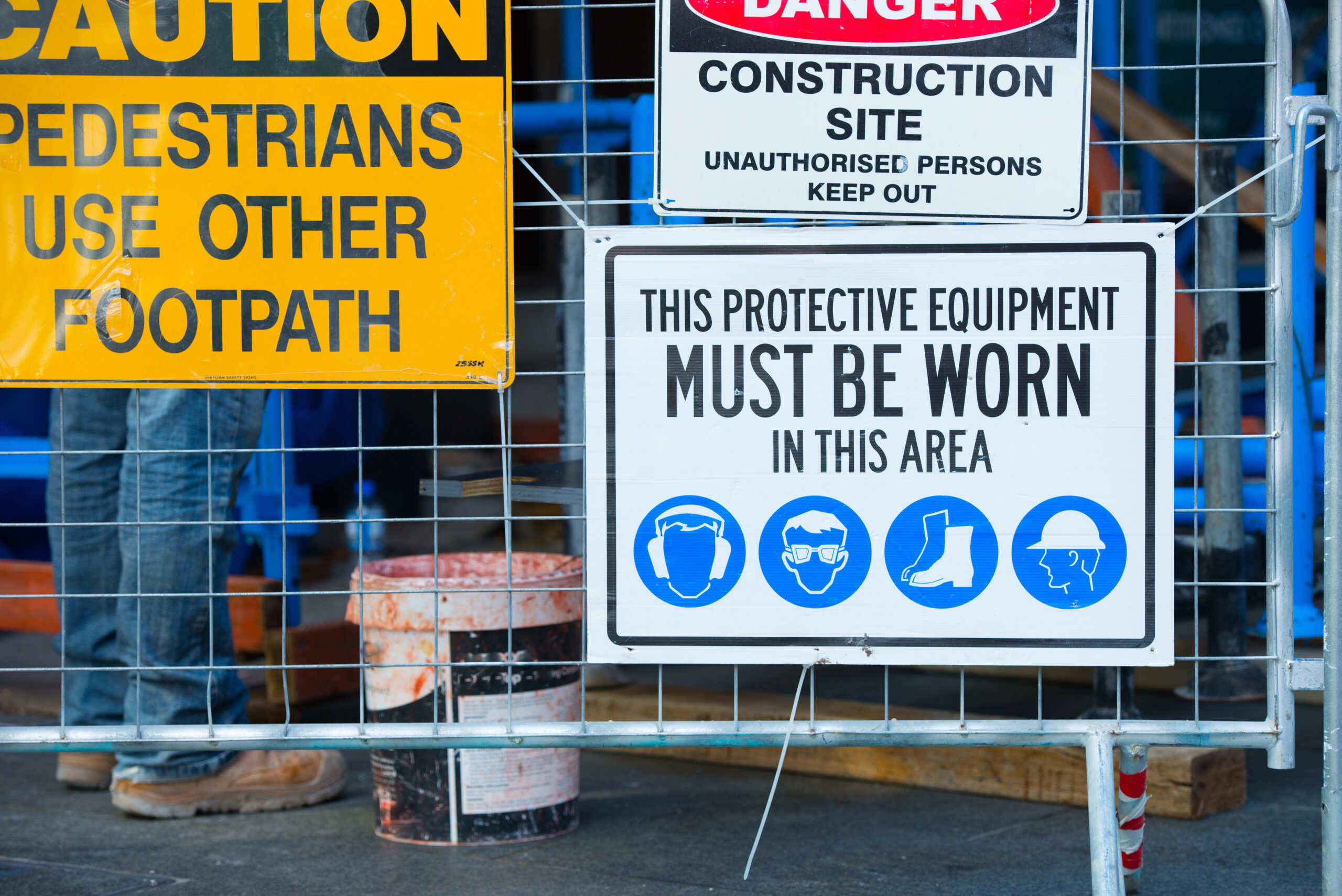
Extending Liability to All Entities That Profit from Child Labor
The increasingly complex nature of businesses that utilize temporary workers, staffing agencies, contract workers, independent contractors, and other work structure strategies “challenge the nearly century-old workplace policies built around direct, bilateral employment relationships.” Federal employment law generally holds that more than one entity may be held responsible as joint employers for the purposes of labor violations. In announcing its Interagency Child Labor Task Force, the DOL recently signaled that its enhanced enforcement efforts would apply scrutiny to violations committed by entities within an employer’s supply chain, including contractors or staffing agencies. At the state level, legislators can extend liability to include the most powerful and well-resourced entities that have escaped accountability.
- Establish lead corporation liability for violations committed within supply chains. At the federal level, the CHILD Labor Act (2023 US HR 6079) creates a new standard for “secondary oppressive child labor,” which creates new responsibilities for employers to take steps to ensure that contractors and subcontractors are compliant with child labor laws. Though not specific to child labor violations, lawmakers in Minnesota recently enacted an omnibus labor bill (2023 MN SF 3035) to hold construction contractors liable for wage and hour violations committed by a subcontractor. In California, such laws exist to extend liability for labor violations committed by labor contractors (2014 CA AB 1897); contractors in the long-term care, janitorial, and gardening industries (2015 CA SB 588); contractors on private construction projects (2017 CA AB 1701); major retailers for shipping logistics contractors (2018 CA SB 1402); and fashion brands for claims made by garment workers employed by manufacturers or contractors (2021 CA SB 62).
- Establish joint liability for franchisors and franchisees. Licensing agreements that allow independent owners, or franchisees, to operate businesses under the brand of a franchisor are typically comprehensive and precisely drafted to ensure brand consistency. However, franchise agreements are vague when it comes to compliance with labor laws to avoid liability, even though name-brand franchisors have the power and resources to protect against child labor violations. California lawmakers recently enacted a bill (2023 CA AB 1228) that, as introduced, would have made fast food franchisors jointly liable for labor violations committed in a franchisee’s establishment, though the provisions were stricken from the bill prior to passage. As proposed, the bill would have also voided any agreement between franchisors and franchisees to indemnify the franchisor from liability, allowed franchisees to sue franchisors if the terms of a franchise agreement prevent compliance with labor laws, and established a notice and cure process for franchisors regarding violations at franchisee establishments.
Establishing Public Procurement Requirements
State lawmakers can also amend public procurement processes to require strict compliance with child labor protections by government contractors and their supply chains.
- Establish strict disclosure and compliance requirements for public contracts. By setting a state standard for compliance with child labor laws, lawmakers can ensure that no taxpayer funds are spent on contractors that rely on illegal child labor. At the federal level, the Preventing Child Labor Exploitation Act (2023 US S 3139) would require federal contractors to annually disclose child labor and worker safety infractions within the preceding 3-year period, in addition to establishing a new criminal penalty for employers knowingly failing to make such disclosures. The bill additionally authorizes the Secretary of Labor to determine corrective measures that contractors which have committed a violation must complete in order to remain eligible for contracts and to publish a list of entities that are determined to be ineligible for federal contracts due to their history of serious, repeated, or pervasive labor violations or their failure to address corrective measures.
Supporting Education, Outreach, and Coordination of Services
Adequate enforcement of any labor law requires that workers are supported with knowledge that empowers them to exercise their rights. In the case of children, who are new to the workforce and may be unaware of their rights under child labor laws, education and outreach efforts can yield long-term benefits in a workforce well-versed in their rights. States can also fill a critical role by identifying service gaps that exist for children vulnerable to labor exploitation, especially migrant children and children in families with language or literacy barriers.
- Develop education and outreach programming for children and families. States can leverage school systems as an access point to ensure that children and their families are aware of their rights under the law. California lawmakers recently enacted a bill (2023 CA AB 800) designating one week as Workplace Readiness Week, during which high schools provide information to students on their rights as workers. The bill also requires that minor work permits include information on workers’ rights in “plain, natural terminology easily understood by the pupil.”
- Support coordination among labor officials, social services, and immigrant legal services. Recent reporting shows that in many instances, children subject to child labor violations are often in an extremely precarious and even captive position, in danger of deportation or retaliation against family members in small company towns or eviction when their employer is also their landlord. To minimize barriers to federal programs that offer legal relief from deportation and material assistance with basic needs, lawmakers can lead the coordination of resources across state agencies and with community-based organizations to develop supports that are sensitive to the distrust that families may have for government officials and to the traumatic experiences of young workers.

Conclusion
Industry-driven attacks on child labor standards rely on a false narrative that children universally have the opportunity to “choose” a job where they can learn important lessons for adulthood and “sock away” savings in a Roth IRA. And yet, that narrative couldn’t be further from reality for the children who would be most affected by the deregulation of child labor. As recent reporting and data show, the children most subject to child labor violations have no good choices; they have only the choice to survive.
Trapped in the jaws of our nation’s profit-driven economy and brutally inhumane immigration system, both designed by a relentless corporate lobbying machine that has captured statehouses and courts, migrant children are pushed into the shadows where they are exploited without recourse. In some of the most shocking investigations, employers receive a slap on the wrist, if any at all, and continue operating with their reputations and profit margins intact. Even in cases of injury and death, these children’s families are not afforded the dignity of any measure of accountability or care.
In defending against the corporate conspiracy to deregulate child labor, state legislators should be clear that the campaign is just one piece of a massive and generational project to remake the economy into one that gives corporations license to extract exorbitant profits from increasingly unregulated and dangerous child labor. Other critical pieces of the destructive plan seek to eviscerate the social safety net to ensure that workers have no choice when faced with unsafe and abusive working conditions; to dismantle critical institutions like public schools by robbing taxpayer coffers to pay for colossal corporate tax subsidies; and by demonizing and punishing immigrants, to create a class of workers who suffer violations in silence for fear of deportation and family separation.
Additional Resources
Economic Policy Institute
- Child Labor Laws Are Under Attack in States across the Country: Amid Increasing Child Labor Violations, Lawmakers Must Act to Strengthen Standards (December 2023)
- Youth Subminimum Wages and Why They Should Be Eliminated: Young Workers Face Pay Discrimination in 34 States and DC (January 2024)
- Florida Legislature Proposes Dangerous Rollback of Child Labor Protections: At Least 16 States Have Introduced Bills Putting Children at Risk (November 2023)
- As Some States Attack Child Labor Protections, Other States Are Strengthening Standards (November 2023)
- States across the Country Are Quietly Lowering the Alcohol Service Age: An Industry Already Rife with Abuse—Including Child Labor Law Violations—Would Like Your Server to Be an Underage Teenager (July 2023)
- Iowa Governor Signs One of the Most Dangerous Rollbacks of Child Labor Laws in the Country: 14 States Have Now Introduced Bills Putting Children at Risk (June 2023)
Migration Policy Institute
- Four Strategies to Improve Community Services for Unaccompanied Children in the United States (December 2022)
- Strengthening Services for Unaccompanied Children in U.S. Communities (June 2021)
Acknowledgements
A special thank you to Jenn Round, the Director of Beyond the Bill at the Workplace Justice Lab@Rutgers University, for her insightful comments and valuable improvements to this publication.
A State Legislator's Guide to Direct Pay: Building Jobs & Sustainable Public Energy
A State Legislator's Guide to Direct Pay: Building Jobs & Sustainable Public Energy
 Executive Summary
Executive Summary
The Inflation Reduction Act (IRA) includes Direct Pay tax credits that have the potential to bring nearly unlimited funding for clean energy projects into the communities that need them most. Direct Pay tax credits will radically expand publicly owned energy, support communities transitioning away from polluting energy sources, generate affordable—and potentially free—electricity, and create good jobs for local communities. This guide is designed to help state lawmakers seize this historic opportunity for their communities through:
- Community education and outreach: State legislators are trusted messengers who can spread the word about this opportunity to local governments, community organizations, and other eligible entities within their state.
- Implementation: State legislators can ensure that the state government enthusiastically implements the IRA and secures Direct Pay funding for their state by implementing eligible projects across all levels of state government.
- Funding and policy making: State legislators can help other eligible entities like local governments and nonprofits implement Direct Pay projects by providing matching funds, creating revolving funds or low/no-interest loans, creating technical assistance programs, and building in policy incentives to increase equity and protect workers within Direct Pay programs in the state.
About Direct Pay
For the first time ever, thanks to the IRA, the federal government will give tax-free direct cash funding to tax-exempt entities like state governments, local governments, schools, hospitals, public utilities, houses of worship, and nonprofit organizations to build renewable energy projects like solar arrays, wind turbines, EV charging infrastructure, and storage resources like batteries. This provision—called Direct Pay, or sometimes Elective Pay—gives tax-free cash payments from the IRS. These Direct Pay tax credits create an opportunity to radically expand publicly owned energy, support communities transitioning away from polluting energy sources, generate affordable—and potentially free—electricity, and create good jobs for local communities.Understanding the Funding Available Through Direct Pay
The funding available through Direct Pay can be unlimited! Direct Pay funds come in the form of refundable tax credits. Since eligible entities like state governments are tax-exempt, the tax credits are cash payments from the federal government and are paid directly to the eligible entity once the project begins generating energy. The credits last until 2032, and once the IRS determines that the project qualifies, the eligible entity will receive direct tax-free funds covering 30% to 70% of the project costs or an amount for each kilowatt generated. Every project that completes a pre-filing process and meets the IRS’ requirements will get Direct Pay funds. Projects that meet worker protection standards, buy American-made materials, and support communities with the greatest need will also qualify for more funding. The state governments, cities, counties, nonprofit organizations, and other eligible entities can all access this funding simultaneously and do not need to compete with each other for it. Eligible entities are not limited in the number of eligible projects they can undertake. For example, state governments could put solar panels on state-owned buildings, invest in EV charging infrastructure for state fleets, and create a program to build state-owned solar panels and wind turbines in communities across the state. Each of these projects would be eligible for Direct Pay funding once completed, and there is no limit to the number of eligible projects that the state could complete.Expanding Racial and Economic Justice Through Direct Pay
Creating Good Green Jobs
Eligible entities can maximize economic justice for working people by meeting the IRA’s requirements to pay workers a prevailing wage and use registered apprentices on projects so workers get the training they need to build careers. State and local governments can also ensure their projects create safe, high-quality jobs and that projects stay on time and budget by using union labor. State governments can also maximize their impact on economic justice by attaching additional worker protection requirements for Direct Pay-eligible projects that receive state grants or state technical assistance. See the Congressional Progressive Caucus Center’s (CPCC) FAQs on How to Protect Direct Pay Project Workers and Guide to IRA Worker Protection Requirements for more information.Lowering Energy Burdens
In addition to creating good green jobs, states can use Direct Pay to increase economic and racial justice by lowering the burden of high energy costs on low-income households. Twenty-five percent of all U.S. households struggle with a high energy burden (i.e., spend more than 6% of their income on energy bills), and 67% of low-income households face a high energy burden. Black households have a 43% higher rate of energy burden compared to non-Hispanic white households. Native American households face a 45% higher burden, and Hispanic households face a 20% higher burden than non-Hispanic white households. Renters and older people also face disproportionate burdens. Publicly owned clean energy infrastructure can play a critical role in lowering energy costs for households struggling to afford to heat and cool their homes because publicly owned energy can serve the public interest rather than shareholder profits, keeping costs down.Addressing Environmental Racism
Governments can maximize racial justice by taking on projects that serve the communities that have been hardest hit by racist policies, fossil fuel extraction, and pollution. Black, Indigenous, and other people of color are more likely to live in communities with high pollution burden, that are near dirty power plants, or that are facing catastrophic harm in the climate crisis. For example, the American Lung Association found that people of color are 3.7 times more likely than white people to live in a county with high levels of air pollution. People of color are also disproportionately likely to live in areas affected by heat or flooding and work in occupations where they are exposed to toxic conditions. A rapid and just green energy transition is critical to achieving racial justice. The unprecedented funding offered by Direct Pay is a critical opportunity to begin investing in the communities that have borne the greatest burden under the current extractive energy economy. For example, a state government might build publicly owned resilient power in communities prone to blackouts and outages. Similarly, a state government could build publicly owned utility-scale renewable energy projects to transition away from coal-fired power plants, install community solar for public housing units, or install public EV charging stations in frontline communities.Redressing Redlining and Bluelining
Environmental racism subjects communities of color to higher rates of toxic exposure and climate risk. Decades of disinvestment and racist policies like redlining also mean that these same communities are more likely to need help securing the up-front funding to pay for green energy projects. The impact of disinvestment and redlining is magnified in many communities by bluelining and systematic financial discrimination against communities because of perceived environmental risk. This financial discrimination could prevent communities of color and low-income communities from securing the financial resources to build clean energy infrastructure and benefit from the green energy economy. State governments can play an important role in ensuring an equitable implementation of Direct Pay by creating grant programs or revolving funds that provide no-cost or low-cost funding for green energy projects, especially by reserving funding for projects serving communities of color and other environmental justice communities.Centering Community Voices
Direct Pay is a perfect opportunity to engage directly with frontline communities so that state-run and state-funded projects reflect the needs and demands of communities themselves. Governments can also prioritize workers of color when hiring for Direct Pay project jobs. Tools like pre-hire collective bargaining agreements can include hiring targets for workers of color, women, workers with disabilities, or veterans. These agreements bring jobs to target communities and shrink racial and gender pay disparities.The Role for State Elected Champions
State-level elected champions can help their communities seize this historic opportunity in three key ways:- Community education and outreach: State legislators are important and trusted messengers who can spread the word about this opportunity to local governments, community organizations, and other eligible entities within their state.
- Implementation: State legislators can ensure that the state government enthusiastically implements the IRA and pursues Direct Pay projects across the state government and state agencies.
- Funding and policy making: State legislators can use their policy-making function to help other eligible entities implement Direct Pay projects by providing matching funds, creating revolving funds or low/no-interest loans, creating technical assistance programs, and building in incentives to increase equity and protect workers within Direct Pay programs in the state.
Community Education and Outreach
Many eligible entities are unaware of the Direct Pay provision in the IRA and its potential to create good green union jobs, lower energy costs, clean up our air and water, and more. State legislators are trusted messengers who can help spread the word about this opportunity to city and county governments and other eligible entities among their constituencies, including school districts, public universities, nonprofit hospitals, houses of worship, and nonprofit community organizations. Opportunities to spread the word about Direct Pay include:- Host a town hall or public meeting on Direct Pay opportunities in your community.
- Host a meeting with city and county officials, school board members, key community groups, and leaders of key anchor institutions in your district, such as large public universities, nonprofit hospitals, and school districts, to encourage them to take action with Direct Pay.
- Host a meeting with utilities serving your district to encourage them to actively support Direct Pay projects by making interconnection agreements simple and equitable.
- Host a meeting with local community foundations and other local philanthropists to encourage them to offer grants and funding to support the construction of Direct Pay projects by small eligible entities.
- Share information about Direct Pay on social media.
Sample Direct Pay Communications Materials
- The CPCC has created a partner toolkit on Direct Pay that includes sample messaging, sample social media posts, shareable graphics, and a shareable video explaining Direct Pay.
- CPCC has created a sample presentation on Direct Pay that you are free to use without attribution or adapt for your purposes however you see fit.
State Implementation
State governments and state agencies are eligible entities under the Direct Pay provisions. The scale of projects possible at the state level helps ensure that the promise of the IRA is made real. Example state-level sustainable Direct Pay projects:- A state implements a 100% clean energy plan or other climate action plan and uses Direct Pay to supplement the cost of implementing widespread clean energy projects across the state. According to the Initiative for Energy Justice’s Environmental Justice Scorecard, New York’s Climate Leadership and Community Protection Act (SB 6599) and Washington’s Clean Energy Transformation Act (SB 5116) reflected more environmental justice principles in the creation, implementation, and design of their programs than most existing state 100% clean energy plans. Many of the plans envisioned in these laws would now qualify (at least in part) for Direct Pay tax credits.
- A state uses Direct Pay to supplement the cost of electrifying the state fleet through building out solar-powered EV charging infrastructure for state-owned and -operated vehicles. Oregon, Hawaii, Minnesota, and Washington have announced plans to electrify state fleets. Today, building EV charging infrastructure as part of those plans would be eligible for Direct Pay tax credits, and many other parts of the IRA include funding for clean vehicles that could further supplement these plans.
- A school district in Batesville, Arkansas, installed solar panels and made its buildings more energy efficient, saving nearly $300,000 per year. The district then used the money saved to raise teacher pay. Today, adding solar panels to school buildings or other state-, city-, or county-owned buildings would also qualify for a Direct Pay tax credit, reducing the cost of the initial investment and creating even more savings that can be applied to teacher pay or other critical community priorities.
- A state puts solar panels on state-owned buildings from the state house to state agencies, creating good green jobs and lowering energy costs for the state. States can add solar, wind, or other clean energy infrastructure to state-owned buildings directly and claim Direct Pay tax credits or create grant programs to add clean energy infrastructure to other publicly owned buildings.
- A state housing agency updates public housing and affordable housing units, including adding rooftop solar to lower energy costs. For example, investments in public housing such as the Massachusetts’ Affordable Homes Act could be expanded using Direct Pay.
- A state supports state-funded schools to transition to electric buses by matching federal funds to transition local bus fleets and building solar-powered charging stations on school property. For example, Delaware and Maryland are among the states that are moving toward school bus electrification. The school system saves money and reduces dangerous diesel emissions that put our kids at risk. The school system would be able to claim a reimbursement for up to 70% of total project costs with Direct Pay credits for building EV charging stations and solar panels to help offset the costs of transitioning the school bus fleet and could match that with other federal funding for the purchase of electric vehicles.
- A state builds publicly owned utility-scale renewable energy projects on state-owned land, including Brownfield land or equity-focused community solar projects, and uses that clean energy to transition away from coal- and natural gas-fired power plants.
State Policy, Funding, and Incentives
Eligible entities will face a number of challenges in seizing the Direct Pay opportunity, including navigating an unfamiliar process with the IRS, planning and implementing sometimes complex energy projects, and finding the up-front capital to cover the cost of construction and bridge the difference between project costs and the portion eligible for Direct Pay funds. State legislators have a central role in ensuring that their communities can fully embrace this opportunity to take urgent action on the climate crisis, lower energy costs, clean up our air and water, and create good-paying green jobs. Beyond ensuring that state governments implement Direct Pay-eligible programs, state legislators have the opportunity to help other eligible entities make the benefits of the IRA real in their communities by using state funding and state policymaking tools to help other entities access Direct Pay tax credits. Policies like those that call for 100% sustainable energy by 2030 create the demand and market assurance necessary to fully maximize the benefits of the IRA, but only if they are created and implemented with a central focus on improving life for communities on the frontlines of the extractive energy economy and the climate crisis. This must include community participation in the lawmaking and implementation process and significant, measurable, and enforceable programs designed to restore the communities that have been most harmed. Providing matching funding will be especially critical for communities with the least access to resources, including frontline and fenceline communities, communities of color, communities transitioning away from extractive economies, rural communities, and low-income communities. Below, we outline some possible examples of Direct Pay financing. We plan to update this when we have more information from the federal government.Funding for Direct Pay Projects
While Direct Pay tax credits can provide substantial funding for renewable energy, these projects will need additional funds to cover the full project completion costs. Eligible entities will have to cover the cost of project construction before they receive the tax credit. Depending on the exact Direct Pay tax credit, the payment will either be disbursed as a one-time credit covering between 6% and 70% of total project costs when the project is completed or as a payment based on electricity production over ten years. To learn more about the structure of the specific tax credits, see the CPCC’s in-depth explanation of how the investment tax credit (ITC), the production tax credit (PTC), and other bonus credits work here. The Center for Public Enterprise has produced a financial model that makes it possible to compare the ITC and the PTC for a planned project. Many under-resourced communities must raise funds to complete a project before Direct Pay funding is available, which poses a significant obstacle. Access to reliable public funding to match federal funds is necessary for many communities to access the benefits of Direct Pay, or they may be vulnerable to predatory lending. State governments can dramatically increase the reach of the Direct Pay tax credits by providing direct funding through grants and by helping local governments and other eligible entities find safe, reliable, and low-cost financing options that do not undermine the public nature of the ownership of these new sustainable energy generation assets. State funding for Direct Pay-eligible projects increases equity and justice in implementation by adding additional incentives or requirements to target funds toward projects that create good local union jobs and projects that serve frontline communities. The federal government set the floor with the IRA. Now, state legislators can break through the ceiling in achieving maximized benefits for vulnerable communities, the environment, and workers. For example, it is critical to prioritize projects that include community input and reflect community demands rather than simply defining projects by geography, which may unintentionally result in funding projects that disempower or further harm frontline communities. For more information on how to define environmental justice communities in order to prioritize funding for the communities that have been harmed the most, see the Climate and Clean Energy Equity Fund’s report on defining environmental justice communities in policy. Truly just and equitable implementation of Direct Pay will only be possible if policymakers ensure that frontline communities have access to nonpredatory funding. State policymakers can play a critical role in expanding access to Direct Pay in a number of ways, including:Direct State Funding
States can appropriate funding for grants to local governments or other eligible entities to cover the up-front costs of projects. States can maximize equity and justice in implementation by requiring projects that receive state funds to meet higher labor and community benefit standards. Additionally, they can prioritize grants for the communities that need them most, such as frontline communities and communities of color. For example, several states have implemented grant programs to fund clean energy projects. Washington State’s Department of Commerce provides grants for school sustainability, and Minnesota has proposed a grant program to support the installation of solar panels on public buildings. Minnesota also established a state competitiveness grant fund to award grants to local and tribal governments, utilities, nonprofits, and other eligible entities when they required matching funds to access IRA funds. This type of state grant program is critical because it allows local governments or community nonprofits to finance their projects, and Direct Pay ensures that state funds go further.State Revolving Funds
To maximize state funds, states could provide funding in the form of a no- or low-cost loan from a revolving fund. While there is not a federally created revolving fund for clean energy, states can establish their own revolving funds to finance clean energy projects. Direct Pay makes those revolving funds considerably less risky, as eligible entities will have a head start on repayment with their Direct Pay reimbursement funds. A no- or low-cost revolving loan fund could work as follows:- A state establishes a no- or low-cost revolving loan fund for local governments, tribal governments, and nonprofit entities within the state. States can add additional worker protections, community participation, and targeting for projects serving the hardest hit communities to the loan fund.
- Eligible entities apply to the state for a loan and use the loan funds to complete their project.
- The eligible entity pre-files with the IRS once their project is near completion and then applies for Direct Pay tax credits once their project is completed.
- The eligible entity receives their Direct Pay funds from the IRS and can apply that toward repaying their loan to the state.
- The state reinvests in the next eligible project.
State and Municipal Bonds for Matching Funds
States, cities, and other government entities can authorize the use of bonds to cover the costs of Direct Pay-eligible projects. States can use bonds to fund state-owned Direct Pay projects or authorize bonds to collectively fund smaller projects at the local level. More information on using bonds for renewable energy is available in the Department of Energy bond resource guide for state and local officials. In 2024, California voters will vote on a ballot measure to authorize $15.5 billion in bonds to finance projects for climate resilience, extreme heat mitigation, and clean energy programs, including a $500 million appropriation to the State Energy Resources Conservation and Development Commission for grants to assist in obtaining or receiving a state match to regional hubs for IRA funds. In addition to securing federal grant funds, many of the projects financed by this bond, if it passes, may be eligible for Direct Pay.State Green Banks
Some states have Green Banks, which are financial institutions designed to lower energy costs and encourage the construction of sustainable energy infrastructure by blending public and private capital and financing a broad range of sustainable energy projects. While “Green Bank” is often used as an umbrella term for many types of public-private partnerships that finance sustainable energy projects, the IRA contains specific requirements for Green Banks to be able to receive funding. Many states already have established some form of Green Bank, but some are still creating theirs or are still working to meet the new Green Bank requirements in the IRA.Using Other Federal Funding Sources
In some cases, eligible entities will be able to further supplement Direct Pay funding by using other sources of funding in the IRA (for example, using grant funding for rural electric co-ops) or using funding from other federal programs such as funding in the Infrastructure Investment and Jobs Act or remaining American Rescue Plan funding.Going Beyond the Worker Protection Requirements in the IRA
State funding and state technical assistance programs offer an opportunity to support community uptake of Direct Pay, go beyond the IRA labor requirements, and impose additional protections as a condition of receiving state funds. For example, a state revolving fund to support renewable energy programs could require that programs that receive the state matching funds use union labor. Similarly, state funding could be contingent on the use of pre-hire agreements like local hire programs, Project Labor Agreements (PLAs), Community Workforce Agreements (CWAs), and Community Benefits Agreements (CBAs). It is critical that any state incentives or requirements include strong community input and strong enforcement mechanisms. For more information, please see the CPCC’s Guide to IRA Worker Protection Requirements and FAQs on How to Protect Direct Pay Project Workers. States have a critical role to play in supporting workforce development efforts to build the diverse skilled workforce needed to fully embrace a green energy economy. In addition to the jobs created by the IRA and the growth in green energy infrastructure, more than 1.7 million workers are expected to retire over the next decade. Black, Latino, Native, and Asian individuals, and women are dramatically underrepresented in these growing fields, and state agencies must help build inclusive and equitable workforce development programs. The National Skills Coalition has published a report with recommendations for states in building a just workforce development plan.Technical Assistance and Coordination
States can maximize the number of eligible entities that can access Direct Pay by coordinating technical assistance programs. Creating programs that will qualify for the Direct Pay provisions often requires specialized planning, including conducting an energy audit, creating an interconnection agreement with a utility, and more. Many smaller nonprofit organizations, local governments, and communities that have been systematically excluded, like low-income communities and communities of color, will need help.Technical Assistance
State governments can reduce barriers by funding technical assistance that could include:- Public information campaigns about the opportunity
- Free energy audits
- Hands-on support in planning projects
- Support in creating interconnection agreements
- Help finding reputable high-road union contractors
- Support in completing pre-filing paperwork and IRS documentation. By definition, eligible entities do not usually file complex taxes with the IRS and may lack information and experience in navigating the process.
State Direct Pay Coordination Program
Centralizing efforts within a state-run program or with a cross-agency coordinator can help maximize Direct Pay programs that would actively identify possible Direct Pay projects and build them using the state as the eligible entity. A state entity could actively search out Direct Pay-eligible opportunities within communities and build the projects directly (for example, put solar panels on all the schools in a local school district, perform energy retrofits on nonprofit-owned affordable housing units, or build utility-scale solar farms on Brownfield land). If the state retained ownership of the energy-generating facility, the state should claim the credit directly and lift the burden of paperwork from the smaller eligible entity. If the smaller entity plans to retain ownership of the energy-generating facility, the state could still carry out the project and receive funding by creating a side agreement with the eligible entity to transfer the credit to the state in exchange for the state completing the process. Either of these models would streamline the need for many smaller governments and nonprofit organizations to take on the administrative burdens of designing and building eligible programs and navigating the process to receive the tax credit. These types of programs would be embedded within a relevant state agency such as a state department of energy and would need to work closely with local communities to identify projects that reflect community needs, desires, and priorities. This type of approach requires a larger commitment from state champions, but it could significantly increase the speed at which projects could be implemented, reduce administrative burdens on other eligible entities, and allow the state to prioritize projects that serve historically excluded communities.Further Resources
The Congressional Progressive Caucus Center will provide regular updates and further resources on Direct Pay. You can sign up for CPCC updates, including invitations to webinars, technical assistance to help your community get Direct Pay funds, resources to build support for Direct Pay projects, and more. You can also find additional materials, like FAQs on Direct Pay, on the CPCC’s website. You can also request technical assistance on a Direct Pay project through the CPCC’s website by filling out our technical assistance intake form. The State Innovation Exchange (SiX) exists to advance a bold, people-centered policy vision in every state in this nation by helping vision-aligned state legislators succeed after they are elected. If you are working to strengthen our democracy, fight for working families, advance reproductive freedom, defend civil rights and liberties, or protect the environment, reach out to helpdesk@stateinnovation.org to learn more about SiX’s tailored policy, communications, and strategy support and how to join a network of like-minded state legislators from across the country. For a constantly updated roundup of resources on the Inflation Reduction Act, Direct Pay, and equitable implementation strategies, please visit the Direct Pay master resources list.
States Leading on Leave: A Playbook on Winning Paid Family and Medical Leave
States Leading on Leave: A Playbook on Winning Paid Family and Medical Leave

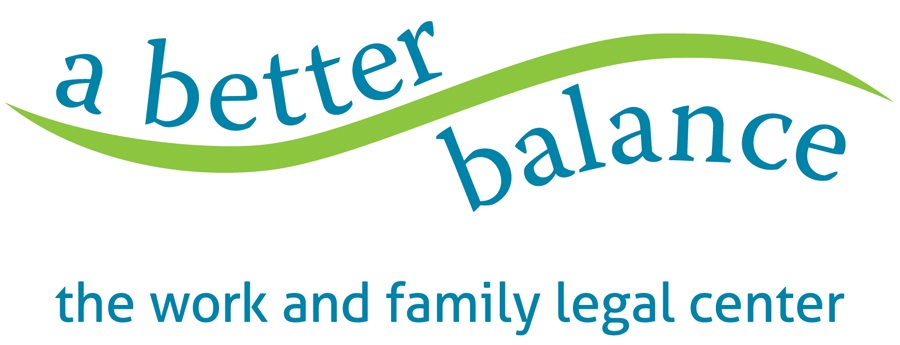

Introduction
No one should have to worry about losing their job for putting their family first during some of the most important moments in life. From the first moments of a child’s life to the last moments in the life of a loved one, we all need time to care for our families, and yet the United States is one of just six countries in the world that does not guarantee paid leave for workers. Although some workers are eligible for up to 12 weeks of unpaid, job-protected leave under the federal Family and Medical Leave Act (FMLA), just 39% of workers are eligible for and can afford to take six weeks of unpaid leave—workers of color, especially Hispanic immigrant workers, are the least likely to be able to access federal FMLA protections.
In the absence of federal action, lawmakers in 13 states and the District of Columbia have enacted legislation establishing a social insurance program that most workers can access to take paid family and medical leave (PFML) to recover from a serious illness, to bond with a new child, or to provide care to a family member with a serious illness.
Momentum for paid family and medical leave legislation has grown rapidly, with eight PFML campaigns celebrating success in the last five years. This publication summarizes some of the lessons learned by the legislative champions and advocates who led the way in ensuring that no one has to choose between caring for their loved ones and the paycheck that their family relies on.
The Basics of Paid Family and Medical Leave
The Basics of Paid Family and Medical Leave
PFML insurance programs vary from state to state but generally cover leave taken by workers for some combination of the following purposes:
- Medical leave to recover from a worker’s own serious illness;
- Bonding leave for parents to bond with a new child, including for foster and adoptive parents and those standing in loco parentis to a child;
- Caregiving leave to provide care for a family member with a serious illness;
- Military family leave to address needs arising from a family member’s military service; and
- Safe leave to address personal or family needs arising from domestic violence, sexual assault, or stalking.
In most states with PFML, workers are eligible for at least 12 weeks of benefits for covered purposes, often capped cumulatively for workers requiring multiple types of leave within the same year. Some of the earliest programs for paid leave were implemented by building on the infrastructure of an existing state temporary disability insurance (TDI) program. However, since only a handful of states had preexisting TDI programs, in most states, enacting a PFML law is only the beginning of a multi-year process of building administrative infrastructure, collecting payroll deductions, and conducting outreach to employers and employees before benefits can be distributed to workers. Typically, family leave costs are paid for by workers, while medical leave costs are shared between workers and employers.
Eligible workers apply for and receive a weekly benefit amount from the insurance pool that reflects a percentage of their average weekly wages. Most states utilize a progressive wage replacement calculation that ensures that lower-income workers receive a higher percentage of their wages, and in all states, benefits are capped at a maximum weekly rate that is adjusted annually. To ensure that all workers can access the benefits they are entitled to, PFML statutes also generally include provisions that protect workers from being fired or retaliated against by their employer for exercising their rights under the law. Critically, most states also give many workers the right to return to their job following a period of leave.
Click here for more information on the key elements of PFML policy.
Paid Family and Medical Leave Across the U.S.
Lessons Learned for Paid Family and Medical Leave Champions
This publication shares insights on campaign and strategy decisions gathered from interviews with legislators and advocates in states that have advanced PFML. This resource is intended to support champions who are leading on paid leave in their states in building and winning successful campaigns alongside community advocates and workers, as a complement to a wealth of existing literature on PFML, from its many social, health, and economic benefits, to resources that assess how proposals can be designed to promote equitable and inclusive access, particularly for workers of color and low-wage workers.
The following sections synthesize key themes in coalition building and management, campaign strategy, policy design, and implementation shared in interviews with legislators and advocates in states that have won PFML enactment in Delaware, Maine, Maryland, Minnesota, and Oregon.
Delaware Governor John Carney (seated) signs the state's PFML bill into law surrounded by legislators and supporters, including the bill's sponsor, Delaware State Senator Sarah McBride (center-left, in pink). Courtesy of Liz Richards
Section 1: Coalition Building and Management
A well-organized coalition is critical to the success of any legislative campaign, and paid leave champions consistently attribute their success to the many strengths that a diverse membership and a values-based approach to governance bring to a coalition.
Diverse Membership and Capacity
The passage of PFML legislation was often the culmination of many years of organizing, trust- and relationship-building, and collaboration between lawmakers and coalition members. “The workload for this bill was very heavy, and the amount of information, the amount of conversations that needed to be had were certainly more than one person could handle. You have to have a core group of people who understand what the program is, understand what it does, understand the benefits, and they go out and they talk to people,” said Minnesota State Senator Alice Mann. “So I would reach out to coalition members regularly, even daily, to either ask them to talk to more people or to ask them again how the changes we were making as we went along would affect them.”
For Minnesota State Representative Ruth Richardson, the diversity of the coalition brought strength to the campaign: “It takes a village to do this work and to do it well. In terms of the coalition that was built in Minnesota, one of the things that I loved about it was the diversity of the coalition because you had the voices of families with their powerful stories that were so important and critical to putting a face on this issue that can seem theoretical. Working with the faith community, labor, community-based nonprofits, those in the disability community, those who were focused on maternal health issues, our seniors—it was such a strong coalition because we were able to really show the breadth and the need for leave across the life span, and I think that was really powerful.”
It takes a village to do this work and to do it well. In terms of the coalition that was built in Minnesota, one of the things that I loved about it was the diversity of the coalition because you had the voices of families with their powerful stories that were so important and critical to putting a face on this issue that can seem theoretical.
Minnesota State Representative
Ruth Richardson
Minnesota State Representative Ruth Richardson (center-right, in green) and Minnesota State Senator Alice Mann (center-left, in floral) celebrates the passage of their PFML bill in the state House with supporters. Courtesy of Rep. Ruth Richardson
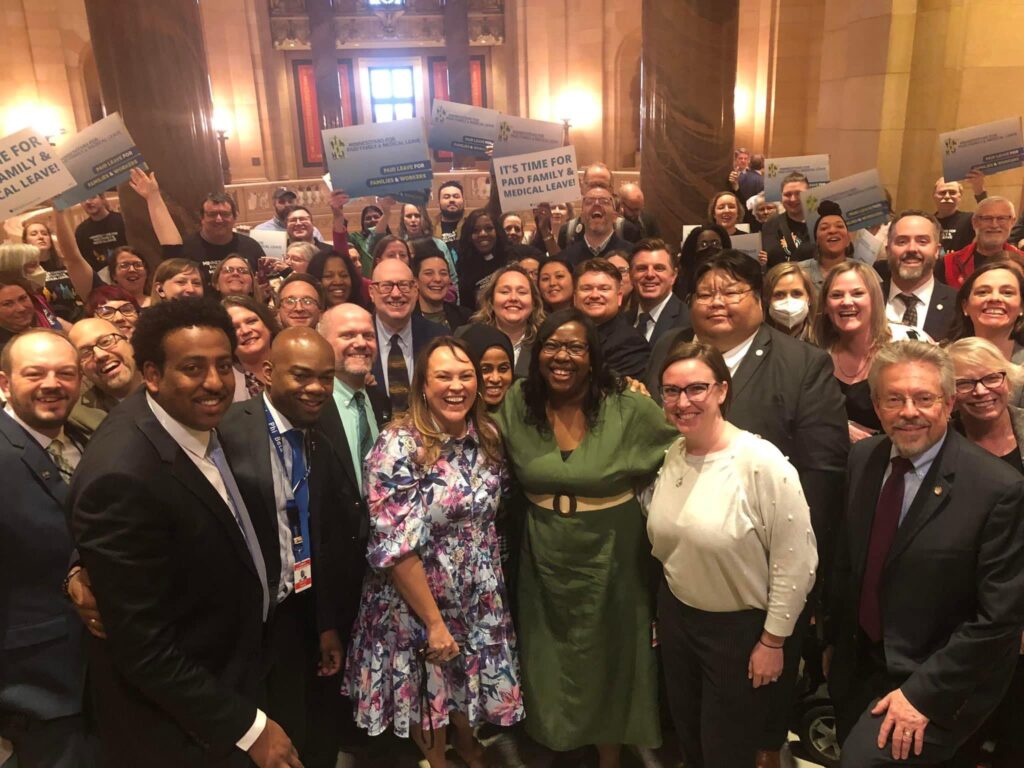
Values-Based Governance
The Time to Care Oregon coalition included over 50 member organizations and had a smaller steering committee that was representative of the entire coalition and tasked with making and executing strategy decisions. “Before we ever got to thinking about how we would draft a specific bill, we wanted there to be an agreement on what the components were,” said Courtney Veronneau, Senior Political Director at Family Forward Oregon. “When initially setting the table for a coalition, we’ll discuss and agree on policy principles and values.”
The shared understanding of values and goals within the coalition also extended to legislative sponsors in Oregon. “Lawmakers and advocates each play their own role, but in order for them to do it effectively on their own and in partnership, everyone needs to be working at the same level and have a discussion before a legislative session really takes off about the strategy,” said Courtney Veronneau, Senior Political Director at Family Forward Oregon. “It’s really important that advocates and lawmakers also have that discussion and come to an agreement. That’s not to say that everyone’s going to get everything that they want. We had to negotiate a lot to get to the finish line, but there was an understanding and shared agreement on some core things.”
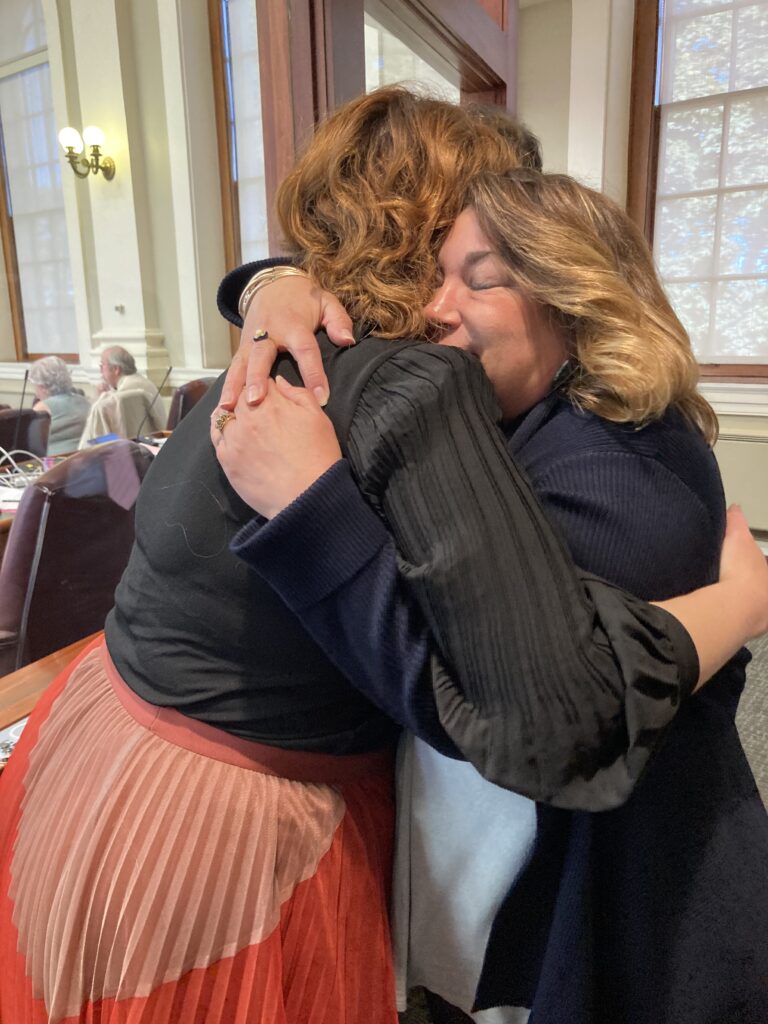
We were really fortunate to have a coalition that, at the end of the day, put their trust in us to move the policy forward, to not give too much but to hold strong in the places where it was important to hold strong. That is ultimately what allowed us to get this over the finish line.
Maine State Representative
Kristen Cloutier
Maine State Representative Kristen Cloutier (right) embraces Maine State Senator Mattie Daughtry (left). Courtesy of Rep. Kristen Cloutier
For many legislators and advocates, the practice of developing shared values and principles over the course of years created the critical foundation of trust and relationships necessary to meet the urgent and time-sensitive demands of the legislative session. “One of the things that I’m really thankful for—and I think this is really hard when you’re working with a coalition or any group of advocates—was our ability to maintain trust. The legislature is a really hard place to maintain trust in people and to maintain trust in the process. We were really fortunate to have a coalition that, at the end of the day, put their trust in us to move the policy forward, to not give too much but to hold strong in the places where it was important to hold strong. That is ultimately what allowed us to get this over the finish line,” said Maine State Representative Kristen Cloutier.
Section 2: Campaign Strategy
Successful PFML campaigns are often part of a long-term and generative collaboration between lawmakers and advocates to improve the lives of workers in their communities, driven by years of intentional community organizing and thoughtful engagement with all stakeholders.
Preempting Progress: The Intersection of Democracy and Paid Leave
Preempting Progress: The Intersection of Democracy and Paid Leave
For many states, advancing PFML in the legislature may be a distant reality that will require long-term organizing and investments over many years. In these states, advocates may wish to consider focusing on state employee paid leave campaigns first. Campaigns to pass statewide or local paid sick leave for short-term medical needs, including preventive care, could be another option.
However, lawmakers in 23 states have enacted laws prohibiting localities from passing their own paid leave laws. Across the country, state lawmakers have increasingly wielded abusive preemption laws to take power away from people and local communities in ways that disproportionately harm Black workers, women, and low-income workers. In addition to statewide PFML for government employees and repealing anti-worker state preemption laws, community benefit agreements (CBAs) for public works projects with paid leave requirements for government contractors may be another window of opportunity in these circumstances.
For more resources on preemption, check out the Local Solutions Support Center’s resources.
Building a Long-Term Plan
In many states, the passage of PFML legislation was just one piece of a multi-year and multi-issue vision for a care system and economy that works for all of us won by building power with communities historically marginalized by public policy. “This was work that had been going on well before I even thought about running for office—lots of work and lots of different people are part of this chain that got us to this point of getting paid family and medical leave across the finish line this session,” said Minnesota State Representative Ruth Richardson. “One of the very first conversations that I had with members of the coalition was to ensure that we were going to focus on ensuring those who have so often been left out of the safety net were centered within the work. Getting the bill passed, that’s just the first step. And there’s all of this work that needs to happen so that there really truly is equitable access for folks who have historically been left out of this conversation,” Rep. Richardson added.
Paid leave champions often utilize the formal structure and gravitas of a legislative process to work through the complex details of the program alongside stakeholders over the course of several years. Work to develop legislative buy-in began in 2001 when Maine lawmakers established a legislative study committee. Two decades later, Maine State Senator Mattie Daughtry and State Representative Kristen Cloutier co-chaired the legislature’s Commission to Develop a Paid Family and Medical Leave Benefits Program for three years before the bill finally passed in 2023. “We started every commission meeting with public comment,” said Sen. Daughtry. “So a lot of the people who were very opposed or very excited about it already had spent three years going through the process with us. They saw their comments get run in simulation models, and we always did our work out in the open.”
Because we really nailed the coalition building and the values and principle setting process, partners knew that we were going to build an effective coalition that was really based in our values and principles and would have good power-sharing practices.
Senior Political Director at Family Forward Oregon
Courtney Veronneau

The Time to Care Oregon coalition worked alongside lawmakers to advance policy campaigns that built upon each other. “Paid family and medical leave was actually the second policy in a series of policies that we’ve been working on,” said Courtney Veronneau, Senior Political Director at Family Forward Oregon. “It started when we built the campaign and coalition to pass paid sick days in 2015. Then we used that win—that momentum and foundation—to build toward paid family and medical leave.” The same year that Oregon lawmakers finally enacted PFML in 2019, they also established the Task Force on Access to Quality Affordable Child Care. Just three years later, the coalition won a historic $100 million investment in child care informed by the recommendations of the task force. “Because we really nailed the coalition building and the values and principle setting process, partners knew that we were going to build an effective coalition that was really based in our values and principles and would have good power-sharing practices,” Veronneau added.
“Ripping the Band-Aid Off”: The Urgency of Care in a Public Health Crisis
“Ripping the Band-Aid Off”: The Urgency of Care in a Public Health Crisis
Under the best of circumstances, our nation’s lack of accessible paid leave exposes families and communities to health risks and economic precarity, but during a pandemic, the urgent need for care altered the discussion of paid leave in state houses. “The COVID-19 pandemic ripped the Band-Aid off of the charade we had that everything’s okay in our country and our state and our communities,” said Maine State Senator Mattie Daughtry. “Even the folks who are against paid family and medical leave had lived that experience of everyone needing time off. People seeing it firsthand is what got it across the line.”
Similarly, in Minnesota, the need for time off during the pandemic helped accelerate the window of possibility for passing PFML legislation. “The tone and the tenor around paid family and medical leave on the floor and in the committee changed while I was carrying this bill,” said Minnesota State Representative Ruth Richardson. “Instinctively, we all know we need time to care for ourselves, but when you’re in the middle of a global pandemic, I think it becomes harder for people on the other side to say, ‘No, no one needs time away.’”
Moreover, passing paid leave legislation in the wake of a pandemic that worsened health and economic disparities for communities of color, immigrant communities, and low-wage workers was an important opportunity to connect the dots between how fundamentally flawed systems that exclude some of us affect all of us. “I spent a lot of time telling the story about the way that safety nets in our country have been built in a way that, oftentimes, people who look like me were left out of those safety nets,” said Minnesota State Representative Ruth Richardson. “Being able to trace the historical context of that back, thinking about that for my own ancestors that were enslaved, this whole idea that you’re not worthy of rest—that your humanity is not recognized. We have a system that is disproportionately leaving out Black, Latine, Indigenous folks, women, LGBTQ+ communities. I really framed conversations around how we have a system where the people who are most likely to have access to leave are the people who are most able to afford leave on their own, versus all of these folks who don’t have access to leave and are a paycheck away from losing everything.”

We have a system that is disproportionately leaving out Black, Latine, Indigenous folks, women, LGBTQ+ communities. I really framed conversations around how we have a system where the people who are most likely to have access to leave are the people who are most able to afford leave on their own, versus all of these folks who don't have access to leave and are a paycheck away from losing everything.
Minnesota State Representative
Ruth Richardson
Minnesota State Representative Ruth Richardson (left) and Minnesota State Senator Alice Mann (right) at the PFML bill signing. Courtesy of Sen. Alice Mann
Community Organizing and Outreach
For many legislators and advocates, the wide-reaching scope of a new social insurance program meant that gathering public input early and often was critical to the success of PFML campaigns. “It’s hard for the average person to be able to make it to their state capitol,” said Maine State Senator Mattie Daughtry. “So we went out on tour. We asked people what they thought and got their feedback. By the time the bill hit the news, people had some sort of experience talking to us or looking into the policy. It made a better piece of legislation. And I think it smooths what is a very rocky road for a bill like it to pass anywhere.”
“People are really not used to being asked for input on legislation. And not only are they not used to being asked, but they’re not used to somebody coming to their community to ask that question,” added Maine State Representative Kristen Cloutier. “I think our genuine interest really helped to bring the temperature down a bit in a lot of contentious spaces.”
Similarly, legislators and advocates in Delaware took to the road to bring discussions about PFML to communities. “Once we had a bill and were kind of pushing for it, we did a three-county tour, where we brought a variety of stakeholders to basically have roundtable discussions on it,” said Delaware Cares Director Liz Richards. “It was a really great mechanism to learn, but also to organize and create a shared sense of mission and investment. The legislative sponsors were key to that. That was another way to build champions, like giving folks a platform to share their stories, share their support, and get more invested in the issue.”
For Maryland State Senator Antonio Hayes, the fight for paid leave was about centering the workers who need paid leave. “My advice to my legislator colleagues is: this is an issue that touches families in a way that’s immeasurable. And so, oftentimes, I would allow the space for the affected families to really take the lead and give their testimony as to why this is important to them,” said Sen. Hayes.
At the same time, the bill’s passage was deeply personal to Maryland State Senator Antonio Hayes: “At a very early age, my grandmother was my caregiver. Fast forward to today, I’ve shared the responsibility of caregiving for my grandmother, which often called for me to step away from work at times to take care of her. In February 2022, I took a week off to spend time with my newborn son, but then I came back to work to make sure this bill got passed. I had to get back to make sure that other families had that opportunity—if they were having a child, that they could actually step away from work and not suffer the consequences of not being compensated by their employer.”
At a very early age, my grandmother was my caregiver. Fast forward to today, I've shared the responsibility of caregiving for my grandmother...In February 2022, I took a week off to spend time with my newborn son, but then I came back to work to make sure we got this bill passed. I had to get back to make sure that other families had that opportunity.
Maryland State Senator
Antonio Hayes
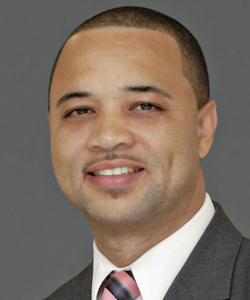
Engaging with the Opposition
Legislators and advocates approached their engagement with opponents, particularly corporate business interests, with an open mind, often over the course of years in ways that smoothed final negotiations ahead of bill passage. “We never said ‘no’ to any request to meet,” said Maine State Representative Kristen Cloutier. “You still learn from meetings with opponents. When people see that you’re willing to be uncomfortable in order to listen, it builds trust in the process.”
As a small business owner, Maine State Senator Mattie Daughtry deeply understood the concerns of many business interests about PFML legislation. “I’ve seen firsthand as an employer not only the cost of keeping your doors open, but also how the best investment you have is in your employees, and I’ve actually lost employees because we weren’t able to provide this type of benefit,” said Sen. Daughtry. “For any large policy, when you really take the time to sit with someone who’s opposed to it, you might not entirely win them over, but they’re going to leave the conversation knowing that you listened.”
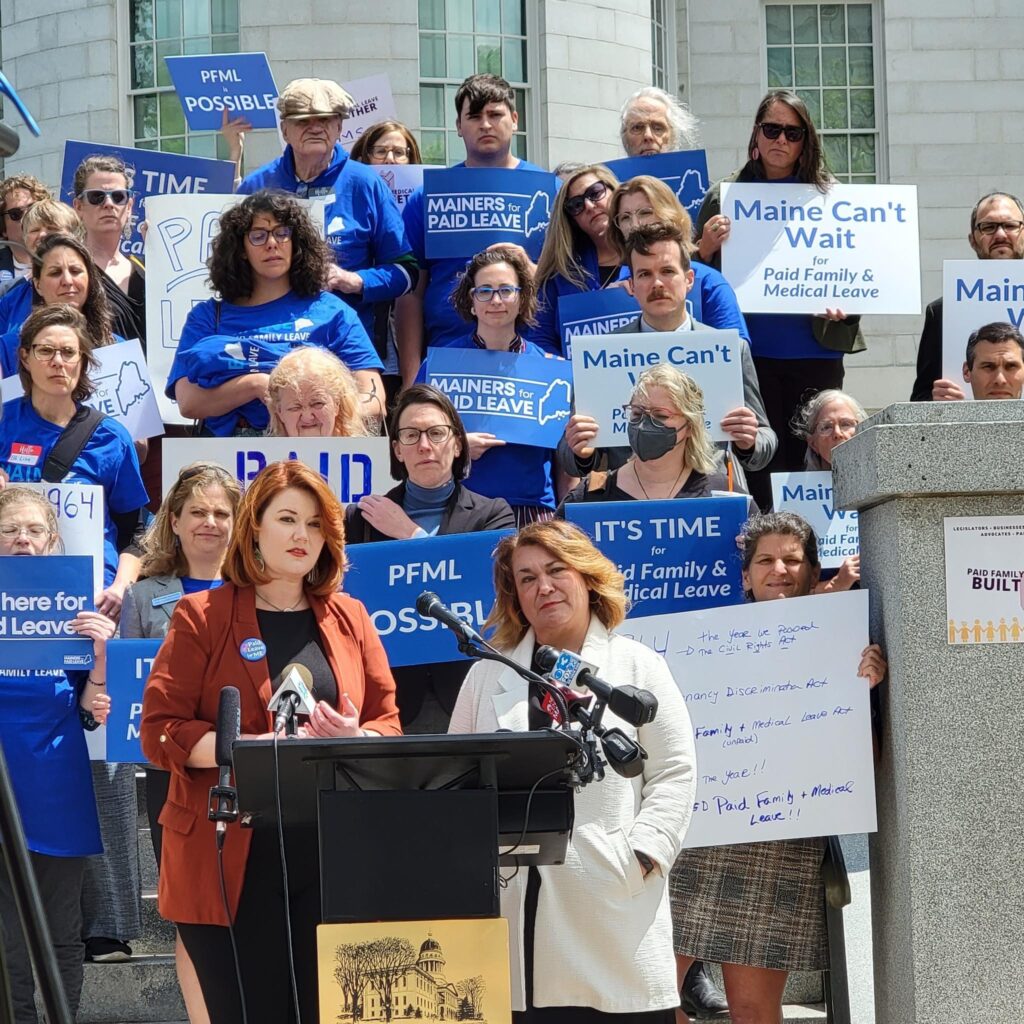
I've seen firsthand as an employer not only the cost of keeping your doors open, but also how the best investment you have is in your employees, and I've actually lost employees because we weren't able to provide this type of benefit. For any large policy, when you really take the time to sit with someone who's opposed to it, you might not entirely win them over, but they're going to leave the conversation knowing that you listened.
Maine State Senator
Mattie Daughtry
Maine State Senator Mattie Daughtry (left) and Maine State Representative Kristen Cloutier (right) speak at a press conference to introduce their PFML bill with coalition members. Courtesy of Rep. Kristen Cloutier.
Paid leave champions also frequently note that opposition often comes from a place of misunderstanding about how PFML programs function as an insurance program and can benefit business owners. “Myself and other co-authors would have one-on-one conversations with people who are on the fence or were opposed to it,” said Minnesota State Senator Alice Mann. “But really, a lot of people that were on the fence or were opposed to it didn’t understand what the program was. We talked one-on-one with almost every single person in the legislature to educate them about the incredible, undeniable benefits of paid family and medical leave. And we did the same thing with business communities. We would talk to them, or we would ask business owners to reach out to other business owners to go over the benefits that businesses incur when they participate in the program.”
In Minnesota, these discussions resulted in provisions enacted into law designed to address small business owners’ concerns without excluding their employees, including premium reductions for small businesses and a grant program for temporary workers. “We ended up working out a space for businesses with less than 30 employees,” said Minnesota State Representative Ruth Richardson. “We really tried to be thoughtful around how we were negotiating that support for small businesses.”
Section 3: Policy Design
Navigating policy design and the compromises that come out of negotiations that pave the way to passage is challenging in any legislative campaign; when it comes to a policy as complex as establishing and implementing a multimillion-dollar insurance fund, equitable access and solvency can hinge on just a few key decisions.
Starting with a Vision
Both legislators and advocates describe the importance of finding alignment on key policy provisions and setting the expectation that some form of compromise will be necessary early on in the process. “You have to have a vision from the start of where you want this to end up, of how you want this program to look like,” said Minnesota State Senator Alice Mann. “That vision is a culmination of what you think is right, what the advocates think is right, and what will actually benefit people. So when you start crafting the bill, make sure that you have that vision in mind and always start above your vision.”
“With the coalition, in the early stages, we weren’t sure what the lines in the sand were for our partners,” said Maine State Representative Kristen Cloutier. “Getting to the point where we understood what the lines in the sand were for our partners, we understood what the lines in the sand were for ourselves, and knowing where we could give and where we needed to hold strong was really important.”
“You have to be really upfront that not everyone’s going to get something. It almost sort of felt like a headline that we’d walk into: everyone would get some wins; everyone would get some losses,” said Maine State Senator Mattie Daughtry. “And once you made it clear that it wasn't going to be ‘my way or the highway,’ I think that really helps. But really building that trust and having the people around you who can be those types of messengers who are not only involved in the policy but understand what the parameters are that have to be kept in check.”
You have to have a vision from the start of where you want this to end up, of how you want this program to look like. That vision is a culmination of what you think is right, what the advocates think is right, and what will actually benefit people. So when you start crafting the bill, make sure that you have that vision in mind and always start above your vision.
Minnesota State Senator
Alice Mann
Minnesota State Senator Alice Mann (center) celebrates the passage of the PFML bill in the state Senate with supporters. Courtesy of Sen. Alice Mann
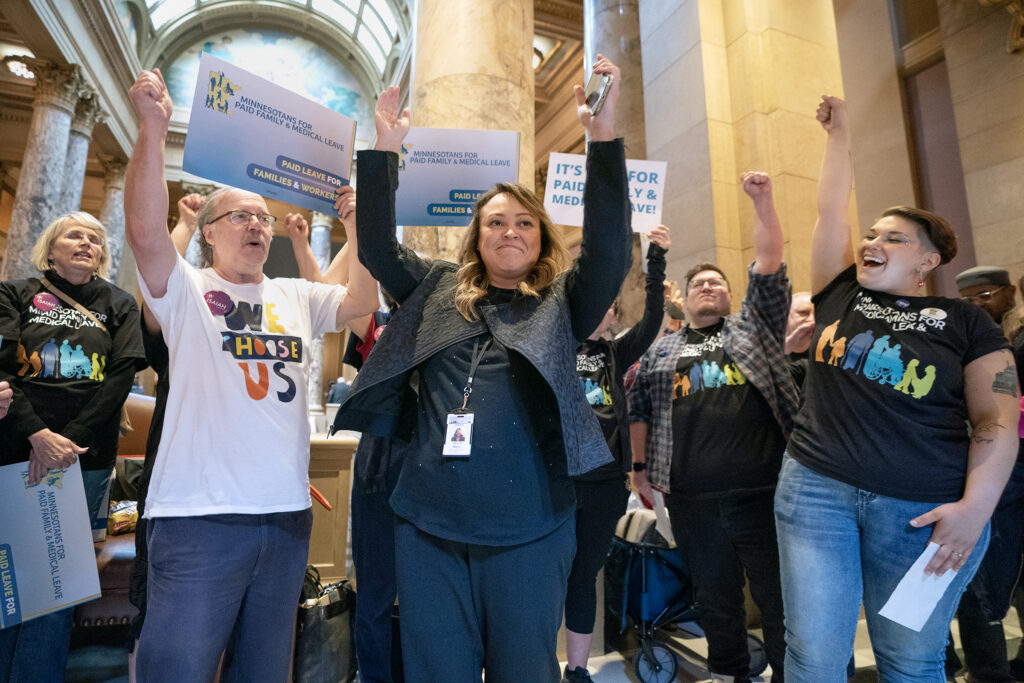
Weighing Compromise
With a vision in hand at the outset, legislators and coalitions can begin to weigh where compromise would and would not be acceptable based on shared values and goals. “Inevitably, you will get to a point where you have to negotiate, and I think the big question is likely going to be, ‘Do we cover everyone for less time? Or do we cover less people for more time?’” said Courtney Veronneau, Senior Political Director at Family Forward Oregon. “Are you essentially cutting some people out of the program, like part-time workers or low-wage workers? For our coalition—and lawmakers felt the same way—we were all in agreement that we’re going to go with less time off, but we’re going to cover everybody. That’s something you need to figure out before; I think it does make those things a little bit easier when it comes, if you can figure out those types of negotiation bottom lines first. Think about building the foundation for the best possible program you can absolutely get that covers everyone, that gets them the most time that you can get them, and that is set up in a way that people can actually use it.”
Some common compromises, however, are not only counterproductive to ensuring that workers who can least afford to take paid leave will be able to access the new program but can even undermine the solvency of the insurance fund. “There is always going to be an appetite to make an exception,” said Maryland State Senator Antonio Hayes. “The key to paid family leave is to have as much participation as possible so the fund can be and remain solvent. We’ve seen many cases throughout the country in states that have allowed certain exemptions or allowed certain carve-outs where the fund did not generate enough to support itself as it should. The whole idea behind this is for this insurance policy to be self-sustaining, and you don’t want to compromise in a way that jeopardizes the fidelity of the program.”
A Cautionary Tale: Voluntary Paid Leave and Other Alternative Paid Leave Models
A Cautionary Tale: Voluntary Paid Leave and Other Alternative Paid Leave Models
The comprehensive programs adopted in 13 states and the District of Columbia are designed to provide access to PFML to all workers, but in recent years, some states have adopted a narrower approach that continues to leave most workers without adequate access. New Hampshire lawmakers enacted legislation (2021 NH HB 2) to provide six weeks of paid family leave to public employees. Under the new law, private employers can voluntarily opt in to the program, and workers can choose to purchase their own paid family leave insurance. A similar approach was adopted through executive action in Vermont.
Legislators in Virginia passed a bill (2022 VA SB 15), based on a model bill proposed by the insurance industry, to allow insurers to sell paid family leave insurance plans that meet certain requirements. Texas lawmakers recently enacted similar legislation (2023 TX HB 1996). This approach provides no guaranteed right to PFML for workers and is billed as a private market solution. However, the private market has not met the incredible demand for PFML nationwide. Moreover, legislation authorizing private insurers to offer voluntary paid family leave insurance policies to employers may not be legally necessary in some states.
Paid leave champions should approach both models with some caution. New Hampshire officials recently announced that only 1% of employers have signed up for the voluntary program, while only 644 individual workers have purchased the insurance. Meanwhile, only one insurer has sought and received approval to offer paid family leave insurance in Virginia.
Building Collaboration into Negotiations
Delaware State Senator Sarah McBride (center-left, holding mic) speaks at a roundtable discussion about PFML. Courtesy of Liz Richards
The Time to Care Oregon coalition would assemble its negotiating team based on which organizations would provide the necessary policy expertise and the power and influence to succeed in the room. “When it came to negotiations where we needed an even smaller set of folks, essentially we were able to then collaborate as a team to strategize heading into negotiations,” said Courtney Veronneau, Senior Political Director at Family Forward Oregon. “We would always have conversations with our legislative champions beforehand; we were always trying to work as much as we could to get on the same page as much as we could. We saw ourselves as having different roles, but when we were headed into that room, we were like part of a team.”
Long before it came to negotiations, the Time to Care Coalition also agreed to an inclusive process for decision-making on key policy provisions. “If there was ever a policy negotiation on a piece that directly impacted a constituency that was not represented in the room but was part of our coalition, we all had a very firm line and an agreement that whoever was in that room was not going to agree to anything before being able to go back and have conversations with that particular constituency,” said Courtney Veronneau, Senior Political Director at Family Forward Oregon.
This process was recently tested during the 2023 legislative session when lawmakers were considering legislation to amend the state’s PFML program, including expanding the definition of “family member” under the program. “The business lobby wanted to specify what ‘affinity’ meant, and there was a discussion on whether we wanted to specify that in statute or rules, and immediately we wanted Basic Rights Oregon to know about this and weigh in on definitions and what kind of language would be best,” said Lisa Kwon, Policy Manager at Family Forward Oregon.
When it came time for policy negotiations in Delaware, legislators continued to communicate developments with community members. “The willingness, the exercise of listening and continuing to have an open line of honest communication, which I think Delaware State Senator Sarah McBride did extremely well, even in communicating tough choices,” said Delaware Cares Director Liz Richards. “Continuing to talk to people, including the most impacted people, is critical, and frankly, remembering them when they’re not there because they can’t be there. More often than not, low-wage workers don’t have time or aren’t even invited into the room. It’s really, really hard work to advocate and go to powerful people and beg for things that are owed to you—that takes a lot. Legislators are sent there to fight for the people who aren’t in the room.”

Continuing to talk to people, including the most impacted people, is critical, and frankly, remembering them when they're not there because they can't be there. More often than not, low wage workers don't have time or aren't even invited into the room.
Delaware Cares Director
Liz Richards
Section 4: Planning for Successful Implementation
Getting PFML legislation signed into law is just the beginning of a multi-year implementation process. Legislators and advocates have a critical role in this process, from working with the administering agency in the regulatory process to educating workers about their new rights.
Agency Partnerships and Regulatory Oversight
Legislators and advocates alike highlight the importance of maintaining a collaborative effort to engage in the implementation of the new law, particularly to monitor the influence of business interests in the rulemaking process. “One of the challenges that we experienced during implementation was continuing the momentum of the coalition that worked together to pass paid leave,” said Lisa Kwon, Policy Manager at Family Forward Oregon.
“Lawmakers shouldn’t underestimate their ability to push back on agencies,” said Courtney Veronneau, Senior Political Director at Family Forward Oregon. “It really helps if agencies are hearing from lawmakers in chorus with advocates. It has much more of an impact. You can pass the greatest, most inclusive, amazing bill that you want, but if you do not stick with it through implementation, where so many decisions can be made, that can undermine the intent of what it was that you were trying to pass. So make sure that you really plan that into your work as a lawmaker and into the work plans of your office and your office staff.”
In Maine, lawmakers also established an independent authority to help oversee the implementation and administration of the state’s new PFML program in future years. “We created an independent authority that has Senate confirmation and has a fiduciary duty to the fund so that we have a body beyond the legislature whose sole job it is to keep an eye on this,” said Maine State Senator Mattie Daughtry. “We built in all these different safeguards so even if there’s something that comes up, we built in the mechanism for it—we looked at what some other states have had to deal with in terms of solvency and some other issues.”
“All the major decisions when it comes to solvency, fund amount, benefit calculation are consistently linked away from legislators, away from politics, and tied into economic data and ongoing actuary science,” said Maine State Senator Mattie Daughtry. “We thought about building the fund to not only protect it from ourselves as a legislature, but also from the economy, and also from proponents or opponents. So it’s a well-guarded economic engine. Not only did we get a great policy, but we built in mechanisms to make it more responsive and be able to adapt and be flexible in itself.”
Public Outreach and Education
The successful utilization of new PFML programs requires an extensive and thoughtful approach to educating the public about how the new law will affect their lives. “One of the things that I’ve learned since passing the legislation is that our outreach efforts need to be intense. This is a different way of doing business—it’s a culture shift. So, there needs to be some intentionality about reaching people in the community on what the benefit is,” said Maryland State Senator Antonio Hayes. “We need not underestimate what that will take and how much that will cost. I have been working with the implementing agency and helping them to understand the intensity and level of outreach that’s going to be needed to make sure that this is successful.”
We learned from California that without appropriate outreach the program essentially fails right in their first year...so what we did is we put money aside every year in our bill. That money is going out to community programs that have 'boots on the ground' that can talk to employers about the existence of the program, how to use the program, who qualifies, and how employers can appropriately use the program also.
Minnesota State Senator
Alice Mann
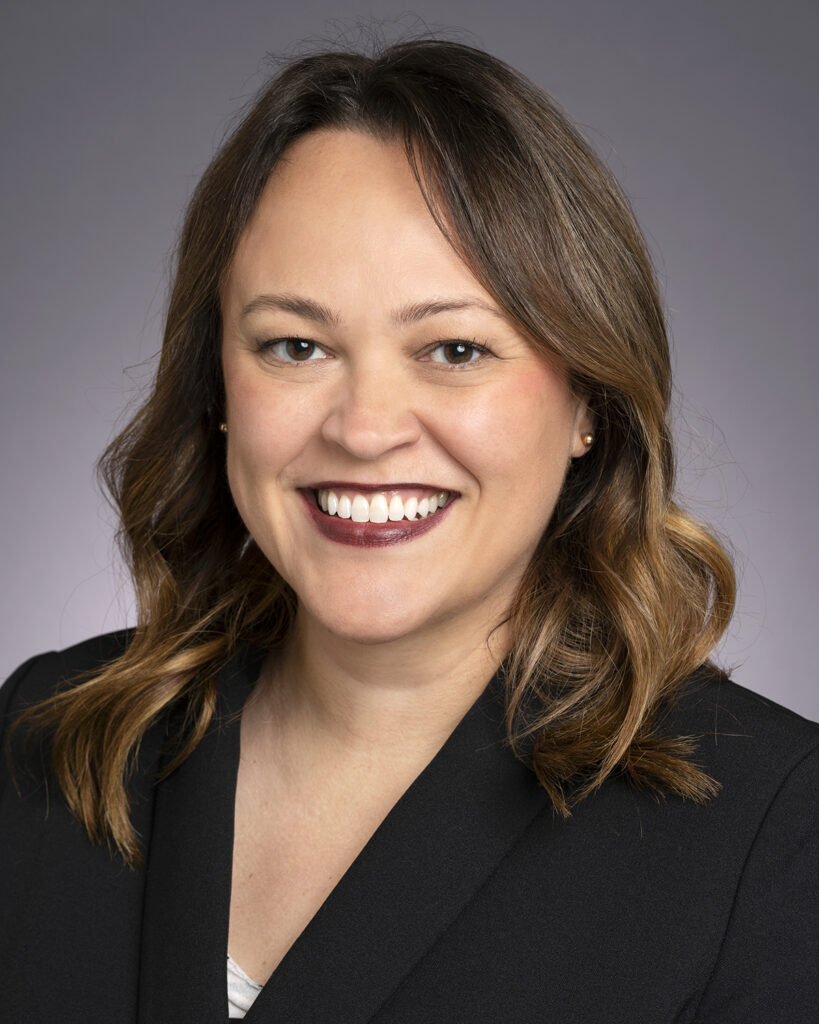
In the months and years after passage, legislators often face a great deal of confusion about new PFML programs among constituents and businesses alike who have heard about previous versions of the bill or read misinformed media reporting on the bill. “We learned from California that without appropriate outreach the program essentially fails right in their first year, no one knew it existed, and so what we did is we put money aside every year in our bill,” said Minnesota State Senator Alice Mann. “That money is going out to community programs that have ‘boots on the ground’ that can talk to employers and employees about the existence of the program, how to use the program, who qualifies, and how employers can appropriately use the program also.”
“Folks have so many questions about the program, and the rulemaking process hasn’t even started yet, so it’s hard to address some of the concerns being raised,” said Maine State Representative Kristen Cloutier. “There were different iterations of the bill that people are responding to. And so we’re having to figure out where their questions are coming from, which iteration of the bill they’re referring to, and answer those questions based upon what they think is factual, which may not actually be included in the law that was passed. That’s been challenging.”
“The other thing for policymakers that I think gets lost in a lot of legislation is to make sure that your authorizing agency has a marketing budget,” said Maine State Senator Mattie Daughtry. “Legislators are often quite keen in the budget process to jettison that type of expense, but I think any policy that applies to everyone needs to have posters, easy-to-navigate website, quality design, ensuring that you have the best staff—preferably in-state staff—answering calls and claiming benefits.”
Conclusion
Together, state legislators and advocates have led the nation in ensuring that all workers can afford to take time away from work to be with their loved ones during life’s most important moments. As paid leave champions look to make paid leave a reality in their own states, they can turn to some of the lessons of recent successful campaigns.
- Building a diverse and values-aligned coalition of support. Coalitions are made stronger with a breadth of expertise, capacity, perspectives, and political power among their membership, and by strong working relationships founded upon trust and shared values.
- Executing a campaign with a vision that extends beyond policy passage. Successful campaigns take the time to center communities and deep discussions with stakeholders to ensure that each policy win builds to the policy win over the course of a generation.
- Developing a shared vision for policy while planning for principled compromise. Legislators and coalitions work together to understand where there is and isn’t room for compromise ahead of time and develop a process that prioritizes continued collaboration in the face of time-sensitive negotiations.
- Planning for continued coordination through implementation and rollout. Success can only come when policy changes the lives of families and communities; legislators and advocates must continue to collaborate and engage through rulemaking and outreach to ensure that the program achieves the policy’s goal.
Additional Resources
Lessons Learned from State PFML Campaigns and Programs
- Getting to Yes: The Makings of Paid Leave in Massachusetts, Center for Women in Politics and Public Policy, University of Massachusetts Boston (2022)
- Implementation of Paid Family Leave in New Jersey: A Promising Work in Progress, Center for Women and Work, Rutgers University (2021)
- Implementing Paid Family and Medical Leave: Lessons for State Administrators from Research in New Jersey, New America (2021)
- Preliminary Lessons from Implementing Paid Family & Medical Leave in Washington, Economic Opportunity Institute (2020)
- The Road to Winning Paid Family and Medical Leave in Washington, Economic Opportunity Institute (2017)
- Lessons from New York: How a Broad Coalition Won the Strongest Paid Family Leave Bill to Date in the U.S., Family Values @ Work and People’s Action Institute (2016)
- A Guide to Implementing Paid Family Leave: Lessons from California, Labor Project for Working Families and Berkeley Center for Health, Economic & Family Security (2011)
Policy Design
- Model State Paid Family and Medical Leave Statute, A Better Balance and National Partnership for Women & Families (2015)
- Explainer: Paid Leave Benefits and Funding in the United States, New America (2023)
- Key Components: The Essential Elements of a Strong Paid Family and Medical Leave Law, A Better Balance (2022)
- Equity Matters: Lessons for Paid Family and Medical Leave, Center for Law and Social Policy (2021)
- The Importance of an Inclusive, Realistic Family Definition in Paid Family and Medical Leave and Paid Sick Time Policies, A Better Balance and Family Values @ Work (2021)
- Paid Family + Medical Leave Playbook, State Innovation Exchange (2020)
State Paid Family and Medical Leave Laws
- Comparative Chart of Paid Family and Medical Leave Laws in the United States, A Better Balance (2023)
- State Paid Family & Medical Leave Insurance Laws, National Partnership for Women & Families (2022)
- Paid Leave Program Implementation Timelines, A Better Balance (2023)
Research
- Paid Leave Research, National Partnership for Women & Families (2023)
- Paid Leave Works: Evidence from State Programs, National Partnership for Women & Families (2022)
- The Business Case for Paid Family and Medical Leave, A Better Balance (2022)
- Health, Work, and Care in Rural America, New America (2022)
Acknowledgments
We are grateful to the following people who generously offered their time and expertise on paid family and medical leave in interviews to inform this publication:
- Maine State Senator Mattie Daughtry
- Maine State Representative Kristen Cloutier
- Maryland State Senator Antonio Hayes
- Minnesota State Senator Alice Mann
- Minnesota State Representative Ruth Richardson
- Courtney Veronneau — Senior Political Director, Family Forward Oregon
- Lisa Kwon — Policy Manager, Family Forward Oregon
- Liz Richards — Director, Delaware Cares
State Government for the People: SiX Principles for State Management of Federal Funds
Each year, state and local governments collectively receive and spend billions in federal funds, which accounted for 40.5% of all state spending in 2021, to provide important services to the public. Federal law and regulation establish some restrictions on the use of federal grants to varying degrees, but state lawmakers have considerable power to leverage federal funds in support of the public services that guarantee all families the opportunity to thrive.
This publication offers a blueprint to state legislators for a values-based approach to managing federal funds from the planning, policymaking, and implementation stages. By working together with advocates and communities, state lawmakers can ensure that we have the resources to deliver quality schools, affordable healthcare, and public services that make communities stronger.
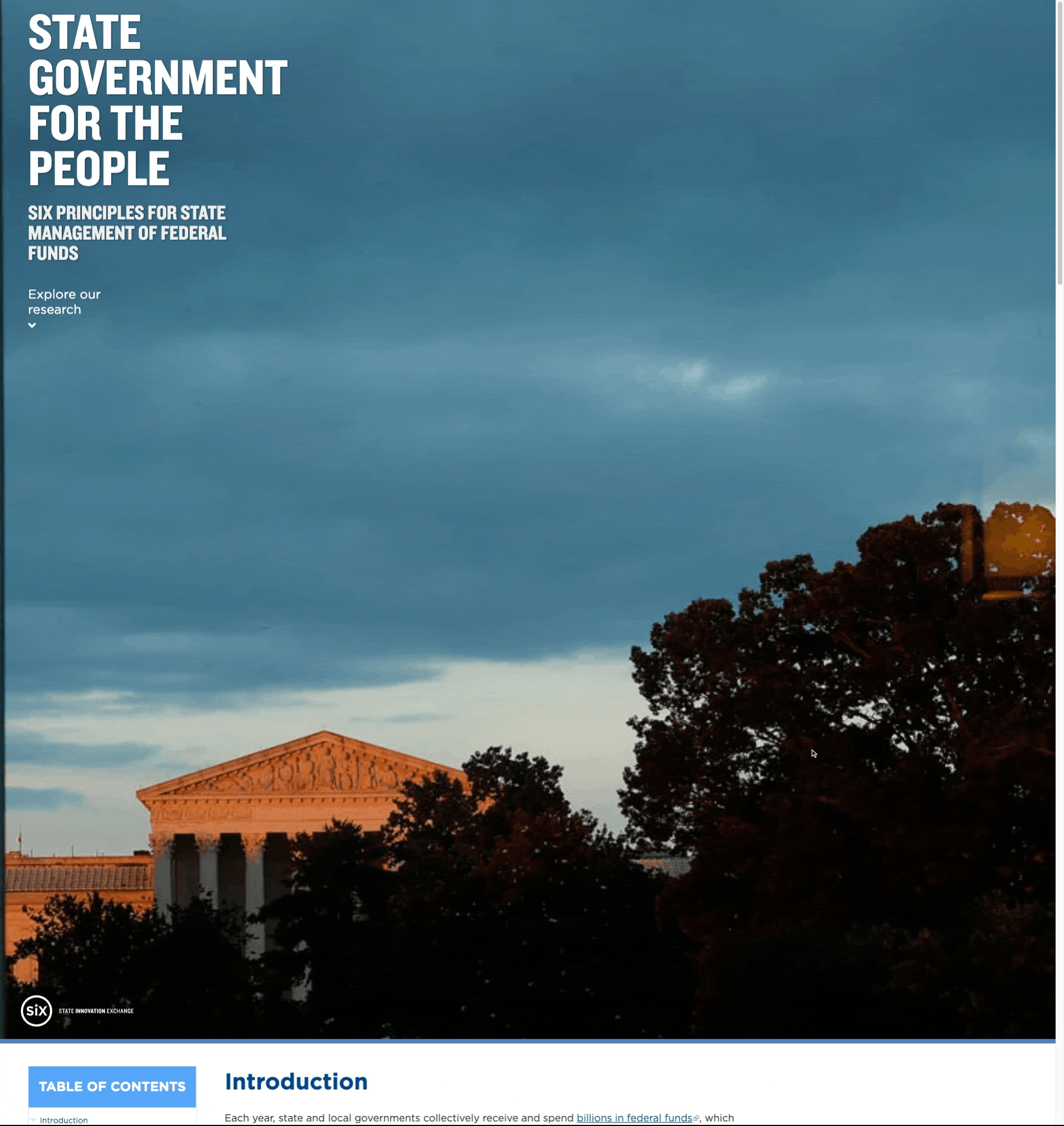
At-A-Glance: Family Caregiver Discrimination
A joint publication with:

Introduction
No one should be forced to choose between providing care for their loved ones and keeping the paying job that they need to survive. Prohibiting employment discrimination against family caregivers promotes economic security, health, and equity by ensuring employees can meet all of their obligations.
What Is Family Caregiver Discrimination?
Family caregiver (or family responsibilities) discrimination occurs when parents and those who care for their elderly or disabled family members suffer adverse employment actions due to an employer bias that caregiving responsibilities make workers unreliable, uncommitted, and less valuable as employees—regardless of actual job performance. These assumptions can lead to lower wages, lack of advancement, harassment, and job loss. Employment discrimination against workers with family caregiving responsibilities is common and has devastating economic and health consequences.
- Family responsibilities discrimination prevents caregivers from providing adequate care to their family members and can negatively impact an employee’s health.
- The income of mothers is critical for most American families, but bias against mothers is the strongest form of gender bias against women and is largely responsible for the gender pay gap.
- Fathers today spend more time caring for their children and wish to spend more, but they can face harsh caregiving penalties at work, which can be particularly damaging for single parents.
- Workers who care for disabled or elderly family members also face harmful bias. One in every six Americans provides care for a family member over 50, and 82% of Americans who care for both an elderly person and a minor child are also employed.
- While most Americans will care for a family member during their working life, women, LGBTQ+ folks, and people of color are the most likely to be driven into poverty as a result.
What Laws Currently Protect Family Caregivers from Discrimination?
Four states (Alaska, Delaware, Minnesota, and New York) and over 200 local jurisdictions around the country explicitly prohibit discrimination based on parental or caregiver status—covering almost a third of the American workforce.
In states where family caregivers are not explicitly protected, employees facing discrimination must instead rely on a complicated and incomplete patchwork of state and federal laws. Laws prohibiting discrimination based on sex, pregnancy, disability, and race, or retaliation for taking/requesting leave can protect caregivers in certain situations, but many are not covered, leaving caregivers with no legal rights. And even when rights do exist, the interplay of anti-discrimination laws and caregiver bias is widely misunderstood by employers and courts. Too many workers fall through the cracks.
What Are the Benefits of Caregiver Anti-Discrimination Laws?
Statutes prohibiting discrimination based on family caregiver status help to ensure workers are treated based on their job performance, instead of bias. This reform has the power to promote economic, health, and gender equity by ensuring that common life events, like becoming a parent or tending to a sick relative, don’t cause families to fall into poverty, and they are critical for women’s economic advancement and closing the wage gap. These laws may also help to improve caregiver mental health and to ensure children, people with disabilities, and the elderly are well taken care of.

Caregiver anti-discrimination laws also have the power to help employers avoid lawsuits. Because discrimination against family caregivers can cause employers to run afoul of laws that prohibit other forms of discrimination (e.g., on the basis of sex, pregnancy, and disability), lawsuits brought by family caregivers for violations of these other laws have been on the rise. However, laws that explicitly prohibit caregiver discrimination provide much-needed clarity to employers that this form of treatment is illegal. And discrimination complaints filed with state enforcement agencies decreased after these laws went into effect. The annual likelihood a company will be sued under a family responsibilities discrimination law is essentially zero (0.001%), according to data from the four states that already prohibit it.
Example Caregiver Anti-Discrimination Legislation
While none of the existing state laws that address family caregiver discrimination require employers to provide worker accommodations, recent legislation includes this pro-worker policy option. See below for examples of both.
Accommodations Not Required: Delaware – Enacted state legislation (2016 DE HB 317/Chapter 292) makes it illegal for an employer to discriminate against an individual due to their family responsibilities. Employment discrimination can take many forms, including decisions on hiring and firing; compensation; employment terms; work conditions; or any privileges, opportunities, or status provided to employees. This law specifies that it does “not create any obligation for an employer to make special accommodations for an employee with family responsibilities, so long as all policies related to leave, scheduling, absenteeism, work performance, and benefits are applied in a non-discriminatory manner.”
Accommodations Required: California – A recent state bill (2022 CA AB 2182) would not only prohibit employment discrimination on account of family responsibilities, but it would also require employers to provide reasonable accommodations to an employee who needs to care for a family member due to unforeseen closure of a school or unavailability of a care provider. These accommodations could include using paid time off, making overtime optional, reducing work hours, working remotely, swapping shifts with a coworker, or temporarily changing job duties. A San Francisco ordinance includes the right to a flexible or predictable working arrangement, which includes accommodations such as changing hours/schedule, job sharing arrangements, predictable hours, and telework.
Resources for Action
- Model legislation and a step-by-step drafting guide from the Center for WorkLife Law
- List of the 200+ state and local laws prohibiting caregiver discrimination
- EEOC Guidance on unlawful treatment of workers with caregiving responsibilities
- 2021 Report finding that caregiver discrimination laws do not increase litigation rates
- 2022 Report finding that enforcement agency complaints decreased after enactment
At-A-Glance: Anti-Retaliation Legislation to Protect Workers and the Rule of Law
A joint publication with:

Introduction
States across the U.S. have enacted innovative laws to address rising levels of economic inequality by going beyond the minimum protections offered at the federal level. However, enacting a higher state minimum wage or paid sick leave laws is not enough. Effective enforcement is crucial to ensuring that workers—particularly women, immigrants, and BIPOC workers—benefit from legislation that is intended to raise labor standards. Lawmakers must ensure that state labor agencies have the tools and resources that they need to successfully enforce worker protection laws.
Retaliation through “adverse employment actions”is a means to punish workers who speak out and to discourage other workers from coming forward. For example, workers have been fired, been blacklisted, had their hours reduced, experienced negative changes to their schedules or duties, or suddenly been told that their I-9s were not valid. For labor law enforcement to be effective, “protected activities” like reporting a labor law violation, cooperating in an investigation, and testifying at trial must truly be protected. Without worker cooperation, it is exponentially more difficult for enforcement agencies to conduct thorough investigations into whether employers are violating labor laws.
“The successful enforcement of worker protection law depends on workers being empowered to and feeling safe enough to speak out for themselves and their fellow workers.” — Maia Fisher, Regional Solicitor for the U.S. Department of Labor
Policy Option: Rebuttable Presumption of Retaliation
The challenge for labor standards enforcement agencies and workers is that retaliation, though pervasive, is notoriously difficult to prove. In recent years, actions have been taken in several states to address this challenge and strengthen retaliation protections by including a rebuttable presumption that an adverse action taken soon after a protected activity is retaliatory. In effect, this flips the burden onto the employer—the party that holds the evidence as to why it took the adverse action—to prove that the adverse action was taken for a non-retaliatory reason.
State Legislative Examples of Rebuttable Presumption of Retaliation
Rebuttable presumption of retaliation has been included in minimum wage and paid sick leave laws in Arizona; California; New Jersey; and Washington, D.C. Other states have passed laws that apply to certain industries. For example, Pennsylvania’s Construction Workplace Misclassification Act includes a rebuttable presumption of retaliation, and in 2021, Colorado and Nevada enacted this protection for agricultural and hospitality workers, respectively. In 2022, lawmakers across the U.S., including in Connecticut, Florida, Massachusetts, New Hampshire, and West Virginia, introduced bills to include a rebuttable presumption of retaliation when an adverse action is taken within 90 days of a protected activity.
Policy Option: Comprehensive Definitions
Where the definitions of “protected activity” or “adverse action” are too narrow, an enforcement agency’s ability to find and remedy retaliation is curtailed. Strong retaliation protections require comprehensive definitions of these elements. For example, “protected activity” should include the exercise of any right guaranteed by the law (e.g., use of sick leave), filing a complaint, participating in an enforcement action, making inquiries about a protected right, and informing any person of an alleged violation of a right guaranteed by the law. Similarly, “adverse action” should be defined broadly enough to account for the many different forms of retaliation.
Policy Option: Increased Damages
Too often, even when the elements of a retaliation are established, the damages the aggrieved person can recover are too low to fully remedy the direct and collateral harm. Likewise, the penalties available for retaliation violations are commonly too small to deter additional acts of retaliation. Strong retaliation protections must include sufficient damages to fully rectify retaliation—including backpay, front pay, and reinstatement—and civil penalties and/or fines that are high enough to serve as a deterrent.
Policy Option: Injunctive Relief
While it is imperative to remedy retaliation for the aggrieved persons, such remedies come at the conclusion of the investigation. In the meantime, those who suffered retaliation still bear the consequences. Additionally, the chilling effect of ongoing retaliation during an investigation can limit worker cooperation such that investigators cannot establish the true extent or nature of the violations. To mitigate the impact of retaliation and preserve the integrity of the investigation, agencies need the ability to immediately intervene and obtain a temporary or preliminary injunction. Such injunctions help to maintain the status quo pending a final judgment.
Frequently Asked Questions

1. Why is illegal retaliation so hard to prove under the Fair Labor Standards Act (FLSA)?
To determine retaliation has occurred, enforcement generally must find that three elements have been established: 1) a worker engaged in a protected activity; 2) an employer took an adverse action; and 3) there is a causal connection between the adverse action and protected activity. Under the FLSA and many state laws, the initial burden is on the worker to prove these three elements. Most often, it is the causal connection that is the hardest to substantiate because the worker rarely has access to any evidence documenting the employer’s true motives, and employers in most states have full discretion to take adverse employment actions against workers for almost any reason, or no reason at all.
2. Is retaliation widespread?
Retaliation is alarmingly common. A national survey found that 43% of workers who complained to their employers about pay and working conditions were subjected to illegal retaliation.
3. What is the impact of retaliation?
For the individual worker, retaliation often results in lost wages, collateral losses (e.g. eviction), and emotional distress. Retaliation also causes a chilling effect that impacts the entire workforce. An adverse action against one worker sends a message about the ramifications of reporting a violation or cooperating in an investigation. The fear of retaliation is especially effective at silencing many of the same workers who are most likely to experience wage theft and other workplace violations. Retaliation often renders agencies’ enforcement efforts less effective, especially against the worst violators.
Additional Resources
2020 Session Highlights: How States Support Workers During COVID-19
Background
Over a year into the COVID-19 pandemic, communities across the country, particularly communities of color and low-income communities, continue to experience countless losses of life and economic devastation. In 2020, state leaders took immediate action to provide relief to families and to empower workers through the economic crisis.
Workers of all races experienced job losses, but the pandemic has amplified the multiple and compounding barriers that workers of color face in the economy. In December of 2020, nearly 10 percent of Black workers and 8.4 percent of Latinx workers were unemployed, compared to 6 percent of white workers. Women, mostly Black and Latina women, are bearing the brunt of job losses, accounting for the entirety of the 140,000 net jobs lost in the economy in December.
Women of color are also more likely to hold jobs in “essential services,” such as grocery clerks and health care workers, where they are most in need of job-protected and paid time off from work, but least likely to have access to it. One in five essential workers are Latinx, and one in six are Black. These frontline jobs, which are often low-paid and without health and safety protections, put Black and Latinx people at greater risk of contracting COVID-19. As a direct result of these increased workplace risks and a long legacy of structural racism in health care and the social determinants of health, Black, Indigenous, and Latinx Americans are dying from COVID-19 at a rate almost 3 times as high as the rate for white Americans.
What are states doing to protect workers’ rights during COVID-19?
The 2020 legislation outlined below aims to protect workers who are recently unemployed as a result of COVID-19 and “essential” workers who are often risking their health to go to work. The policy areas discussed in this publication are:
- Emergency Paid Sick Leave
- Hazard Pay for Essential Workers
- Expansion of Unemployment Insurance Benefits
- Workers’ Compensation
- Workplace Health and Safety Protections
- Whistleblower Protections
- Wage Theft Protections
Please note that this is neither a comprehensive policy list nor necessarily a list of the most progressive solutions on this subject; when moving forward with legislation, we recommend working with local and national advocates to craft the best solution for your state. Please reach out to SiX if you would like help connecting with national experts.
Emergency Paid Sick Leave
Paid sick leave is essential so that workers can stay home when they are sick, and it is absolutely critical to stopping the spread of a virus during a pandemic. Nearly one in four American workers do not have access to a single paid sick day at their job. Low-wage workers, service workers, and Latinx workers are the least likely to have access to paid sick leave. Congress authorized the first national paid sick leave policy with the passage of the Families First Coronavirus Response Act (FFCRA), giving workers up to two weeks of emergency paid sick days for coronavirus-related health and caregiving needs. The new policy was historic and lifesaving—one study estimated that the FFCRA paid sick leave provisions resulted in 400 fewer confirmed cases of COVID-19 per state per day.
Still, carve-outs in the new federal protections left out up to 106 million workers, many of them women of color in the health care industry. With the expiration of the FFCRA leave protections, states must act to protect workers by enacting emergency or permanent paid sick leave legislation. Only 13 states and Washington, D.C. have passed legislation to provide permanent paid sick leave to workers who would otherwise not have access to it, allowing employees to put personal or family health needs first, including when ill or experiencing symptoms of COVID-19.
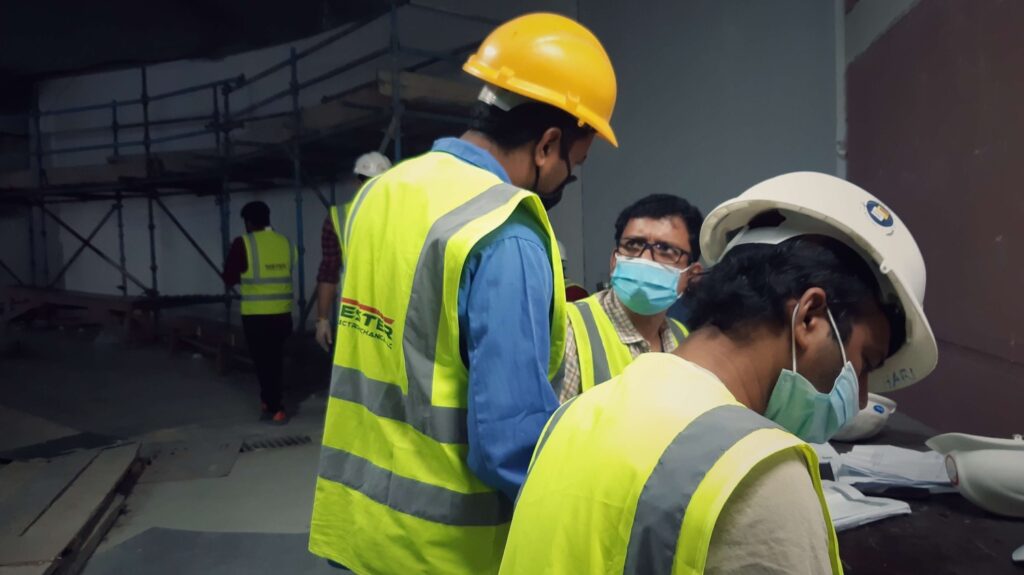
Colorado enacted CO SB 20-205, which is now one of the country’s strongest paid sick time laws. Through December 31, 2020, the legislation extended access to emergency paid sick leave for more workers who were left out of the FFCRA protections. Beginning January 1, 2021, the law entitled employees to earn paid sick time for general personal and family health needs.
New York enacted NY S 08091/A 10153 to provide emergency paid sick leave for certain purposes related to COVID-19. New York also passed a permanent paid sick time law as part of the state’s budget.
New Jersey’s legislature passed NJ S 2304/A 3900, a bill that expands the state’s existing paid sick leave laws to include leave for caregiving or quarantine needs during a declared state of emergency.
The California legislature passed CA AB 3216, which was vetoed by the governor. As introduced, the bill would have amended the state’s laws to allow paid sick leave for high-risk individuals, caregivers, and other public health workers. By executive order, the California governor provided emergency paid leave for food sector workers for purposes related to COVID-19. California also enacted CA SB 1383, which expands existing unpaid medical leave protections to workers at businesses with five or more employees (lowered from 50 or more employees) and protects an employee’s health benefits during the leave. This means that more workers will be able to take job-protected leave (paid or unpaid) to care for a family member with a serious illness.
The Massachusetts legislature introduced MA H 4700 and MA H 4928, which would have entitled all workers in Massachusetts to emergency paid sick leave during current and future public health emergencies. Massachusetts also introduced MA H 4627, which would have ensured state government employees have paid sick leave time to address health impacts due to COVID-19 infection, quarantine, or isolation.
The Michigan legislature introduced MI SB 0961, which would have expanded the state’s existing paid sick time law to be more comprehensive and provide additional coverage for public health emergencies. By executive order, Michigan’s governor protected workers from retaliation for staying home from work to prevent the spread of COVID-19.
Legislators in Louisiana introduced LA HB 832, which would have created permanent paid sick leave protections for workers, including leave for business or school closures due to a public health emergency.
The Ohio legislature introduced OH HB 593 to provide quarantine or isolation pay and sick leave benefits to workers during a declared emergency. This bill would also have created an unemployment insurance-like grant program for contract workers who are unable to work due to quarantine or public health orders.
Hazard Pay for Essential Workers
Some states introduced legislation in 2020 to provide additional compensation in the form of “hazard pay” to essential workers, since they are at a greater risk of contracting COVID-19. Nearly half of all frontline essential workers, who are disproportionately Black and Latinx, are paid less than a living wage. Not only are essential workers woefully underpaid and risking their lives to keep the rest of the economy running—they are also more likely to have an underlying health condition that puts them at increased risk of serious illness if infected with COVID-19.
In the early months of the pandemic, many large corporations announced modest hazard pay for essential workers. A poll conducted in May found that 30 percent of people working outside their home were receiving hazard pay. By late summer, despite reporting skyrocketing profits, nearly all of the nation’s largest companies had ended their hazard pay policies. As the hazard of working in frontline industries continues, hazard pay policies at the state level can extend a lifeline to essential workers.
The Massachusetts legislature introduced MA H 4740, which would have provided emergency health hazard benefits to each essential employee. The legislature also introduced MA H 4745, which would have required that any employer that provides COVID-19 essential services to also provide hazard pay if they employ at least six individuals.

The New York legislature introduced NY A 10359/S 8955 to provide hazard payments of up to $25,000 annually to essential workers during a state disaster emergency. Another New York bill, NY S 8839, would provide frontline state workers with a $2,500 pay differential and 35 hours of additional accrued vacation time.
Legislators in Vermont enacted VT H 965, which appropriated $28 million in federal Coronavirus Relief Funds (CRF) to establish the Frontline Employees Hazard Pay Grant Program. The program makes grant funds available to health care, human services, and public safety employers to provide a one-time hazard payment of up to $2,000 to eligible employees. The Vermont legislature also passed VT S 352, which appropriated an additional $2.5 million and expanded the hazard pay grant program to other industries, including janitorial services, food service providers, nurse contracting agencies, and homeless shelters.
The Louisiana legislature enacted LA HB 70, which provided a one-time hazard pay rebate of $250 to workers in “essential critical infrastructure” industries earning less than $50,000 in annual income. The rebate program was funded by a $25 million appropriation in federal CRF funds and administered by the state’s Department of Revenue.
Expansion of Unemployment Insurance Benefits
In the wake of the economic fallout from the pandemic, unemployment benefits have ensured that millions of American workers can continue to pay their bills, while also buoying an economy plunged into an unprecedented recession. Although the economic and health impacts of COVID-19 have fallen hardest on Black and Latinx workers, the pervasive legacy of racism in the economy has left the same workers with lower access to unemployment benefits. Black workers, in particular, have been shut out of unemployment benefits by deliberate policy decisions to restrict access and reduce benefits in Southern states with higher shares of Black residents. Even in states with fewer restrictions of unemployment insurance (UI) eligibility, Black workers receive lower benefit amounts as the direct result of job discrimination, wage gaps, and limited workplace protections.
The passage of the Coronavirus Aid, Relief, and Economic Security (CARES) Act in March of 2020 and the short-term relief bill that passed in December provided a much-needed boost to struggling state unemployment programs by providing a temporary supplement to benefit amounts, extending the duration of benefits, and extending benefits to more workers who are typically ineligible for UI, including self-employed workers and independent contractors. States can build upon the new federal enhancements by strengthening their UI programs to better protect the economic security and health of all workers.
Colorado enacted CO SB 20-207, which ensures that workers can return to work safely by clarifying that an allowable reason for UI recipients quitting or not returning to work includes caregiving needs, school closures, or underlying health conditions during a public health emergency.

Kansas enacted KS HB 2016, which introduces temporary flexibilities in the UI program by waiving the work search requirement for applicants during the disaster emergency and waiving the one-week waiting period before new claimants can receive benefits.
Minnesota enacted MN HF 4531, which temporarily amends the definition of “suitable employment” for the purposes of UI eligibility to exclude jobs that put the health and safety of the applicant, other workers, or the public at risk for potential exposure to COVID-19. The bill also temporarily suspends the one-week waiting period for receiving benefits and provides that involuntary leaves of absence related to COVID-19, such as a public health order or school closure, do not make an applicant ineligible for UI.
New York enacted NY S 8275, which allows recipients to receive benefits even if they have previously received an overpayment in benefits. The bill suspends existing penalties against such UI applicants for the duration of the current state of emergency.
The Massachusetts legislature introduced MA H 4747, which would have appropriated $75 million in state rainy day funds to establish the COVID-19 Food Service and Hospitality Worker Relief Emergency Fund. The fund would have provided financial assistance to individuals employed in the food service and hospitality industry who have been laid off or are otherwise experiencing financial distress as a result of COVID-19.
Legislators on the Joint Emergency Board in Oregon, which has spending authority when the legislature is not in session, appropriated $10 million in April of 2020 to fund the Oregon Worker Relief Fund, which provides financial support to Oregon workers who are excluded from UI benefits and other forms of federal or state relief, such as undocumented workers. The board appropriated an additional $10 million from the state’s federal Coronavirus Relief Fund (CRF) in June.
The Illinois legislature introduced IL HB 5861/SB 4026, which would permanently waive state efforts to recover benefit overpayments made to UI recipients during the COVID-19 emergency if the overpayments were made through no fault of the recipient
Workers’ Compensation
As more states reopen and workplace transmission of COVID-19 increases, state workers’ compensation insurance programs can protect the health and financial well-being of workers who contract the virus. While workers’ compensation does not cover common community-spread illnesses that may be difficult to identify as workplace-related, there are existing exceptions for chronic illnesses that are prevalent in certain industries, like lung conditions for first responders.
Black, Latinx, and immigrant workers, who are overrepresented among essential industries and less likely to be able to work from home, have been exceptionally vulnerable to workplace exposure to COVID-19. At the same time, low wages and low access to health benefits mean that many essential workers who contract COVID-19 will be faced with catastrophic financial and health consequences without adequate protections. More than a third of essential workers live in low-income households, and essential workers in some industries are more likely to be uninsured. States can take additional steps to ensure that those who contract COVID-19 in the workplace are eligible for health and financial benefits through workers’ compensation.
Vermont enacted VT S 342, which creates a temporary presumption that frontline workers are entitled to workers’ compensation coverage for illness or death resulting from COVID-19. Other workers not included in the definition of “frontline worker” are presumed eligible if they test positive for or are diagnosed with COVID-19 and can document workplace exposure. Employers can rebut the presumption if they can provide a preponderance of evidence that exposure to the disease was not employment-related, or that at the time of exposure, the employer was in compliance with federal, state, and local public health guidance.
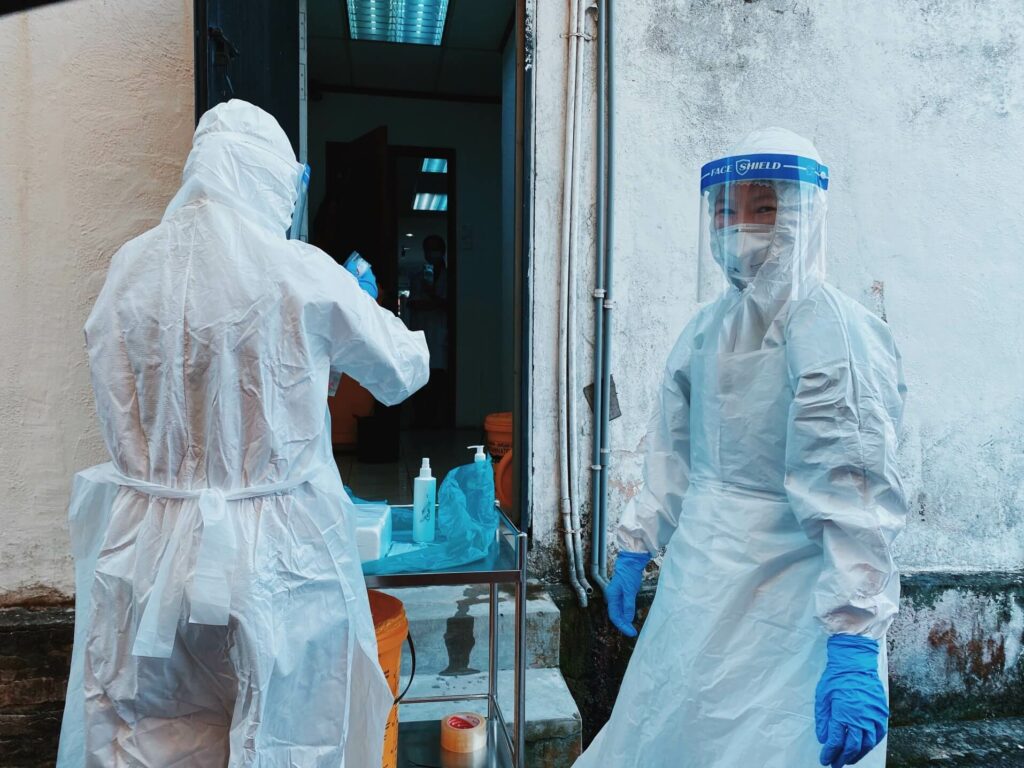
California passed a bill, CA SB 1159, which provides for a rebuttable presumption of workers’ compensation eligibility for frontline workers who contract COVID-19. The bill also creates a general presumption of compensability for any worker who tests positive for COVID-19 when an outbreak of COVID-19 has occurred at their work location.
Colorado introduced CO SB 20-2016, which failed to pass but would have established a rebuttable presumption that if an essential worker who works outside of the home and contracts COVID-19, the illness is presumed to have arisen out of and in the course of employment, and is an occupational disease for the purpose of workers’ compensation. The bill would also have treated COVID-19 as a compensable accident, injury, or occupational disease under the state’s workers’ compensation laws.
Michigan introduced MI HB 5758/SB 928, which would have created a presumption of workers’ compensation eligibility for essential workers by amending the existing definition of “personal injury” to include exposure to an infectious disease during an emergency declared by the governor.
Workplace Health and Safety Protections
Despite the new occupational hazards faced by workers in health care, meat and poultry processing, public transportation, and other high-risk industries, employers are not subject to any enforceable workplace safety measures specific to COVID-19. As of 2020, the Occupational Safety and Health Administration (OSHA) had only issued voluntary guidelines for employers to protect workers from workplace transmission. The inadequacy of federal occupational safety protections during the COVID-19 pandemic has directly resulted in enduring workplace outbreaks and incomprehensible losses of life linked to workplace exposures.

As more states reopen in spite of rising COVID-19 cases, more workers, even in nonessential industries, are facing increased risk of exposure at work. More than half of all Black, Indigenous, and Latinx workers in essential and nonessential industries have jobs that require them to work in person and closely with others, compared to 41 percent of white workers. In most cases, workers have no choice but to risk their health and their family’s health in order to pay the bills: the median income for in-person, close-proximity workers is just $27,700. More than 80 percent of Black, Indigenous, and Latinx workers with such high-risk jobs earned even less than their average counterparts. In the absence of federal health and safety protections for workers, states can establish stronger measures to prevent and reduce transmission of COVID-19 in the workplace by setting standards for social distancing, provision of personal protective equipment (PPE), disinfection and deep cleaning, ventilation rates, and disclosure requirements for potential exposure.
The California legislature enacted CA AB 2537, which requires employers of workers who provide direct patient care in a hospital setting to supply employees with PPE. The bill also requires that such employers maintain a three-months supply of unexpired protective equipment and provide reports of PPE consumption and inventory to the state Division of Occupational Safety and Health. Another bill passed in California, CA SB 275, requires the Department of Public Health to establish a state stockpile of PPE to ensure an adequate supply for health care workers and essential workers.
The New Jersey legislature introduced NJ S 2602/A 4404, the Farm Worker Epidemic Health and Safety Act, which directs the state commissioner of health to establish a system for the timely reporting of public health violations in the agricultural and food processing industries. The bill would also establish new administrative penalties for employer violations of the act and new anti-retaliation protections for farm workers.
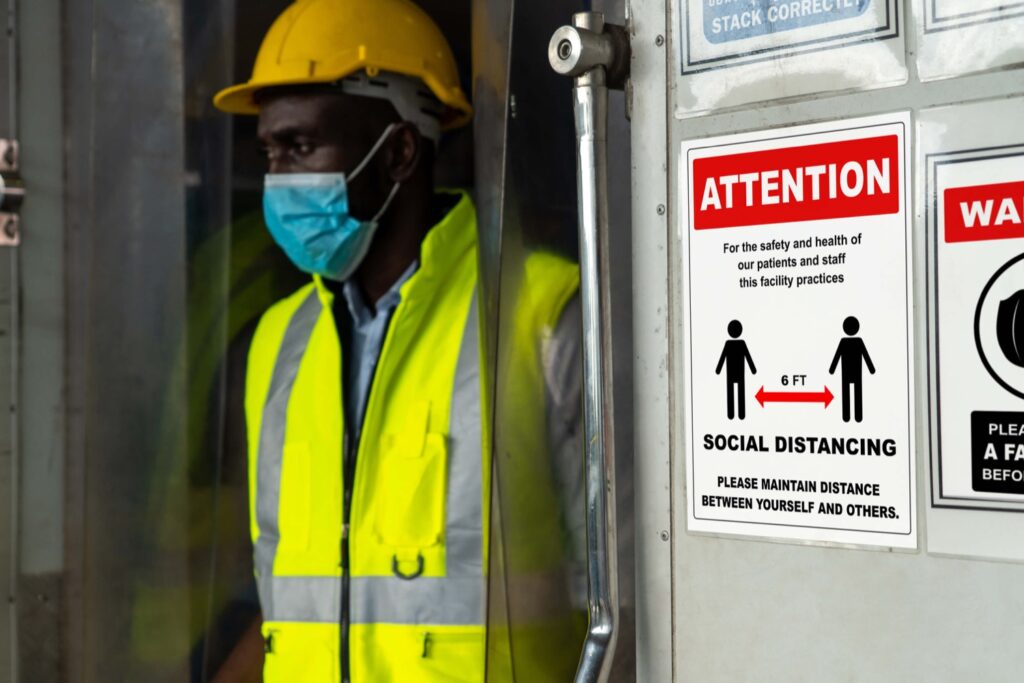
The New York legislature introduced NY A 10512/NY S 8385, the Nursing Home Protection Act, which would have required the commissioner of health to provide twice-weekly COVID-19 testing to nursing home staff and weekly testing to all nursing home residents. The bill would also have required the Department of Health to provide sufficient PPE to all nursing home staff and residents.
The North Carolina legislature introduced NC HB 1196, which would have required all staff employed at a congregate or residential care facility, except for correctional facilities, to be tested for COVID-19 weekly. Under the bill, the state Division of Health Service Regulation would have been responsible for the costs of distributing the tests and any necessary PPE to conduct the weekly tests.
The Pennsylvania legislature introduced PA HB 2694, the COVID-19 Pandemic Frontline Employee Health and Safety Protection Act, which failed to advance but would have created new protections for health care and emergency responder workers, including requiring precautions to reduce transmission, provision of appropriate levels of PPE, provision of mental health benefit coverage, and regular COVID-19 testing. The bill would have required all other employers to make public health accommodations for workers, including limiting in-person services, social distancing, provision of PPE, and notification of possible exposure to COVID-19 when an employee has been infected.
Whistleblower Protections
Workers should not have to decide between risking their health and risking their jobs. Still, in the first six months of the pandemic, the Occupational Safety and Health Administration (OSHA) received nearly 1,800 COVID-19-related complaints about employer retaliation from workers who reported unsafe working conditions. Of those complaints, more than half were dismissed without investigation, 20 percent were docketed for investigation, and just 2 percent were investigated and resolved. Robust whistleblower protections are essential to preventing continued COVID-19 workplace outbreaks, especially as retaliation complaints have increased during the pandemic, while the number of staff in the OSHA whistleblower program has decreased.
Structural racism in the economy leaves workers of color particularly vulnerable to employer backlash for whistleblower complaints. A recent survey of workers found that Black workers are more than twice as likely as white workers to report being punished or fired for raising concerns about COVID-19 transmission at work. The consequences of employer retaliation against whistleblowers are clear: many workers continue to endure hazardous work for fear of losing their job. Nearly three-quarters of Black workers and nearly two-thirds of Latinx workers reported going to work even though they believed they were risking their health, compared to 49 percent of white workers. States can establish stronger whistleblower protections by instituting new enforceable standards, protecting informal complaints to fellow workers or the public, and providing for the right to refuse work under dangerous conditions.
Colorado enacted CO HB 20-1415, which prohibits employers from discriminating or retaliating against any worker who raises concerns about workplace health and safety practices related to a public health emergency or who voluntarily wears their own PPE to the workplace. Under the new law, workers can seek relief through a private right of action or by suing in the name of the state after they have exhausted administrative remedies. The law also protects informal disclosure of workplace hazards, such as on social media or to fellow workers, by prohibiting employers from requiring nondisclosure agreements regarding public health emergency-related health and safety practices.
The New Jersey legislature introduced NJ S 2509/A 4156, which would protect health care professionals from retaliatory action for speaking out about employer practices that they believe to be in violation of the law, for participating in any investigations of the employer, or for refusing to participate in an activity that they believe to be in violation of the law or incompatible with safe public health practices. The bill further protects the right to refuse to work on-site under conditions that would jeopardize their health or the health of their family.
The North Dakota legislature introduced ND HB 1262, which would have amended existing anti-retaliation protections for whistleblowers to include employees who report a public health-related workplace violation to an employer, governmental body, or law enforcement official, and employees who voluntarily wear their own PPE beyond what is provided by the employer.
Wage Theft Protections
Every year, workers lose billions of dollars when employers fail to pay their employees for overtime work, off-the-clock work, meal or rest breaks, and other wage theft violations. Under normal economic circumstances, workers of color, women, immigrants, and low-wage workers are more likely to have wages stolen from their paychecks. During economic downturns, minimum wage violations soar alongside unemployment levels as workers are unable to find other jobs when their employers shortchange them, nor are they able to find adequate resolution through labor officials at public agencies with slashed budgets.
Workers lost 20 percent of their hourly wage to minimum wage violations from 2007 to 2009, and the patterns of wage theft continue to mirror policy decisions of the past to exclude Black and Latinx workers from labor protections. Non-citizens were twice as likely to experience minimum wage violations than citizen workers during the Great Recession. Latinx workers were 84 percent more likely, and Black workers 50 percent more likely, to experience such violations than white workers. The compounding effects of discrimination based on race, gender, and citizenship are even more staggering: non-citizen Latina workers were four times more likely, and non-citizen Black women were 3.7 times more likely, to have lost wages when compared to white male citizens. States can take steps to protect their workers from wage theft in the ongoing pandemic recession by strengthening enforcement mechanisms and enhancing options for workers to seek relief from wage theft violations.
The Virginia legislature enacted VA HB 123 and VA SB 838, which provide an employee with a private cause of action (individually, jointly, or with or on behalf of similarly situated employees as a collective action) against an employer who fails to pay wages. These new laws also provide that employers are required to pay triple the amount of wages due and attorney fees and costs if it is found that the employer knowingly violated these wage laws. VA SB 838 also includes language requiring general contractors and their subcontractors to be jointly liable to pay wages due to the subcontractor’s employees.
The Virginia legislature also enacted VA HB 337 and VA SB 48, which prohibit an employer from discharging or otherwise discriminating against an employee because the employee filed any complaint, caused any proceeding related to the failure to pay wages to be instituted, or testified (or is about to testify) in any such proceeding. An employer who is found to have retaliated against an employee under this section may be required to reinstate the employee and pay any lost wages, plus punitive damages.
The Illinois legislature introduced IL SB 3295 and IL HB 4293, which would have entitled an employee to recover damages of 5 percent (rather than 2 percent) of the amount of any underpayments in wages for each month the underpayments remain unpaid.
The Kentucky legislature introduced KY HB 40 and KY HB 606, which would have created a new crime of “theft of wages” classified as a Class A misdemeanor for wages less than $500, Class D felony for wages greater than $500 and less than $10,000, and Class C felony for wages of $10,000 or more. These bills would have also implemented employer recordkeeping and disclosure requirements, such as requiring certain employers to include rate of pay, the number of hours worked, and the total amount of gross pay earned on wage statements; keep records for three years of the name, address, and occupation of each employee, the rate of pay and amount paid to each employee, and a list of personnel policies and a copy of the wage statement provided to each employee; and provide to an employee a written notice at the time of hire that details the method of pay, the employee’s employment status, accruals of time, deductions that may be made from pay, and the name and address of the employer. KY HB 606 would also create a wage payment bond requirement for employers in the minerals industry.
The Massachusetts legislature introduced MA S 2939 and MA H 5086, which would have provided employees with treble (triple) damages when the state attorney general wins a civil suit against their employer for wage theft violations. These bills would have provided the power to issue a stop work order by the attorney general if an employer was found to have engaged in wage theft and by the director of the Department of Unemployment Assistance if the employer failed to make unemployment contributions. These bills would also have implemented protections for workers hired by subcontractors.
Additional Resources
National Employment Law Project (NELP)
- Which states and cities have adopted comprehensive COVID-19 worker protections? (December 2020)
- The Unemployment Pandemic: Addressing America's Job Crisis (June 2020)
- Protecting Worker Safety & Health in the COVID Crisis: A State & Local Model Policy Response (April 2020)
- Worker Safety & Health During COVID19 Pandemic: Rights & Resources (April 2020)
- How states and cities can respond to workers’ demands for economic security, health and safety protections, and workplace democracy (December 2020)
- Emergency Paid Sick Leave Tracker: State, City, and County Developments (January 2021)
- Paid Sick Time During a Public Health Emergency: Key Policy Elements to Include in an Emergency Paid Sick Time Bill (March 2020)
- Permanent paid sick and safe time law with additional public health emergency leave (December 2020)
- Emergency paid sick leave for a public health emergency only (December 2020)
- COVID-19 and Your Workplace Rights: Caring for Yourself and Your Family
State Innovation Exchange (SiX)
- Wage Theft Playbook (February 2020)
- Paid Sick Leave Policy Playbook Supplement (April 2020)
Economic Policy Institute (EPI)
- UI claims remain historically high and the president’s sham executive memorandum is doing next to nothing (August 2020)
- Cuts to unemployment benefits harm millions of workers across the country (August 2020)
- Black women workers are essential during the crisis and for the recovery but still are greatly underpaid (August 2020)
- Joblessness remains at historic levels and there is no evidence UI is disincentivizing work (July 2020)
- Protecting workers through publicity during the pandemic (July 2020)
- A quarter of a year in, job losses remain at historic levels (June 2020)
- Updated state unemployment numbers (June 2020)
- Black workers face two of the most lethal preexisting conditions for coronavirus—racism and economic inequality (June 2020)
- Three months in, the economic pain of the coronavirus pandemic continues (June 2020)
- Who are essential workers? (May 2020)
- State and local labor standards enforcement during COVID-19 (April 2020)
- Relief efforts need to do more to protect older workers in a coronavirus economic shutdown (April 2020)
- A coronavirus recovery (April 2020)
- Weak labor protections have put Midwestern food processing workers at risk for coronavirus (April 2020)
2020 Highlights: Racial Data Transparency and Addressing Disparities in COVID-19 Treatment
Key Trends
- Increasing racial data transparency through improved data collection and analysis.
- Improving access to health care through telehealth expansion.
- Expanding Medicaid and insurance coverage to address health disparities.
Introduction
Racial disparities in health coverage, chronic health conditions, mental health, and mortality persist across the United States. Racism has led to the deeply entrenched inequality within our country’s healthcare, economic, and social systems that perpetuate these health disparities and inequities. Such inequity becomes magnified in times of national hardship, such as the unprecedented global pandemic and economic recession we are currently experiencing.
The CDC COVID Data Tracker indicates that there have been around thirty million known COVID-19 cases in the United States, and the virus has killed around 500,000 people as of the end of February 2021. Although COVID-19 does not discriminate along racial or ethnic lines, racial, ethnic, and Indigenous communities are more vulnerable to the pandemic. The compounding effect of existing inequities put Black and Brown people, communities of color, Indigenous people, and other marginalized groups at greater risk of infection and death.
For example, these communities:
- Experience higher risks of developing chronic health conditions, like obesity and asthma;
- Are disproportionately concentrated in employment sectors and occupations that are highly vulnerable (e.g. farmworkers, grocery workers, transit operators);
- Are more likely to rely on public transit as their main form of transportation and face the risk of contracting COVID-19 in a crowded bus;
- Often face challenges with accessing nutritious and healthy food;
- Have limited safe, affordable housing choices and often live in overcrowded housing;
- Make up a disproportionate percentage of the population in prisons, which account for many of the hot spots of COVID-19 infections;
- Are more likely to experience discriminatory behavior by healthcare professionals and receive lower quality care than their white counterparts; and
- Have less access to health insurance, quality medical care, or paid sick leave.
Furthermore, undocumented workers--many of whom are working in vulnerable sectors, such as food supply and retailing--are at a greater risk because they have no access to employment benefits or paid sick leave. In addition, undocumented communities have minimal access to federal support because federal COVID-19 aid was only made available to those with a social security number and those who had paid federal income taxes.
As more states release demographic data on COVID-19 cases and mortalities, it has become clear that the virus is impacting the most marginalized and vulnerable populations the hardest.
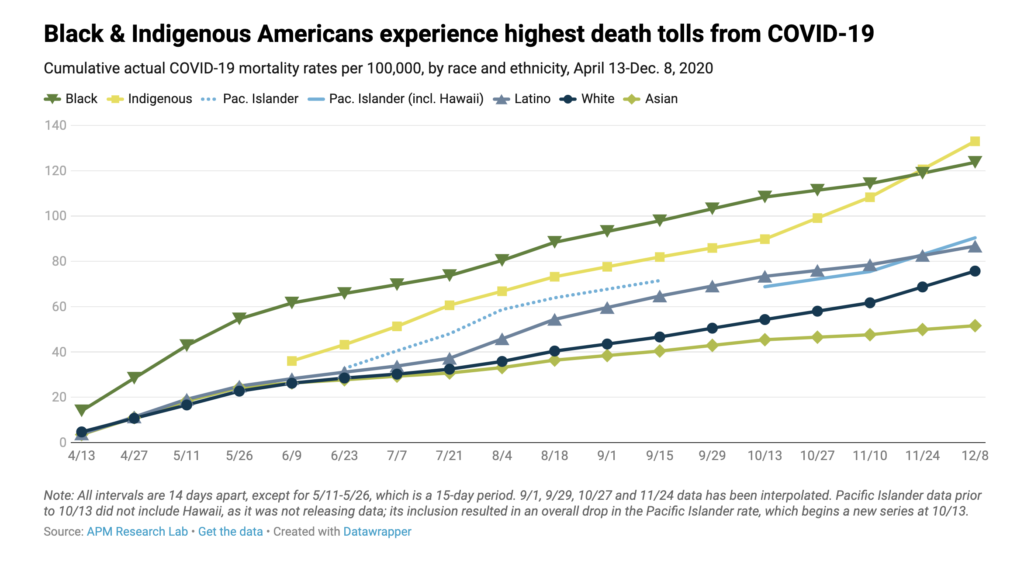
When adjusting the data for age differences in race and ethnicity groups, Black, Indigenous, Pacific Islander, and Latinx Americans all have COVID-19 death rates of triple or more the rate of white Americans. Specifically, compared to white people, the 2020 U.S. age-adjusted COVID-19 mortality rate for:
- Black people is 3.6 times as high
- Indigenous people is 3.4 times as high
- Latinx people is 3.2 times as high
- Pacific Islanders is 3.0 times as high, and
- Asians is 1.3 times as high.
As APM Research Lab has reported, this indicates that many younger Americans in these racial and ethnic groups are dying of COVID-19--driving their mortality rates far above white Americans. However, in every age category, “Black people are dying from COVID at roughly the same rate as white people more than a decade older.” This data reveals the inequitable impacts of COVID-19 and highlights the racial disparities policymakers must address.
It is also important to note that not every state has published comprehensive demographic data on the racial, ethnic, and language characteristics for those affected by COVID-19. There are still many states where race and/or ethnicity is unknown for a significant share of not only confirmed cases and deaths, but also general testing results. Expanded testing has provided more insight into the spread of COVID-19 and its impacts on marginalized communities. However, there has been many barriers to equitable testing that prevent proper data collection. For example, drive-in testing sites often require a vehicle to be tested. But Black households and people of color are least likely to have access to a vehicle. Targeting testing resources, such as accessible sites, supplies, and tailored messaging, could alleviate ongoing and future health disparities due to the pandemic.

In addition, a lack of uniform reporting guidelines across the U.S, has made it difficult to estimate the pandemic’s true toll on different communities. For example, many states lump Hispanic and Latinx identities together in the racial breakdown, whereas other states do not. In addition, some lump Indigenous people into the “Other” category, preventing states from being able to identify the complete effects of the virus on the Indigenous community. Without extensive and accurate demographic data, policymakers and researchers have no way to address ongoing inequities and identify which populations need additional access to resources.
It is critical that state legislators account for existing racial disparities in health care access and take steps to promote health equity. Some state legislatures across the country are addressing racial and ethnic disparities by adopting policies that expand health coverage and promote racial data transparency. This report summarizes some of the most important state-level developments from 2020 legislative sessions.
Racial Data Transparency
State legislators are taking action to increase racial and health data transparency by:
- Advocating for better data collection and reporting of comprehensive racial data;
- Investing in contact tracing programs;
- Putting in place a racial impact component within legislation that may affect racial and ethnic groups;
Better Data Collection And Reporting Of Racial Data
Without comprehensive race and ethnicity data, the communities most impacted by
the pandemic cannot be identified. As a result, some lawmakers are pushing for a more comprehensive collection of frequently updated data not only related to COVID-19, but also for any future public health emergencies.
A. Comprehensive COVID-19-related Data Collection
Massachusetts passed a bill (MA HB 4672/Chapter 93), which requires the state’s department of public health to collect data from all boards of health and publicly report the daily total and complete aggregate numbers of those who have tested positive for COVID-19, have been hospitalized, and have died as a result of a confirmed or probable case. It also requires the department to publish a daily report on such data from each state and county correctional facility, and elder care facilities. Each daily report must allow for the identification of trends, testing, infection, hospitalization, and mortality based on demographic factors, including race and ethnicity.
New Jersey enacted legislation (NJ S 2357/Chapter 28), which requires hospitals to report to the state’s department of health demographic data, including race and ethnicity, on not only confirmed COVID-19 cases and deaths, but also the number of those who are admitted for treatment, those who attempt to get treated, and those who are turned away after attempting to get tested. The data will be posted publicly, updated on a daily basis, and compiled by county and municipality. Michigan also introduced a similar bill (MI HB 5753), but it failed to pass.
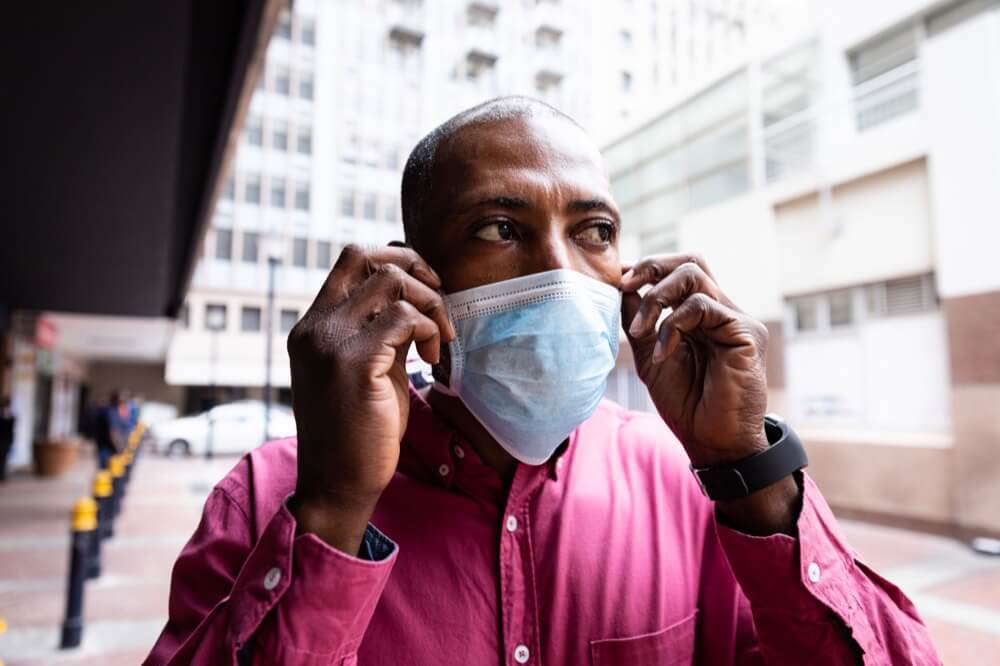
New York legislators introduced a bill (NY SB 8360) that did not include as many components as Michigan’s or New Jersey’s, but would have uniquely required data related to all COVID-19 testing regardless of the result, including the number of individuals tested. In addition, the bill would have required reporting of not only general demographic information, like race and ethnicity, but also primary language, socioeconomic status or occupation, disability status, and county or city of residence. Massachusetts enacted legislation (MA HB 4672/Chapter 93) with a similar component.
In Michigan, a bill (MI HB 5753) introduced in the House would have required hospitals to collect and report to the state’s department of health comprehensive demographic data on those affected by COVID-19 or any other communicable disease and infection during a future state of emergency. Louisiana enacted a resolution (LA SR 76) with similar language.
New York legislators introduced legislation (NY SB 8360), which included a component that would have required the Department of Health to submit to specific legislative committees a preliminary report on the following: (1) description of COVID-19-associated race and ethnicity data, and (2) evidence-based response strategies for future pandemics.
Investment In Contact Tracing Programs
Contact tracing sheds light on how a disease, such as COVID-19, is spread by locating, talking, and working with people who have tested positive for the virus to identify and track people with whom they have been in close contact. Because the United States did not have a national contact tracing strategy, there has been insufficient data about how different populations are being affected by the virus. Thus, states are investing in contact tracing programs to collect more comprehensive data that accurately reflects the impacts of COVID-19 on different communities.

A. Allocation of Funds for Contact Tracing Programs
State lawmakers have worked to appropriate funds from either the CARES Act’s Coronavirus Relief Fund or their general fund for the purpose of expanding public and private initiatives for COVID-19 testing, contact tracing, and trends tracking and analysis. These funds could be used to hire contact tracers, purchase necessary equipment, and expand the contact tracing infrastructure to take appropriate public health actions. Hawaii’s legislature enacted this legislation (HI SB 75), while similar bills were introduced but failed in Minnesota (MN HF 4579) and North Carolina (NC HB 1038).
South Carolina passed a bill (SC HB 3411) that requires the Medical University of South Carolina, in consultation with other health departments and associations, to develop and deploy a statewide COVID-19 testing plan. To implement the plan, the Department of Health and Environmental Control will collaborate with hospitals and other medical stakeholders, and provide access to information on hotspots and contact tracing. The plan also emphasizes testing in rural communities and communities with a high prevalence of COVID-19 and/or with demographic characteristics consistent with risk factors for COVID-19.
B. Contact Tracing Representation
New York enacted legislation (NY AB 10447), which requires city contract tracers to be representative of the cultural and linguistic diversity of the communities they will serve. In addition, it mandates New York City’s Department of Health and Mental Hygiene and the city’s health and hospitals corporations to submit an annual report on contact tracer worker diversity.
Similarly, South Carolina passed a bill (SC HB 3411), which mandates the Department of Health to identify no fewer than 1,000 contact tracers who are best suited to interact in a culturally appropriate manner and in the required languages of those disproportionately affected by COVID-19.
C. Privacy Protections
While contact tracing programs are crucial for collecting COVID-19 data and increasing racial data transparency, these programs have privacy implications that can harm immigrant communities and other marginalized groups. There have been concerns about whether or not confidential information would be misused or shared to other government agencies, such as immigration authorities and law enforcement, for reasons unrelated to the goal of tracking the spread of the virus. For example, police in Minnesota have reportedly used contact tracing data to track protestors from racial justice demonstrations. Allowing law and immigration enforcement to access and weaponize contact tracing data would disproportionately harm communities of color who are already being hit the hardest by the pandemic.

To protect these communities and encourage participation in contact tracing programs, legislators must prohibit immigration authorities and law enforcement from accessing contact tracing data. New York legislators enacted legislation (NY AB 10500/Chapter 377) that protects the data compiled by contact tracers from legal processes. In addition, it specifies that no contact tracer or contact tracing entity may provide contact tracing information to a law enforcement entity or immigration authority.
Kansas passed a similar bill (KS HB 2016/Section 16), which requires contact tracing data to be used only for the purposes of contact tracing. The data must be confidential and not disclosed, and safely and securely destroyed when no longer necessary for contact tracing. The bill also prohibits the state or any municipality, or any officer or official or agent thereof, from conducting or authorizing contact tracing, except under certain circumstances.

Racial Impact Statements Within Legislation
State lawmakers are trying to address racial disparities through the inclusion of racial impact statements in legislation. Similar to the fiscal notes often attached to legislation, a racial impact statement would analyze and address how different racial and ethnic groups will be negatively or positively impacted by proposed legislation. The analysis is used to not only inform legislators’ decisions, but also reduce, eliminate, and prevent racial discrimination and inequities. Illinois legislators introduced a bill (IL HB 4428), which would have required a racial impact statement for any legislation that has or could have a disparate impact on racial and ethnic groups.
Massachusetts and Ohio introduced a more specific set of legislation (MA HD 2789/SD 936 and OH HB 620) that would have required a racial impact and health disparities analysis for health-related initiatives and policies. Ohio’s legislation took a more progressive lead by also requiring the statements to determine whether introduced bills have a positive, negative, or neutral impact on the accomplishment of health equity in the state, health or health equity of specific populations in geographic areas, and the social determinants of health for the most vulnerable populations.
Addressing Disparities In COVID-19 Treatment And Testing
Lawmakers are seeking to address disparities by making healthcare more accessible to vulnerable communities through the expansion of telehealth, Medicaid, and insurance coverage.
Telehealth
In order to prevent the spread of COVID-19, many health care systems have begun utilizing telehealth and telemedicine technology for medical appointments. Such reliance on technology creates barriers for those who lack access to quality broadband and telephone services.
State legislators are expanding access to healthcare by:
- Ensuring telehealth payment parity;
- Expanding telehealth coverage for audio-only appointments; and
- Waiving or lowering cost-sharing for telehealth and telemedicine.

A. Ensuring telehealth payment parity
In order to mitigate the spread of COVID-19, healthcare systems have had to adopt methods, such as telehealth, that do not rely on delivering health care services in-person. In response, state legislators have introduced payment parity bills that would require insurance plans to provide a reimbursement rate for telehealth services that is equal to, on the same basis as, or no less than the rate provided for in-person services.
Vermont enacted legislation (VT HB 742/Section 24), which includes a component on payment parity. In addition, the following states all introduced variations of this type of bill, but none were enacted:
- Illinois (IL HB 4963 and IL SB 2561)
- Iowa (IA HF 2192)
- Michigan (MI SB 898)
- New Hampshire (NH SB 555)
- New Jersey (NJ SB 2559/A 4179)
- North Carolina (NC HB 1037/Section 6.2a)
- Rhode Island (RI SB 2525/Section 3)
A similar bill introduced in Washington (WA HB 2770) that would have allowed hospitals, hospital systems, telemedicine companies, and provider groups with 11 or more providers to negotiate their rate.
B. Expanding telehealth coverage for audio-only appointments
For telehealth services, some states require a provider and patient to use real-time, interactive audio and visual communication. However, such a requirement leaves patients who only have landline or audio-only phones without access to telehealth. Many of these patients are often low-income and come from marginalized communities. State lawmakers are working to increase access to healthcare for all by permitting audio-only telehealth appointments. Some have also restricted benefit and insurance plans from placing any restrictions on the electronic or technological platform used to provide these virtual services.
Colorado’s legislature enacted a bill (CO SB 20-212/Section 2) on this topic, while variations of this legislation are pending in New Jersey (NJ SB 2559/A 4179) and failed in Rhode Island (RI SB 2525/Section 3).
New Jersey legislators also enacted a different bill (NJ AB 3860/SB 2289), which waives certain regulatory requirements in order to facilitate telemedicine health services during COVID-19, including any privacy requirements that would limit the use of technological devices that are not typically used in telehealth services.

C. Waiving or lowering cost sharing for telehealth and telemedicine
State lawmakers are eliminating barriers to telehealth by waiving or lowering cost-sharing for telehealth services related to COVID-19.
New Jersey enacted a bill (NJ AB 3843), which provides coverage for telemedicine and telehealth to the same extent for any other services, except that no cost-sharing shall be imposed on the coverage.
Michigan introduced legislation (MI HB 5633) which would have required examination, diagnosis, and prescribed treatment of COVID-19 by telemedicine to not be subject to any coinsurance, copayment, application to a deductible, or limit.
Medicaid And Insurance Coverage
State legislators are working to address health inequities by proposing legislation that would:
- Move more states to adopt the Affordable Care Act’s Medicaid expansion;
- Expand Medicaid and insurance coverage for uninsured, undocumented, and low-income individuals; and
- Waive or lower cost-sharing for COVID-19 testing and treatment.
A. Expanding Medicaid in states without Medicaid expansion
Thirty-eight states, and D.C., have expanded their Medicaid program under the Affordable Care Act.
Of the 38 states, Oklahoma and Missouri passed expansion initiatives (OK State Question 802 and MO Amendment 2) that will be implemented in 2021. That leaves nearly two million people in 12 states who are ineligible for Medicaid coverage and left without access to an affordable coverage option. The COVID-19 emergency is putting intense pressure on these states to ensure greater access to quality health care for all, especially those disproportionately impacted by the pandemic. As a result, some lawmakers in these 12 states have sought to expand the eligibility requirements for their Medicaid programs.
North Carolina (NC HB 1040), South Carolina (SC HB 5476), Alabama (AL HB 447), Kansas (KS SB 252), and Florida (FL SJR 224/HJR 247) introduced bills to adopt the ACA’s Medicaid Expansion, which provides Medicaid coverage to non-elderly adults with incomes below 138 percent of the poverty line (though none of these bills passed).
North Carolina also introduced a different bill (NC HB 1038/Section 3A) that would have provided temporary, targeted Medicaid coverage to individuals with incomes up to 200%, rather than 133%, of the poverty line for COVID-related services. In addition, it would have provided Medicaid coverage for COVID-19 testing to the uninsured.
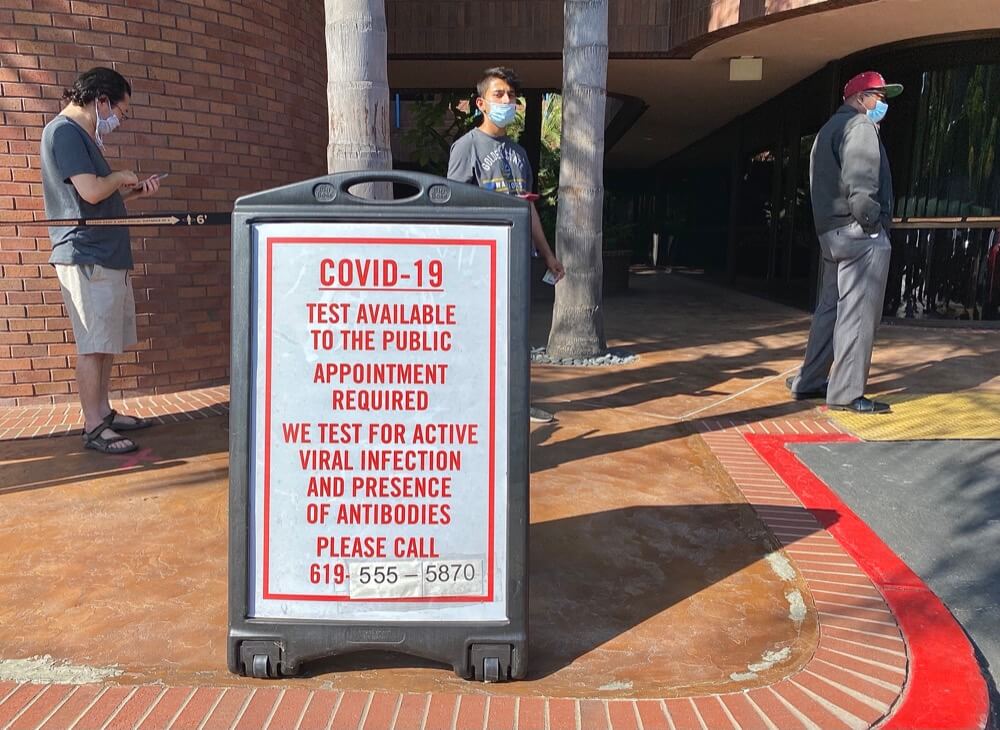
B. Expanding Medicaid and insurance coverage for uninsured individuals, low-income groups, and undocumented communities during the pandemic.
State legislators are working to address COVID-19-related health disparities by expanding insurance coverage for uninsured, low-income, and undocumented communities.
Ohio introduced legislation (OH HB 583) that would have temporarily waived certain Medicaid requirements during the pandemic and expand financial eligibility to 300% of the poverty line for children and 200% for adults. In addition, the state introduced a resolution (OH HCR 27) which demanded the Trump Administration to create a special enrollment period in the ACA marketplaces for uninsured Ohioans who may be unable to access COVID-19 testing and treatment.
Minnesota enacted an exhaustive COVID-19-related legislation (MN HF 4556/Section 11), which included a provision for Medicaid to cover the COVID-19 testing of uninsured individuals. Similarly, New York also introduced a bill (NY SB 8123/AB10494) that would have allowed any uninsured individual, regardless of immigration status, be eligible for COVID-19 testing at no cost.
Legislation in New York (NY SB 8366) would have amended the state’s social services law and increase COVID-19 health services eligibility for those who are residents of the state, have a confirmed case of COVID-19, have a household income below 200% of the FPL, and are ineligible for federal financial participation in the basic health program on the basis of immigration status.

C. Waiving or lowering cost-sharing for COVID-19 testing and treatment
Increased access to the COVID-19 testing and treatment will enable local and state public health departments to accurately track the course of the pandemic. It is also critical that people receive affordable and equitable access to health care services, especially during this time. State lawmakers are focusing on ensuring health care affordability and accessibility for those impacted by the virus by waiving or lowering cost-sharing for COVID-19-related services. These services may include, but are not limited to, diagnostic and antibody testing, physician office visits, telemedicine services, hospitalizations, antiviral drugs, and vaccines.
Louisiana and New Jersey enacted similar laws (LA SB 426 and NJ AB 3843), while variations on this type of legislation were introduced but failed to pass in Minnesota (MN HF 4416), Michigan (MI HB 5633), and Ohio (OH HB 579).
Complementary Policies
- Create a Commission to study COVID-19 racial disparities and recommend actions to policymakers, community leaders, and healthcare systems that promote health equity and address the factors that leave racial, ethnic, and indigenous communities vulnerable during public health emergencies.
- Increase broadband access and close the digital divide to ensure communities have access to the communication tools necessary for accessing medical care through telehealth and telemedicine appointments.
- Increase pay and protections for frontline workers, and ensure these workers have access to paid sick leave. Paid sick leave allows employees to take care of themselves and/or their loved ones during the pandemic without having to sacrifice their financial and job security.
- Allocate resources to communities most impacted by COVID-19 by setting up testing centers in low-income areas and within existing community networks, such as community health centers and organizations. These sites will help expand access to COVID-19 testing for those who have had limited access before.
Additional Resources
General Information
- 3 Principles for an Antiracist, Equitable State Response to COVID-19—and a Stronger Recovery, Center on Budget and Policy Priorities
- Race Equity in State and Local COVID-19 Responses Checklist, Community Catalyst
- State Options to Provide COVID-19 Testing, Treatment, and Vaccination for Uninsured Immigrants, Community Catalyst
- State Data and Policy Actions to Address Coronavirus, Kaiser Family Foundation
- COVID-19 & Race: Principles, PolicyLink
- Reducing Health Disparities Through a Focus on Communities, PolicyLink
Racial Data Transparency & Contact Tracing
- The COVID Racial Data Tracker, The COVID Tracking Project
- Counting a Diverse Nation: Disaggregating Data on Race and Ethnicity to Advance a Culture of Health, PolicyLink
- State of COVID-19 Contact Tracing in the U.S., United States of Care
- How States Collect Data, Report, and Act on COVID-19 Racial and Ethnic Disparities, National Academy for State Health Policy
- Advances in States’ Reporting of COVID-19 Health Equity Data, State Health and Value Strategies
Health & Equity Policy
- State and Federal Telehealth Legislation and Regulation Tracking, Center for Connected Health Policy
- U.S. States and Territories Modifying Requirements for Telehealth in Response to COVID-19, Federation of State Medical Boards
- Advancing Health Equity through Telehealth Interventions during COVID-19 and Beyond: Policy Recommendations and Promising State Models, Families USA
- The Fierce Urgency of Now: Federal and State Policy Recommendations to Address Health Inequities in the Era of COVID-19, Families USA
- Medicaid Emergency Authority Tracker, Kaiser Family Foundation
- Racial Equity Resources on Health and Healthcare, Racial Equity Tools
2020 Highlights: States’ Housing Response to COVID-19
Key Trends
States have:
- Prevented short-term displacement through eviction and foreclosure moratoriums
- Replaced lost income for those affected by COVID-19 with rental and mortgage assistance
- Stopped long-term evictions through rent freezes, cancellation, and suspensions
- Provided funding for shelters and homelessness services
- Continued the fight for comprehensive tenant protections, such as rent control and just-cause eviction
Introduction
The COVID-19 pandemic has heightened the existing racial and economic inequalities in the United States and created a deadly situation in which working-class families, already struggling to pay for the necessities of life, have been forced to stay at home while experiencing major losses in income and employment. In under six months, over 60 million workers in the United States filed for unemployment, and unemployment rates have skyrocketed to as high as 14.7 percent—almost five points higher than the peak of the Great Recession. This has led to immense housing insecurity for working-class renters and homeowners across the country.
In the wake of the Great Recession, millions of Americans became housing insecure, and many, particularly renters, never recovered. In 2019, 31.5 percent of all households were housing cost-burdened—meaning they pay more than 30 percent of their income toward housing and utilities. Almost half of renter households are cost-burdened. Additionally, the housing crisis has overwhelmingly impacted low-income families. Eighty-three percent of renters with incomes below $15,000 per year are cost-burdened, and 72 percent are extremely cost-burdened (paying over 50 percent of their income).
Meanwhile, the federal government has massively reduced its commitment to providing affordable housing for decades. Because of demolition and conversion, the public housing stock has been reduced by almost 500,000 units since 1996, and federal capital funding for public housing fell by over $2 billion per year from 2000 to 2013.

The Terner Center for Housing Innovation estimated that almost 16.5 million renter households have at least one worker who was employed in an industry affected by COVID-19-related job loss. With millions of Americans struggling to pay housing costs each month, the COVID-19 pandemic has exacerbated the housing crisis. Research suggests that about 31 percent of renters were unable to pay their rent on time in April, compared to 18 percent for the same time period in 2019.
Further, the housing crisis and pandemic have disproportionately affected Black, brown, and Indigenous communities. According to data released by New York City, COVID is killing Black and Latinx people at twice the rate it is killing white people. The economic impacts are also disproportionately felt by communities of color—the unemployment rate for Black workers peaked at almost 17 percent, while the unemployment rate for Hispanic women has reached over 20 percent. Black and brown families are disproportionately renters and employed in industries impacted by shutdowns and stay-at-home orders—the threat of COVID-19 to housing stability is an issue of racial justice. Further, homelessness disproportionately impacts communities of color. While Black people make up 13 percent of the United States population, they account for 40 percent of people experiencing homelessness, and Indigenous people similarly experience homelessness disproportionately.
16.5 million renter households have at least one worker who was employed in an industry affected by COVID-19-related job loss.
A CDC order in September provided a national eviction moratorium to the end of 2020, but this moratorium is not self-executing and has not frozen all eviction filings. Housing advocates expect that when state and federal eviction moratoriums end and federal unemployment bonuses expire, many working-class renters will be threatened with eviction. Policymakers at the federal, state, and local level have taken action to try to keep millions of Americans housed during the pandemic. State lawmakers have introduced and enacted legislation that:
- places moratoriums on evictions and foreclosures;
- creates funds for tenant, landlord, and homeowner assistance;
- allocates funding for shelters and services for people experiencing homelessness; and
- cancels or suspends rental and mortgage payments.
This report summarizes some of the most important state-level developments from the 2020 legislative session. Please note that this is neither a comprehensive policy list nor necessarily a list of the most progressive solutions on this subject. When moving forward with legislation, we recommend working with state and national advocates to craft the best solution for your state. If you would like additional assistance or to be connected to your state or national advocacy groups, please email us at helpdesk@stateinnovation.org.
Eviction and Foreclosure Prevention
Many states have taken executive, legislative, and judicial action to prevent evictions and foreclosures during the pandemic. Governors have issued executive orders either limiting or fully prohibiting evictions and foreclosures during the pandemic (more info can be found on the details of the executive orders in the Other Resources section). State legislatures have taken further action to establish moratoriums on evictions and foreclosures past what has been outlined in executive actions.
Suspending Evictions and Foreclosures
The Massachusetts legislature passed MA H 4647, a 120-day eviction moratorium that allows the governor to extend the moratorium in increments of 90 days. Legislators failed to pass additional legislation (MA H 4878) that would have:
- Banned evictions for rent due for up to a year after the end of the COVID-19 emergency declaration.
- Implemented a just-cause eviction standard so tenants and foreclosed homeowners cannot be evicted for no-cause or non-renewal of lease for 12 months following the end of the emergency declaration.
- Frozen rents at the level they were at on March 10, 2020.
The Oregon legislature passed a bill (OR HB 4213) that extended the governor’s eviction moratorium until September 30. During the moratorium, landlords were prohibited from delivering notices of termination, taking possession of property or anything that would interfere with a tenant’s use of the dwelling, assessing late fees, or reporting a tenant’s nonpayment of rent to credit reporting agencies. The legislation also provides a six-month grace period following the end of the moratorium to pay the balance of unpaid rent.
New York legislators failed to pass a bill (NY S 8667/A 10827) that would have prohibited courts from executing an eviction warrant or order a monetary judgment for unpaid rent for all tenants for the duration of the state of emergency in New York, plus one full year past the emergency’s termination.

Alaska enacted legislation (AK SB 241) that suspended evictions for people experiencing financial hardship related to COVID-19 through June 30, 2020.
The California Assembly passed legislation (CA AB 828) that died in the Senate. It would have prevented any party from submitting a residential unlawful detainer complaint except to address issues of damage to the property, nuisance, or health and safety. It additionally would have prohibited a court from issuing a summons on a complaint for a residential unlawful detainer unless the court finds it is necessary for the reasons listed above. Finally, if a tenant provides documentation of economic hardship due to the COVID-19 pandemic, the bill would have allowed tenants up to 12 months, starting 90 days after the end of the state of emergency, to pay back unpaid rent from the COVID-19 emergency period.
The California Assembly has also passed a piece of legislation that failed in the Senate (CA AB 1436) that would have permanently protected tenants from being evicted for unpaid rent during the COVID-19 emergency and for 90 days after, or April 21, 2021—whichever date is earlier—and would have allowed tenants to pay back any unpaid rental debt accrued.
Another piece of California legislation (CA SB 915) that passed in the Senate and Assembly (but in different versions) would have provided eviction protections for manufactured housing and mobile home owners and tenants. The bill would have also prohibited mobile home park management from evicting or terminating the lease of an owner or tenant who is affected by COVID-19 for failure to pay rent.
Placing a Stay on Evictions and Foreclosures
Lawmakers have introduced legislation that would still allow landlords to file eviction notices with the courts, but would temporarily prohibit courts from carrying out the eviction order and removing a tenant from the property.
The New Jersey Senate passed a bill that is now in the Assembly (SB 2485) to prohibit evictions for nonpayment of rent during certain months surrounding the COVID-19 pandemic.
New York enacted legislation (NY S 8192B) to prohibit any court from issuing a warrant or judgment of possession against a residential tenant during the period of the COVID-19 declared state of emergency, specifically for nonpayment due to the pandemic, and to extend the state’s executive order on the evictions moratorium until the end of the declared state of emergency.
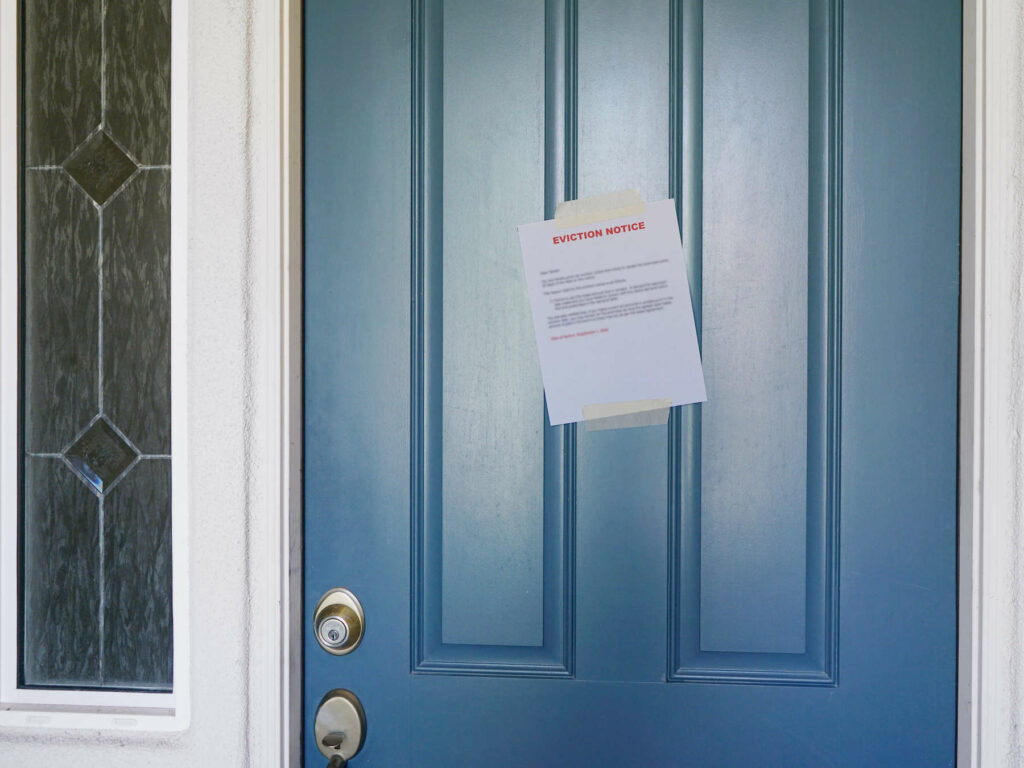
Vermont enacted legislation (VT S 333) that allows landlords and lenders to file new eviction and foreclosure actions, but requires the courts to stay the actions through 30 days past the end of the emergency period.
The Ohio legislature introduced legislation (OH HB 562/SB 297) that if passed would have prevented foreclosures and evictions during the COVID-19 state of emergency. Landlords would have still been able to file evictions in court, but the courts would have been prohibited from executing a writ of possession or removing the tenant from a residential property during the state of emergency. Notably, the legislation would have made it so a landlord would not be entitled to rental amounts that were unpaid during the state of emergency if the landlord filed a complaint during the state of emergency and received a writ of execution after the emergency terminated.
Enabling Local Government to Adopt Eviction Moratoriums
New Jersey legislators introduced a bill (NJ A 4228) that, as introduced, would allow local municipalities to adopt their own eviction prohibitions during the COVID-19 pandemic. If the legislation is enacted, it will retroactively cover missed payments for the covered period. (Note: companion bill NJ SB 2485 was amended by the Senate to place a stay on evictions—see above for more.)
Guaranteeing Forbearance
Introduced legislation (CA AB 2501) in California that did not pass would have allowed any borrower experiencing financial hardship during the state of emergency to request forbearance for any mortgage obligation. Mortgage servicers would have been required to grant forbearance for up to 180 days initially, after which the borrower could request up to another 180 days for up to 12 months in total.
Rent Freeze, Suspension, and Cancellation
Housing advocates in several states have been pushing for more aggressive policy solutions than moratoriums to avoid a cascade of eviction filings and foreclosures once the moratoriums end. Instead, they are pushing for a rent freeze and the suspension or cancellation of rent and mortgage payments.
States can see examples from the efforts at both the federal level and local level. For example, Congresswoman Ilhan Omar introduced federal legislation (H.R.6515) to cancel rent and mortgage payments, in addition to any housing debt accrued during the pandemic, and New York City froze rents for one year for over 2 million rent-stabilized units.
- A rent freeze means that tenants still pay rent each month, but landlords are not able to increase rent at the end of a lease for the duration of the declared period.
- Rent suspension or cancellation means that tenants do not owe rent at all for the duration of the declared period.
Legislators in Massachusetts introduced a bill (MA H 4718) that would have implemented a rent freeze across the state for the duration, and 30 days following the end, of the declared state emergency. The bill would have suspended the statewide prohibition on rent control and the state's preemption of local rent control. It would have allowed the Department of Housing and Community Development and local governments to issue, maintain, and enforce a rent freeze and/or rent control for the declared period.

Terms
Rent Freeze: Tenants still pay rent each month, but landlords are not able to increase rent at the end of a lease for the duration of the declared period.
Rent suspension or cancellation: Tenants do not owe rent at all for the duration of the declared period.
New York lawmakers introduced a bill that failed (NY A 10247/S 8139) that would have partially suspended rent for tenants who had experienced a significant loss of income due to the government-imposed restrictions related to COVID. The legislation would have required those tenants to pay up to either 30 percent of their income or their contractual rent—whichever is less—per month for 90 days following enactment. Landlords also would have been able to apply for relief if they lost rental income.
Another New York bill (NY A 10224/S 8125) would have fully suspended rent payments for any residential tenant or small-business commercial tenant that had experienced a loss of income or forced closure of business due to the pandemic. The bill would have waived rental payments for covered tenants and small businesses for 90 days, and provided the automatic renewal of leases that expired during the covered period. A complementary bill (NY A 10255) was introduced that would have established an assistance fund for “small landlords.”
A stronger rent cancellation bill that was introduced, but failed, in New York (NY S 8802/A 10826) would have fully canceled rent for all tenants and canceled mortgages for small homeowners for the duration of the declared state disaster emergency and 90 days following it. The bill would have additionally provided funding to assist and reimburse housing cooperatives, affordable housing providers, public housing authorities, and landlords.
Illinois legislators introduced an amendment that did not pass (COVID-19 Emergency and Economic Recovery Renter and Homeowner Protection Act) that would have cancelled rent and suspended mortgage payments for those who contracted COVID-19 or experienced a loss of income. The legislation would also have provided protection from retaliation for nonpayment of rent or mortgage, set up a relief fund for landlords and mortgagees negatively impacted by missed payments, and implemented restrictions on evictions for the period following the end of the emergency period.
Lawmakers in New Jersey introduced legislation (NJ A 3948) that would have required a landlord to suspend rent for 90 days upon request from a residential tenant. After 90 days, the tenant would have been able to request another 90 days of rent suspension. Tenants would not be required to pay the balance of their unpaid rent during the period of the suspension.
Rent and Mortgage Assistance
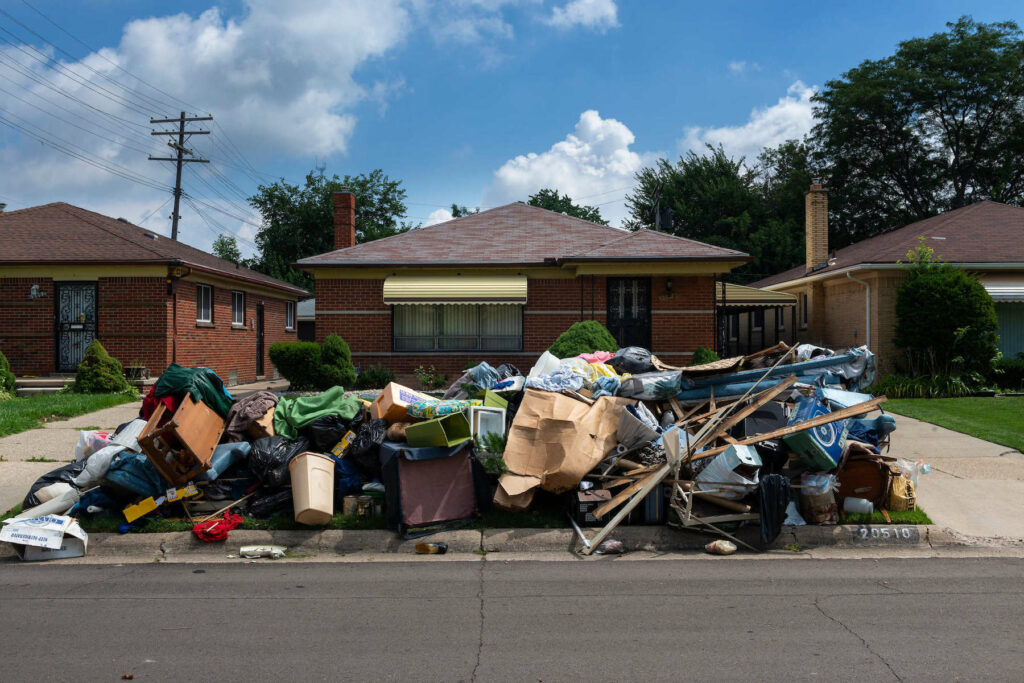
While at the federal level, advocates have pushed for $100 billion in emergency rental relief, and many states have set up their own rental and mortgage assistance programs. As eviction moratoriums end, millions of renters across the country will require assistance in order to pay not only their current rent, but unpaid rent accrued during the moratorium periods.
Several state legislatures have appropriated CARES Act funds toward rental and mortgage relief, while governors in multiple states, such as Minnesota, Michigan, and Washington, have also taken action to distribute funding toward assistance programs. While still impactful, advocates have raised concerns that current rental relief efforts will fail to meet the level of support necessary, especially without further federal support. For example, the city of Houston exhausted a $15 million rental fund in 90 minutes, and the city of Los Angeles’s $100 million fund only covered 14% of renters at risk of eviction.
Direct Assistance to Tenants or Landlords
Pennsylvania, Illinois, and Colorado enacted legislation (PA HB 2510, IL SB 264 sections 20 and 21, and CO SB 20-1410) establishing rental and mortgage assistance funds. Colorado appropriated $19.65 million to the program, while Pennsylvania allocated $150 million, and Illinois allocated $396 million. The Pennsylvania legislation provides assistance to renters and homeowners who either became unemployed or whose annual household income is reduced by 30 percent or more. The fund provides grants to homeowners and renters and covers 100 percent of their rent or mortgage—up to $750/month for renters and $1,000 for homeowners for a maximum of six months. The Illinois legislation reserves $100 million for areas disproportionately impacted by the pandemic. Utah enacted similar legislation (UT SB 3006), which established a fund of $20 million for residential housing assistance and $40 million for commercial rental assistance.
While the New Jersey legislature originally passed legislation (NJ S 2332) to establish a rental relief program, the bill was vetoed by Governor Phil Murphy. Instead, he created a program through executive action, and appropriated at least $100 million to rental assistance. Twenty percent of the program's funding is devoted to people with very low income who are homeless or at risk of homelessness and provides them with up to 12 months of rental assistance. The rest of the funding will be distributed on a lottery basis to households that earn below 80% of the area median income (AMI), were current on rental payments before March 1, 2020, and are able to prove they have been significantly impacted by COVID-19 through either layoffs, reduced work hours, or forced unpaid leave for childcare.
Legislators in New York (NY S 8419) enacted a bill that establishes a rental assistance fund of $100 million to provide aid to households that earn up to 80% of the area median income, had a rent burden both on March 1, 2020, and at the time of their application for assistance, and have experienced a loss of income during the coverage period. The program would cover the difference between a household rent burden (the amount of rent owed that is more than 30% of a tenant’s income) on March 1, 2020, and their rent burden at the time of their application for assistance.
Deferment of Rent
A bill backed by the landlord lobby in California (CA SB 1410), which passed the Senate but died in the Assembly, would have allowed landlords and tenants to enter into a “COVID eviction relief agreement.” In an agreement, the tenant could defer his or her rent for the entirety of the state of emergency and for an unspecified number of additional days following the state of emergency’s conclusion. The state would assume the debt burden, and provide the tenant until 2034 to repay the unpaid rent, or apply for loan forgiveness. In exchange, the landlord would receive ten years of tax credits equal to the unpaid amount and would have the opportunity to sell tax credits to investors. Landlords who enter into an agreement would be prohibited from taking an eviction action against the tenant during the state of emergency period.
Utility Assistance
Another bill in Colorado was enacted (CO HB 20-1412) that appropriated $4.8 million of funding from the CARES Act to provide direct utility bill payment assistance to low-income households facing economic hardship due to the pandemic.
Homelessness
Individuals and families experiencing or at risk of experiencing homelessness have a disproportionate risk of getting COVID-19. Without shelter, it is immensely difficult to self-isolate and take proper preventative measures like handwashing. According to the National Low Income Housing Coalition, people who are experiencing homelessness and contract COVID-19 are twice as likely to be hospitalized and two to three times more likely to die from the virus than the general public.
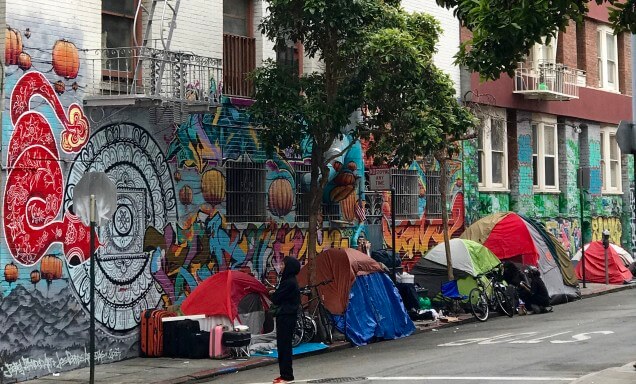
States have allocated money, often from CARES Act funds, to homeless shelters and assistance, and the legislative examples below are from states that allocated money in their budgets to homelessness directly in response to the pandemic. Please note that this is not inclusive of all legislation related to homelessness outside of the pandemic. Additionally, some of the above legislation establishing rental and mortgage assistance programs contains language that prioritizes distribution of funds to families at risk of homelessness.
Legislators in Alaska enacted legislation (AK SB 241) to provide financial assistance on a statewide, regional, or community basis as necessary to address or prevent homelessness caused by the pandemic.
The Pennsylvania legislature enacted a bill (PA HB 2510) that allocated $10 million for services for homeless residents. Similarly, lawmakers in Utah appropriated (UT HB 4001) $4.67 million from the CARES Act to the state’s Homelessness committee. Minnesota lawmakers passed legislation (MN HF 4531) that provides $15.2 million for additional shelter space and purchasing vouchers for motel and hotel rooms in order to allow homeless individuals to effectively shelter in place.
Broader Tenant Protections
2019 saw monumental movement for comprehensive tenant protections. Oregon became the first state in the nation to pass a statewide rent control bill, with California and New York adopting their own statewide legislation soon after. While the pandemic sidelined efforts to pass similar legislation in other states, several rent control and eviction protections bills were introduced across the country. Lawmakers in California and New York also introduced several pieces of legislation to strengthen their existing laws.
Repeal of Rent Control Preemption Laws
Legislators in at least four states introduced legislation that would repeal state bans on rent control legislation.
The Massachusetts legislature considered a bill (MA H 3924) that would have removed the state’s preemption of municipal rent control policies. The bill would have affirmatively allowed for the regulation of rents for multi-family housing and manufactured housing, condominium conversions, and no-cause evictions.

Lawmakers in Illinois introduced legislation (IL HB 255) that would have repealed the state’s 1997 Rent Control Preemption Act, which bans local units of government from controlling residential and commercial rents.
Similar efforts were introduced in Utah (UT HB 131) and Florida (FL HB 6013/SB 910).
New Rent Control Legislation
While several municipalities in New Jersey have implemented rent control, lawmakers introduced a statewide rent cap bill that did not pass (NJ A 1923). The bill would have established a cap on annual rent increases of 5 percent plus the percentage change in cost of living, or 10 percent—whichever was lower.
Legislators in Illinois (IL SB 3771) also introduced a bill that would have established statewide rent control and implemented a just-cause eviction protection for renters. The bill would have limited rent increases each year to 5 percent plus the change in cost of living, or 10 percent, whichever was lower, and limited legal evictions to nonpayment of rent and material breaches of a lease.
Strengthening Existing Legislation
New York legislators introduced several pieces of legislation to enhance tenant protections passed in 2019, in one of the boldest legislative efforts to protect renters in the nation. These bills included a just-cause eviction law (NY S 2892/A 5030), an expansion of the 2019 rent stabilization law (NY S 5040/A 7046), an end to landlord-friendly loopholes such as vacancy decontrol (NY S 2591/A 1198) and vacancy bonuses (NY S 185/A 2351), an end to permanent rent increases for capital improvements (NY S 3693/A 6322), and making preferential rents permanent (NY S 2845A/A 4349).
A recently enacted bill (CA SB 1190) in California would have strengthened enforcement mechanisms for the Tenants Protection Act of 2019. The bill would have directed city attorneys, district attorneys, or county counsel to prosecute violations of the legislation’s rent cap and just-cause eviction provisions, including awarding restitution and levying fines up to $20,000. However, this provision was stripped via amendment, and the bill as enacted focuses on the right of tenants to terminate tenancy based on a family member being a victim of a crime.
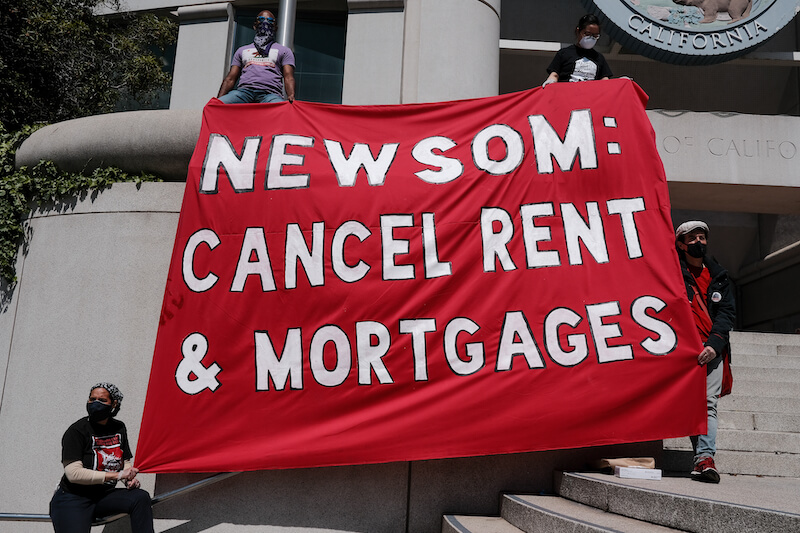
A ballot measure that failed in California (Rental Affordability Act) would have expanded the state’s rent control laws. If passed, the measure would have reformed major sections of the Costa-Hawkins Act. The ballot measure would have extended the state’s rent regulations to all buildings over 15 years old, allowed for rent control on single-family homes when an owner owns more than two homes, and enacted limitations on rent increases after a tenant vacates a unit.
Rent Control for Manufactured Housing
Michigan lawmakers introduced a bill (MI HB 5569) that would have exempted manufactured housing parks from the state’s rent control ban. It would also created a rent cap only applicable to manufactured housing parks equivalent to the most recent annual change in the Consumer Price Index.
Three pieces of legislation were introduced in California (CA SB 999, AB 2895, AB 2690) that would have expanded rent regulations to manufactured housing. SB 999, which passed out of the Senate but died in the Assembly, would have required new manufactured housing leases to be covered by local rent control ordinances. AB 2690, which passed out of the Assembly but died in the Senate, would have repealed exemptions for manufactured housing from local rent regulation. AB 2895, which also passed out of the Assembly and died in the Senate, would have applied the same rent cap and eviction protections under the Tenants Protection Act to manufactured housing starting in 2021.
Looking Forward
Over the past few years, housing justice advocates have increasingly pushed for reinvestment and construction of publicly owned housing in the United States. In 2019, Homes Guarantee launched an effort to guarantee the right to safe and affordable housing with a plan to build 12 million social housing units across the country, reinvesting in existing public housing, protecting renters and bank tenants, paying reparations for centuries of racist housing policies, and ending land and real estate speculation.
On the federal level, Rep. Ilhan Omar has introduced the Homes for All Act (H.R.5244) to repeal the Faircloth Amendment, which prohibits the construction of new public housing units, and invest $1 trillion to construct 8.5 million publicly owned units and 3.5 million units of privately owned, local, permanently affordable housing.
This year, lawmakers in Maryland introduced groundbreaking legislation (MD HB 1149) that would have funded the creation of a new state social housing program in order to construct an estimated 2,000 units of permanently affordable, government-owned, mixed-income housing. While the legislation failed, it presented one of the first pieces of legislation to construct social housing at the state level.
Additional Resources
- Eviction Lab: COVID-19 Housing Policy Scorecard
- Anti-Eviction Mapping Project: COVID-19 Housing Protection Legislation
- Homes Guarantee: COVID-19 Response
- Homes Guarantee: A National Homes Guarantee Briefing Book
- NLIHC: CARES Act Suggestions for State, Local, Tribal, and Territorial Elected Officials
- NLIHC: COVID-19 and Homelessness
- National Alliance to End Homelessness: The Framework for an Equitable COVID-19 Homelessness Response
- National Homeless Law Center: COVID-19 Protections for Homeless Populations
- PolicyLink: Centering Racial Equity in Housing
- National Housing Law Project: Protecting Renter and Homeowner Rights During Our National Health Crisis
- National Housing Law Project: Model Eviction Moratorium Act
Defending Our Democracy: State Solutions to Strengthen Election Security
American elections face dire and unprecedented security threats. Ahead of the 2016 election, Russia launched a two-pronged campaign to sow chaos and doubt into our democracy. Hackers “scanned” election systems in all 50 states and attempted to breach systems in at least 21 states—exposing major weaknesses in our election infrastructure, regulations, and personnel readiness. At the same time, Russian internet trolls orchestrated a divisive, digital disinformation campaign to agitate and misdirect the American public. Threats to American election security have evolved and proliferated since 2016 as enemies experiment with new tactics and inspire new malicious actors.
Declining public confidence is perhaps the greatest risk to our democracy’s health today and is a key objective of our adversaries. In a recent poll conducted for C-SPAN, 58 percent of voters expressed concern that foreign governments pose a threat to American elections, and a mere 31 percent of Americans have confidence that the government has done enough to protect elections from foreign interference. Conspiracy theories of vote rigging, often elevated by President Trump, have exacerbated negative perceptions of U.S. election integrity, particularly in the aftermath of close races, like Kentucky’s 2019 gubernatorial election, or administrative bungles, like the 2020 Iowa caucus. Whether perceived or legitimate, concerns that votes will not be counted accurately could negatively impact participation and increase the chance that voters and candidates will not accept the outcome of our elections.

In the face of these threats, states have largely been left to fend for themselves. Despite efforts to secure election systems and update technology across the country, state and local officials on the frontlines of our democracy are not uniformly prepared to defend against these attacks in 2020 and beyond. Federal legislation has been introduced to improve election security— offering more funding for states, mandating post-election audits, streamlining information sharing, and imposing stronger deterrents and penalties—but these efforts have generally stalled or failed.
In the absence of a strong, coordinated response from Washington, D.C., to protect our democracy, this crisis requires bold action from the states. While no one state can combat the multi-faceted and evolving set of security challenges we face, state legislators and administrators can work together as a network and lead by example to protect our elections, inspire public confidence, and spur stronger federal action. State legislators play a critical role, and the foundation of our electoral system relies on their active, informed, and vigilant engagement in election security. Whether using their platform to draw attention to solutions, supporting administrators, or passing legislation, state lawmakers have a responsibility to help strengthen election security and protect the present and future of American democracy. This brief aims to help state legislators meet this challenge.
To connect with experts, advocates, or peer legislators advancing the solutions covered here, or to receive support on legislative research, communications, or strategy, please contact the SiX Democracy Team at democracy@stateinnovation.org.
State Efforts To Protect The Affordable Care Act
After a decade of implementation, the Affordable Care Act (ACA) has made health insurance and health care more available and affordable for tens of millions of people — many of whom will rely heavily on its provisions to deal with the public health crisis brought on by COVID-19. In fact, some states have begun to reopen their health insurance exchanges to increase coverage during the coronavirus outbreak.
No matter what we look like, where we live, or what’s in our wallets, this pandemic reminds us that at our core, we are all just human. As our nation and our communities struggle to respond to this national emergency, we are reminded how important health care is to our long-term success. Our own health depends on the health of the person next to us, and the person next to them. Ensuring others can access care is how we take care of ourselves.
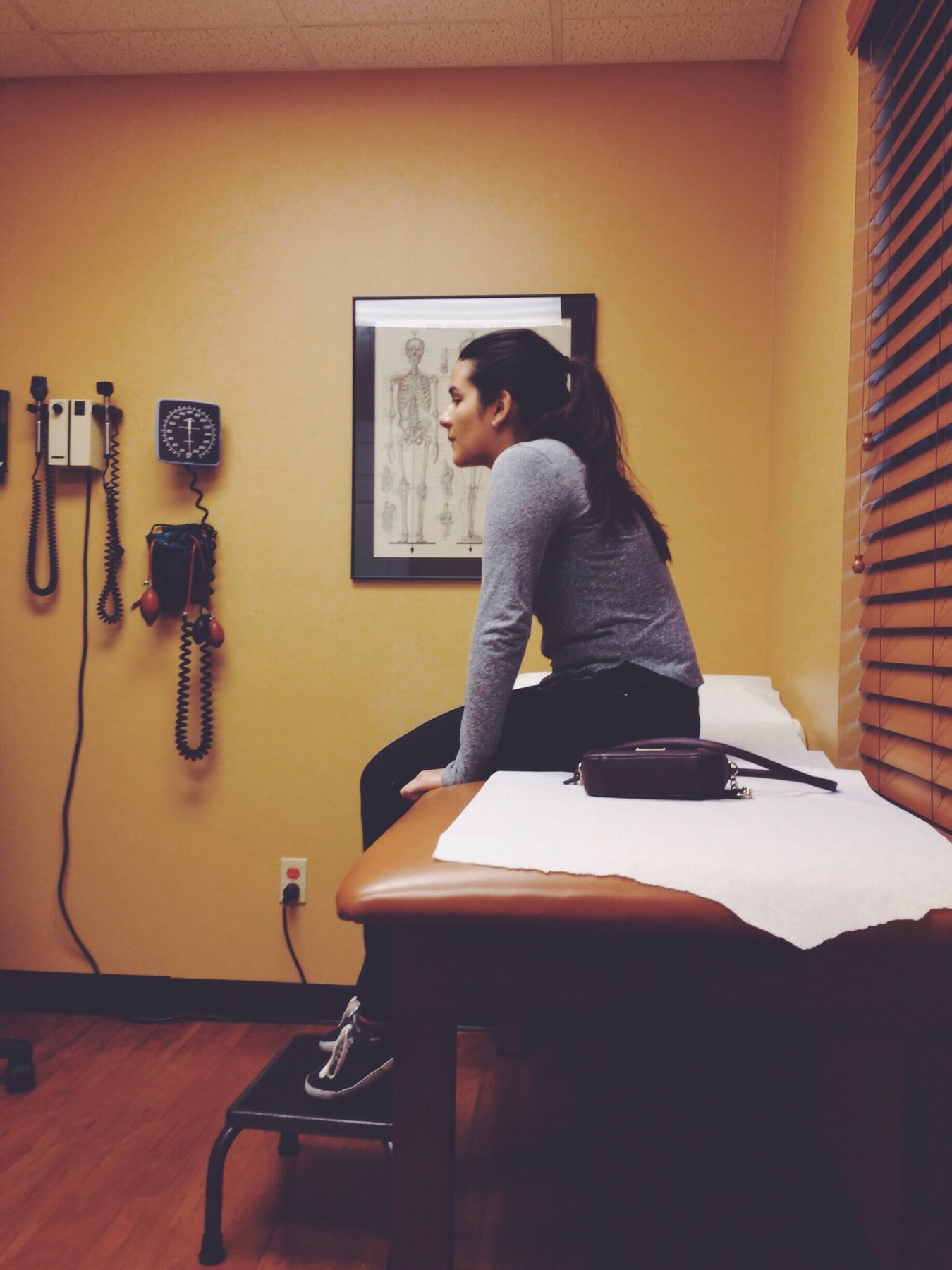
Over the last four years, the ACA has been challenged by the Trump Administration. When Congress did not overturn the legislation, the Administration simply refused to implement key parts of the law, weakened it through executive order, and sought to challenge it through the courts. Even in the midst of this crisis, Trump said that he is still trying to overturn the ACA, suing in court to take health care coverage away from tens of millions of Americans at a time when they need it most. If successful, this lawsuit would take coverage away from 20 million Americans and end protections for 130 million people with preexisting conditions. The uncertainty and misinformation continue to create dangerous confusion that divides us at this critical time.
State legislators across the country have taken action to protect and defend the health of their communities. They have joined together to implement proven solutions so that whether white, Black, Latino, or Asian, native or newcomer, everyone can get the care they need.
This memo outlines the attacks on the ACA, policy solutions at the state level, key messages, and additional resources for legislators.
Trump Administration Attacks on the ACA
The Trump Administration, with a Republican Congress, took actions to destabilize the ACA by increasing the risk of adverse selection; two examples of this include effectively ending the individual mandate by setting it at $0 and expanding short-term limited-duration (STLD) plans from a stopgap insurance to a cheaper and less regulated alternative to an ACA plan.
The table below from the Center on Budget and Policy Priorities highlights some of the actions the Administration has taken to undermine the health care law.
State Legislation to Defend the ACA
Through work with state and national health advocacy partners, legislators have led the way to protect key ACA components so that everyone can stay covered. The following are examples of relevant legislation.
Annual or Lifetime Limits: States stopped insurers from re-imposing lifetime limits on benefits, which before the ACA forced many insurance holders to choose between bankruptcy and gettingthe care they needed.
- New Jersey, Vermont, and Washington passed legislation to prohibit a health insurer from imposing annual or lifetime limits on essential health benefits or total benefits.
Preexisting Conditions: At least 14 states have taken steps to ensure health insurance providers cannot deny coverage to individuals with preexisting conditions.
- Delaware, Maine, Vermont, and Washington have enacted legislation to prohibit preexisting condition provisions in health insurance policies and to guarantee issue and availability of coverage.
Regulation of Non-ACA-Compliant Plans: States must regulate more than just the plans in their ACA marketplace, as non-ACA compliant-plans increase the risk of adverse selection and create a loophole for insurers to get around state ACA protections. Regulation of short-term limited-duration (STLD) plans have been loosened at the federal level, and it is up to the states to provide strong regulations.
- California prohibits health insurers from offering STLD plans in the state.
- Hawaii does not allow STLD plans to be issued to anyone who was eligible to purchase a plan during open enrollment on the ACA marketplace.
- Maryland limits STLD plans to no more than three months and does not allow them to be extended or renewed.

Expanded Premium Subsidies: States have enacted legislationto expand the low-income population eligible to receive premiumassistance subsidies.
- Massachusetts and Vermont subsidize individuals with incomes up to 300 percent of the federal poverty level (FPL).
- Washington subsidizes individuals up to 500 percent of the FPL.
- California provides about 25% of their advanceable premium assistance for individuals between 200 and 400 percent of the FPL and 75% allocated to individuals between 400 and 600 percent of the FPL.
Cost Sharing: State legislation limits cost sharing, which includes deductibles, copayments, andother non-premium related expenses.
- Maine, New Jersey, and Vermont have forced insurers to comply with cost sharing limits to the ACA dollar amounts on a fixed date.
- Washington applied a total dollar cap — $8,200 for self- only coverage and $16,400 for coverage that includes more than one individual — all indexed to the state’s average increase in per-person premiums.
Essential Health Benefits: States can ensure essential health benefitsremain covered.
- Maine, New Jersey, and Washington enacted legislation to protect emergency care, maternity and newborn care, mental health and substance abuse treatment, prescription drugs, preventative care and wellness programs, and more.
State Individual Mandate: Reinstating the individual mandate at the state level can provide an incentive for young and generally healthy individuals to remain in an individual insurance pool and lower premiumsby preventing adverse selection.
- California, New Jersey, and Vermont (and as amended) have enacted individual mandates.
Marketplace Competition: A handful of states either require certain insurers to participate or tie insurer eligibility for participation in public health plans (e.g., Medicaid, CHIP, and plans for public employees) to participation in the state’s ACA marketplace.
- Massachusetts, which as a state has one of the highest ACA insurer participation numbers, requires health insurance carriers with 5,000 or more enrolled individuals (including dependents) to “annually to file a plan with the connector for its consideration, which meets the requirements for the connector seal of approval.”
Anti-Discrimination: In 2019, the Trump Administration took steps to significantly weaken anti discrimination provisions within Section 1557 of the ACA. This would negatively impact LGBTQ rights (with potentially the greatest impact to transgender individuals), women’s reproductive rights, and language access for individuals with limited English proficiency.
- Hawaii, along with 21 other states, already has transgender protections codified into state law, so health insurance policies cannot discriminate based on actual or perceived gender identity.
- Oregon passed a law in 2019 to add broad anti-discrimination language to their insurance code in order to prevent discrimination based on actual or perceived race, color, national origin, sex, sexual orientation, gender identity, age, or disability.
Rating Factors: States have acted to make sure insurance companies cannot raise premium rates based on gender, health status, or occupation/industry.

Messaging
- As our nation and our communities struggle to respond the COVID-19 pandemic, it is clear that our own health depends on the health of the person next to us, and the person next to them.
- As we celebrate the tenth anniversary of the Affordable Care Act, which expanded care to millions of Americans, we need leaders who will step up to make sure that everyone white, Black, Latino, or Asian, native or newcomer — has access to care.
- In the midst of the COVID-19 crisis, the Trump Administration continues attempts to overturn the health care law. The lies, confusion, and misinformation from President Trump are dangerous.
- Now is the time for leaders in state legislatures to unite across differences and make policy choices that help everyday people — not the richest 1% and a handful of corporations.
- We must ensure that everyone has access to affordable, quality care by creating a health care system that works for everyone — no exceptions.
Additional Resources
Association of State and Territorial Health Officials (ASTHO)
- “Section 1332 Waivers: An Opportunity to Increase Access to Health Services Through Affordability” (June 2019)
- “States Act to Ensure Access to Care with Affordable Care Act in the Courts” (December 2019)
- “Progress on Health Coverage Disparities Stalls, Demanding a Data Refresh and Targeted Strategies” (March 2020)
“The Advocate’s Guide to: Health Insurance Reform”
- “The Advocate’s Guide to: Pre-Existing Condition Protections” (March 2019)
- “The Advocate’s Guide to: Essential Health Benefits” (April 2019)
- “The Advocate’s Guide to: Short-Term Limited Duration Insurance” (June 2019)
- “States Step Up to Protect Insurance Markets and Consumers from Short-Term Health Plans” (May 2019)
- “The ACA’s Innovation Waiver Program: A State-by-State Look” (March 2020)
- “What Is Your State Doing to Affect Access to Adequate Health Insurance?” (February 2020)
Paid Family and Medical Leave Playbook
The Family and Medical Leave Act of 1993 (FMLA) was a momentous piece of federal legislation that secured the right of working Americans to take up to 12 unpaid weeks off of work for the birth of their child, to care for their newborn or newly adopted child, to care for a loved one with a serious illness, or to respond to their own serious illness. Its passage represented a consensus that hardworking individuals should not lose their jobs if they become seriously ill, and new parents should be given time to recover from pregnancy and bond with their new child.
However, nearly 30 years later, our country has fallen behind the rest of the world in paid leave protections. Approximately 40% of Americans do not qualify for leave under the FMLA at all, and many of those who are covered cannot afford to take unpaid leave without falling into financial distress. The United States remains the only wealthy nation in the world that does not guarantee any form of paid leave.
For working families who are living paycheck to paycheck, lack of access to paid family and medical leave policies can have dramatic effects. For example, in the year following a child’s birth, women who are able to take paid leave are 39% less likely to need public assistance than those who did not take leave. And a study on the impact of California’s paid family leave program found that paid family and medical leave decreased the risk of poverty for new mothers by just over 10%. Ultimately, nearly all workers need to take time away at some point to deal with a serious personal or family illness or to care for a new child.
Laws providing paid family and medical leave allow workers to meet these needs without jeopardizing their economic security, which strengthens working families and thereby grows the economy.
Our Policy Playbook is a summary of resources that we have compiled from state and national advocates, organizers, and leading policy organizations across the country. Here you will find communications and messaging guidance, a menu of policy solutions, legislative language, and national organizations and experts who can support your efforts.
Ending Prison Gerrymandering
During the decennial census, the Census Bureau, state, and local governments have traditionally counted incarcerated individuals as residents of the areas where they are imprisoned, rather than in their home communities. This data is then used for redistricting—resulting in distorted local and state representation and hidden transfers of political power to communities that host prisons. By inflating the apparent size and therefore the political influence of areas with incarceration facilities, prison gerrymandering violates our constitutional right to equal political power based on population size. This problem is especially urgent and harmful in today’s era of mass incarceration and limits the voices and power of communities of color.
Despite advocacy to the change the practice, the 2020 Census will once again count prisoners where they are incarcerated. While the Census Bureau is best positioned to end prison gerrymandering permanently and on a national scale, state action is needed to address this problem in the meantime— particularly ahead of the next redistricting cycle.
As of January 2020, seven states had enacted legislation to prohibit prison gerrymandering and count incarcerated individuals at their last known home address in the state: California (2011), Delaware (2010), Maryland (2010), Nevada (2019), New Jersey (2020), New York (2010), and Washington (2019). Colorado, Michigan, Tennessee, and Virginia have addressed prison gerrymandering at the local level, either by barring or discouraging county and local governments from counting prison populations when drawing local districts (e.g., for town or school board elections).
State legislators have a crucial role in advancing accurate and equitable redistricting that strengthens the voices of marginalized black, white, and brown communities. To help end the harmful practice of prison gerrymandering, the State Innovation Exchange (SiX) and Prison Policy Initiative have put together the following brief with messaging guidance, policy design considerations, practical lessons on bill drafting, coalition building, and implementation, and example legislation.
Download the full report to read more.
Surprise Medical Billing Research Brief
Surprise medical billing refers to when a consumer is unaware that health care services will be charged at out-of-network rates, whether by their insurer or by the out-of-network provider. For example, if a patient receives emergency care at an out-of-network hospital or care from an out-of-network provider at an in-network hospital, they could receive a surprise medical bill.
As we face the first global pandemic of the 21st Century, our nation confronts a health care system that is not prepared to deal with an infectious disease at this scale. One of the many challenges we face will be patients who delay or defer care because they are unsure if their visit to a testing facility, urgent care center or emergency room will result in a surprise bill, not covered by their insurance.
57% of patients have experienced a surprise medical bill
2018 University of Chicago survey
Surprise medical bills have two main components, according to a 2019 Health System Tracker brief from Peterson Center on Healthcare and the Kaiser Family Foundation:
- The higher amount a patient owes due to the difference in cost-sharing levels between in-network and out-of-network services. “For example, a preferred provider health plan (PPO) might require a patient to pay 20% of allowed charges for in-network services and 40% of allowed charges for out-of-network services. In an HMO or other closed-network plan, the out-of-network service might not be covered at all.”
- An additional amount the physician or other provider may bill the patient directly, which is known as “balance billing.” “Typically, health plans negotiate discounted charges with network providers and require them to accept the negotiated fee as payment-in-full. Network providers are prohibited from billing plan enrollees the difference (or balance) between the allowed charg and the full charge. Out-of-network providers, however, have no such contractual obligation. As a result, patients can be liable for the balance bill in addition to any applicable out-of-network cost sharing.”
The problem is widespread: A 2018 University of Chicago survey found that 57% of respondents had experienced a surprise medical bill. Additionally, this survey found that 86% of all respondents blamed health insurance companies and 82% blamed hospitals for surprise medical bills. A large study published in 2020 that looked at over 347,000 surgical patients found that over 20% had incurred out-of-network charges.
The problem has serious consequences, especially for communities of color: Almost half of respondents in a Commonwealth Fund survey said that they could not cover an unexpected medical bill of $1,000 within 30 days. And this can have a disproportionate impact on marginalized communities, with Black (63%) and Hispanic (59%) respondents reporting higher inability to cover such a bill compared to Non-Hispanic White respondents (40%). This issue also impacts the overall cost of employer-sponsored insurance plans, according to a December 2019 article in Health Affairs.
Download the full report to read more.
Wage Theft Playbook
Wage theft is a catchall term for a range of situations in which an employer fails to pay an employee. It can take many forms—from employers paying employees less than the minimum wage or failing to pay overtime to withholding tips, not providing employees with their final paycheck, or requiring employees to work off the clock. These forms of theft hurt working families by threatening basic living standards and causing economic instability, reducing tax revenues, and harming local economies and businesses that follow the rules.
To improve upon federal protections, states have enacted legislation to address wage theft, including increasing the cost to employers for violating wage and hour laws, targeting bad actors to prevent repeat offenses, empowering state and local wage enforcement authorities, and improving small claims court administrative processes for wage theft cases. While these measures have begun to address the problem in certain states, wage theft remains a significant issue in most of the country, with one study finding that 68% of respondents had experienced at least one pay-related violation in the last week alone.
Wage theft covers a variety of infractions that occur when working people do not receive their legally or contractually promised wages.

Our Wage Theft “Policy Playbook” is a summary of resources that we have compiled from state and national advocates, organizers, and leading policy organizations across the country. Here you will find communications and messaging guidance, a menu of policy solutions, legislative language, and national organizations and experts who can support your efforts.
As a reminder, legislators are always encouraged to work with state partners to assess the local and state dynamics and to craft the strongest and most feasible legislation for their state—ensuring alignment with the work of groups in the field. On a related note, this resource is not meant to supersede working with advocacy organizations and policy experts to chart the most effective path for introducing such legislation. To get connected to state and national groups or individual experts on this topic, or to receive support on legislative research or drafting, please contact SiX Action at: helpdesk@stateinnovation.org.
Download the full report to read more.
Student Debt Reform in the 2019 State Legislative Sessions
Tuition and fees at both public and private colleges and universities have never been higher, and the cost of loans taken out by American students for higher education has never been greater. Close to 70 percent of college students graduate with debt, and the collective student loan debt in the United States in 2019 is now over $1.5 trillion. Many of the student debt holders face financial instability, hold down multiple jobs to make ends meet, and are forced to delay financial investments like homeownership and retirement savings. This debt has a wide effect not just on the student debt holders, but across the economy.
Adding to concerns over the student debt crisis are widespread reports of potential predatory lending practices (including the use of subprime loans with expected default rates as high as 92 percent) by student loan providers across the United States. In addition, borrowers face potentially unethical behavior from for-profit colleges and universities, which account for a disproportionately high share of student debt. Students who attend for-profit institutions are at higher risk of defaulting on their loans. In fact, 44 percent of borrowers at these schools faced some type of loan distress five years into repayment. These for-profit institutions are also much more likely to declare bankruptcy (95.5% of colleges that have closed since 2013 were for-profit), leaving students without access to a higher education or even credits that can be transferred to other schools.
Download the full report to read more.
The Growing Shadow of State Interference: Preemption in the 2019 State Legislative Sessions
Today, many of America’s cities, towns, and counties have less power than they did at the start of the year to protect the health and safety of their communities or to respond to the unique needs and values of their residents. That’s because between January and June 2019, state legislatures across the nation continued a troubling trend of passing more laws forbidding or “preempting” local control over a large and growing set of public health, economic, environmental, and social justice policy solutions. This legislative session, state lawmakers made it illegal for locally-elected officials to enact a plastic bag ban in Tennessee, raise revenues in Oregon, regulate e-cigarettes in Arkansas, establish minimum wages in North Dakota, protect county residents from water and air pollution produced by animal feedlots in Missouri, or protect immigrants from unjust incarceration in Florida.
Some states this session went further, with bills aimed at abolishing core powers long held by cities, including their ability to negotiate and set employment terms with their own contractors, enact and implement local land use laws, and control their own budgets and finances.
From 2011 – 2019, the quantity and reach of new preemption laws has skyrocketed.
But the tide may be turning. The 2019 legislative session also saw an unexpected and unprecedented number of bills filed to repeal state preemption laws and return legal authority for local decision-making in several states. Bills to repeal state preemption of local minimum wage laws, rent control, tobacco tax, oil and gas well regulation, plastic bag bans and broadband were introduced in legislatures across the country. Earlier this year, Colorado became the first state to legislatively repeal minimum wage preemption, countering a decade-long trend of state overreach. Also, in 2019, cross-issue coalitions working at the grassroots succeeded in killing or weakening preemption bills and more state and local lawmakers pushed back on state interference and became public champions of local democracy. This end-of-the 2019 session report, a joint product of the Local Solutions Support Center (LSSC) and the State Innovation Exchange (SiX), is not an encyclopedic scan of every state preemption bill passed in 2019. It is, instead, an illustrative look at the preemption trends observed this session.
Download the full report to read more.


